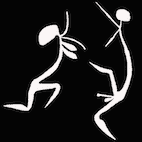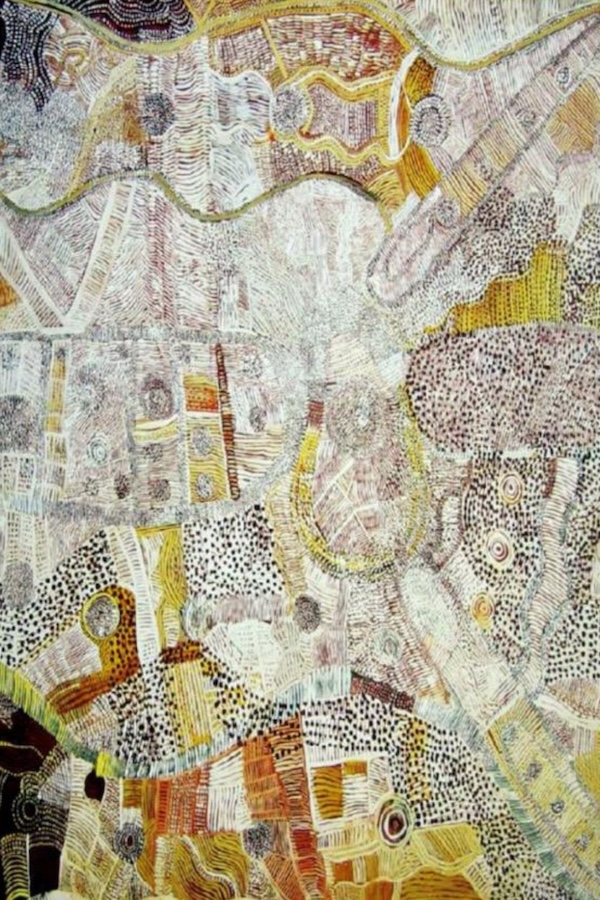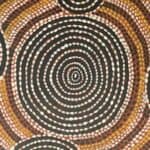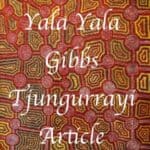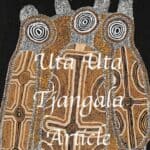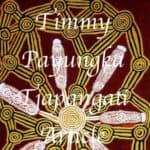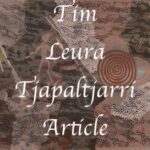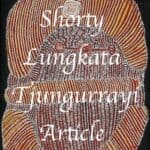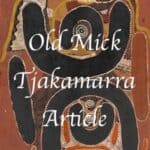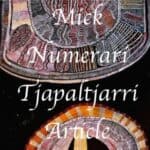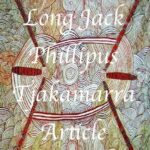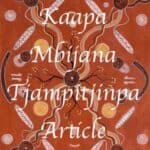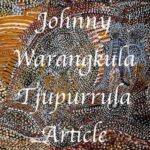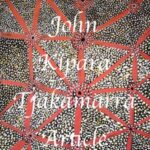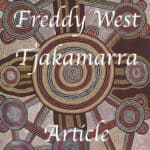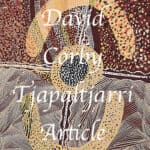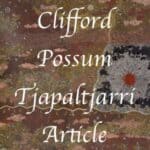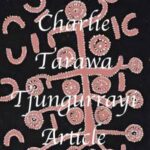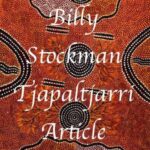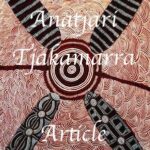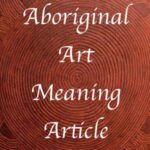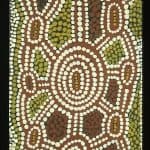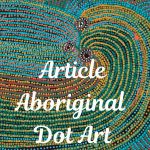Johnny Warangkula Tjupurrula Artworks
Johnny Warangula Tjupurrula artworks first gained national attention in 1997 when his seminal work Water Dreaming at Kalipinypa (1972) set a new benchmark for the auction price of an Aboriginal artwork.
When the painting changed hands again in June 2000—this time in a private sale—it achieved an even higher price, placing Warangula’s work alongside the most valued contemporary Australian artists of the period.
Despite this recognition, media portrayals at the time largely framed Warangula as a passive casualty of an exploitative art market, rather than acknowledging his creative agency. Few took the opportunity to explore the distinctive aesthetic and cultural qualities that underpin Water Dreaming, a work now widely regarded as a masterwork of the Papunya Tula movement.
I specialize in the private treaty sale of early and significant artworks by Johnny Warangula Tjupurrula. If you have an example that you wish to have appraised please feel free to send me images and dimensions.
Johnny Warangkula Tjupurrula Artworks 1971
The Origins of Papunya Art: Early Johnny Warrangkula Paintings (1971)
The Papunya Tula art movement began in 1971, marking a pivotal moment in the history of contemporary Indigenous Australian art. In its formative stages, the Western Desert painting style—now recognized globally—was still evolving. One of its foundational figures, Johnny Warrangkula Tjupurrula, played a significant role in shaping its visual language.
Warrangkula’s earliest works from 1971 closely reflected traditional Aboriginal iconography. These paintings often mirrored the sacred designs found on churinga (ceremonial objects), incorporating similar symbolic motifs. At this stage, dotting, a technique now synonymous with Papunya art, was used sparingly. When employed, the dots primarily served as infill between key design elements, rather than as a central compositional feature—something that would dramatically change in his later works.
Traditional Materials and Natural Pigments
The color palette of these early Papunya paintings remained deeply connected to Country. Artists used natural pigments such as red and yellow ochre, white pipe clay, and black charcoal, resulting in a warm, earthy aesthetic. Rather than canvas, artworks were often painted on found materials like masonite, chipboard, or composition board—affordable and accessible substrates in remote communities.
The Role of Geoff Bardon and the Stuart Art Centre
Many of these early Papunya artworks were distributed through the Stuart Art Centre, with some pieces bearing handwritten labels by art teacher and advocate Geoff Bardon, who played a crucial role in encouraging and documenting the movement. Bardon’s support helped bring Papunya art to a wider Australian and international audience, laying the groundwork for its future success.
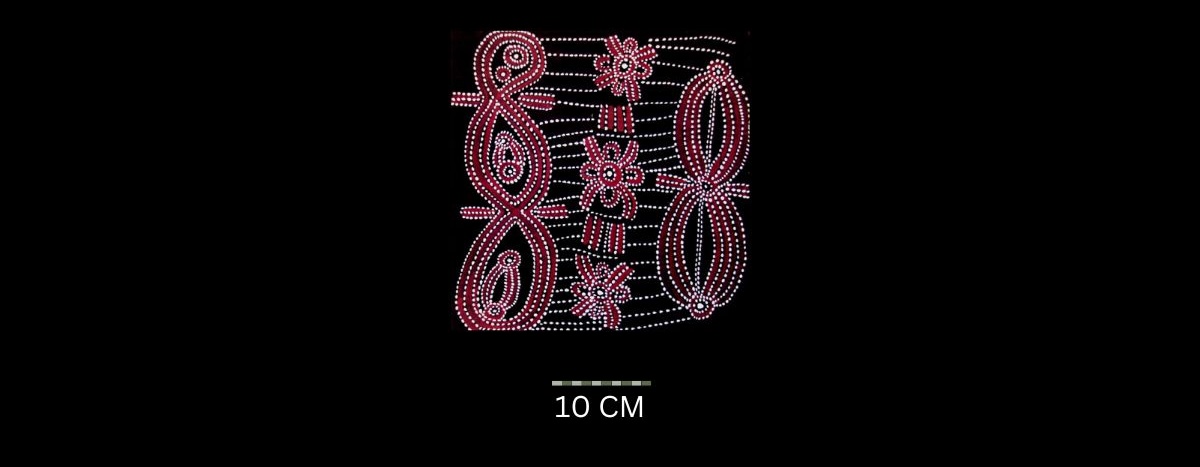
Womens Dreaming 1971
Synthetic polymer powder paint on composition board, bears title, Stuart Art Centre consignment number 4, painting number 2 on the reverse,
29 x 28.5 cm
Hammerprice: A$11,000

Mala (Rufous Hare Wallaby) Dreaming, 1971
Synthetic polymer powder paint on composition board,
23 x 34.5 cm
Hammerprice: A$54,000
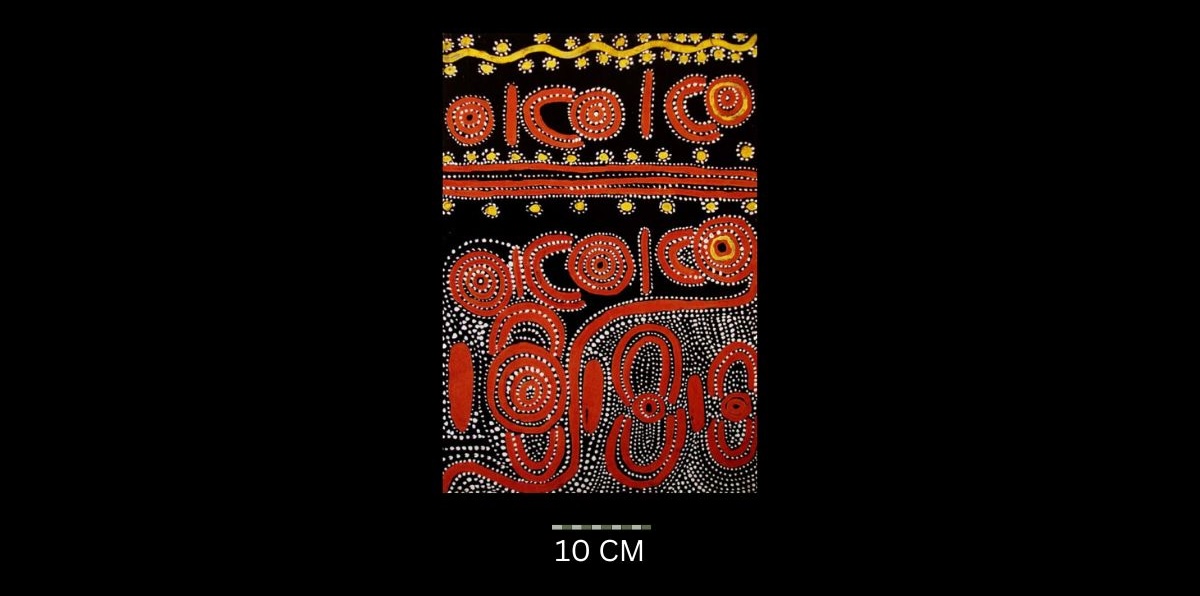
Wild Orange Story 1971
Synthetic polymer powder paint on composition board, bears consignment number 5054 on the Stuart Art Centre label on the reverse,
45 x 30.5 cm
Hammerprice: A$20,000
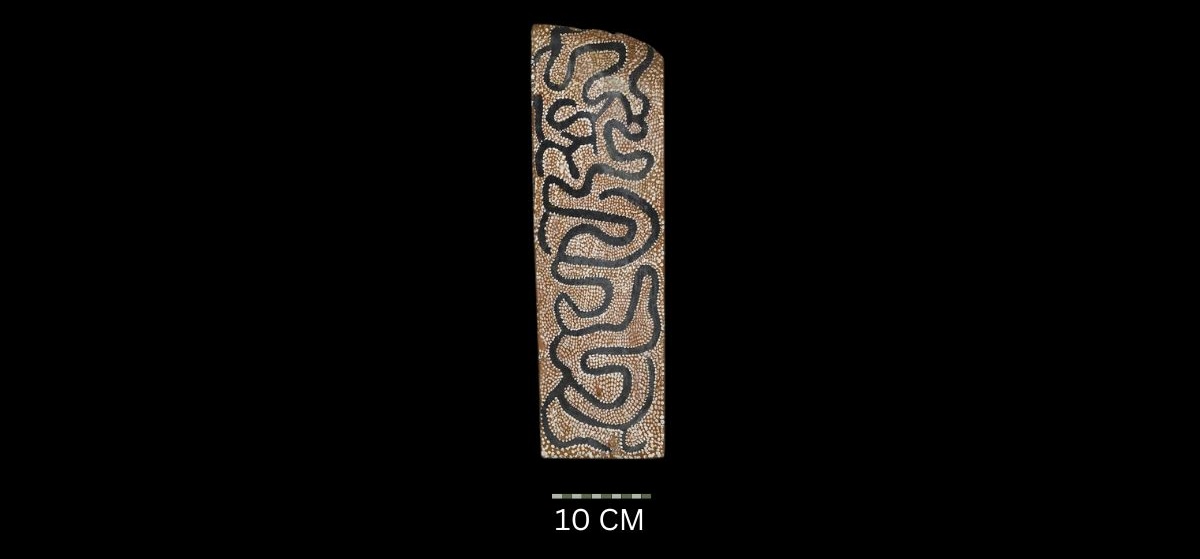
Water Dreaming and Lightning (1971)
Natural earth pigments and bondcrete on composition board,
40 x 15 cm
Hammerprice: A$26,000
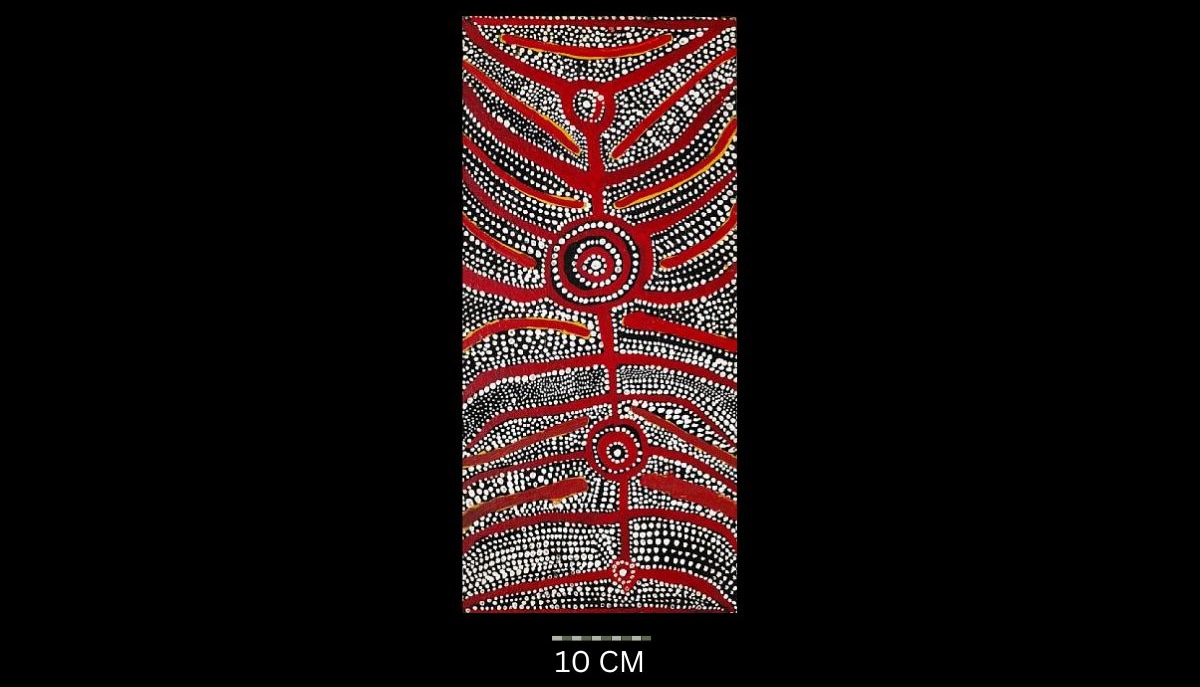
Untitled (Water Dreaming at Kalipinypa) 1971
Enamel on composition board, bears artist’s name, Stuart Art Centre ‘Con1 no.9’ and Art Promotion Papunya Incorporated label on the reverse,
59 x 28 cm
Hammerprice: A$35,000
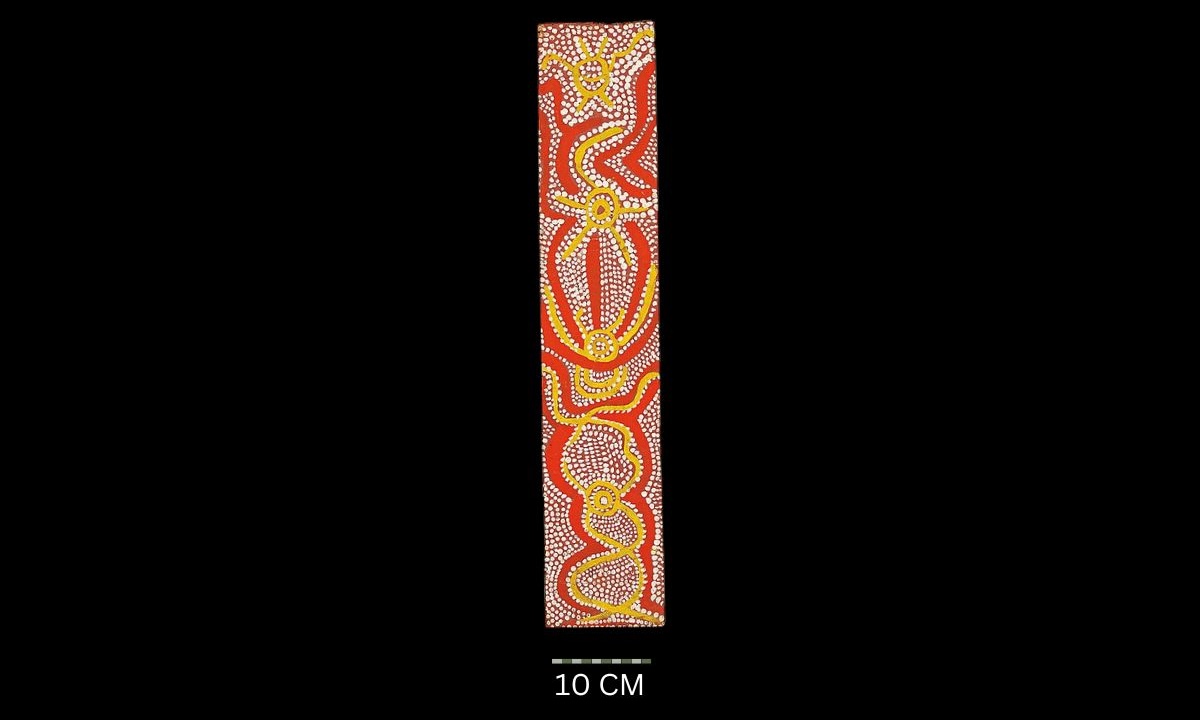
Water Dreaming (1971)
Synthetic polymer paint on composition board,
60.3 x 12.1 cm
Hammerprice: A$30,000
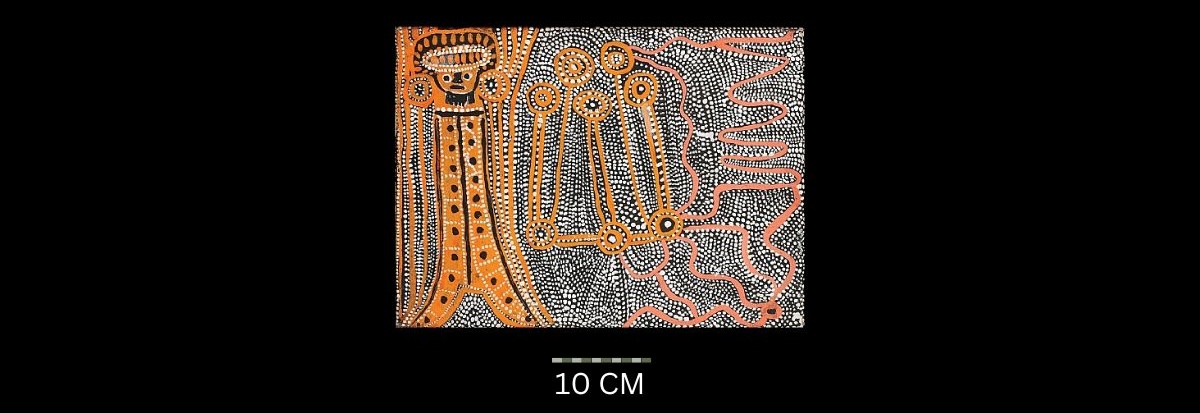
Untitled 1971
Synthetic polymer paint on canvas,
30.5 x 41 cm
Hammerprice: A$41,000
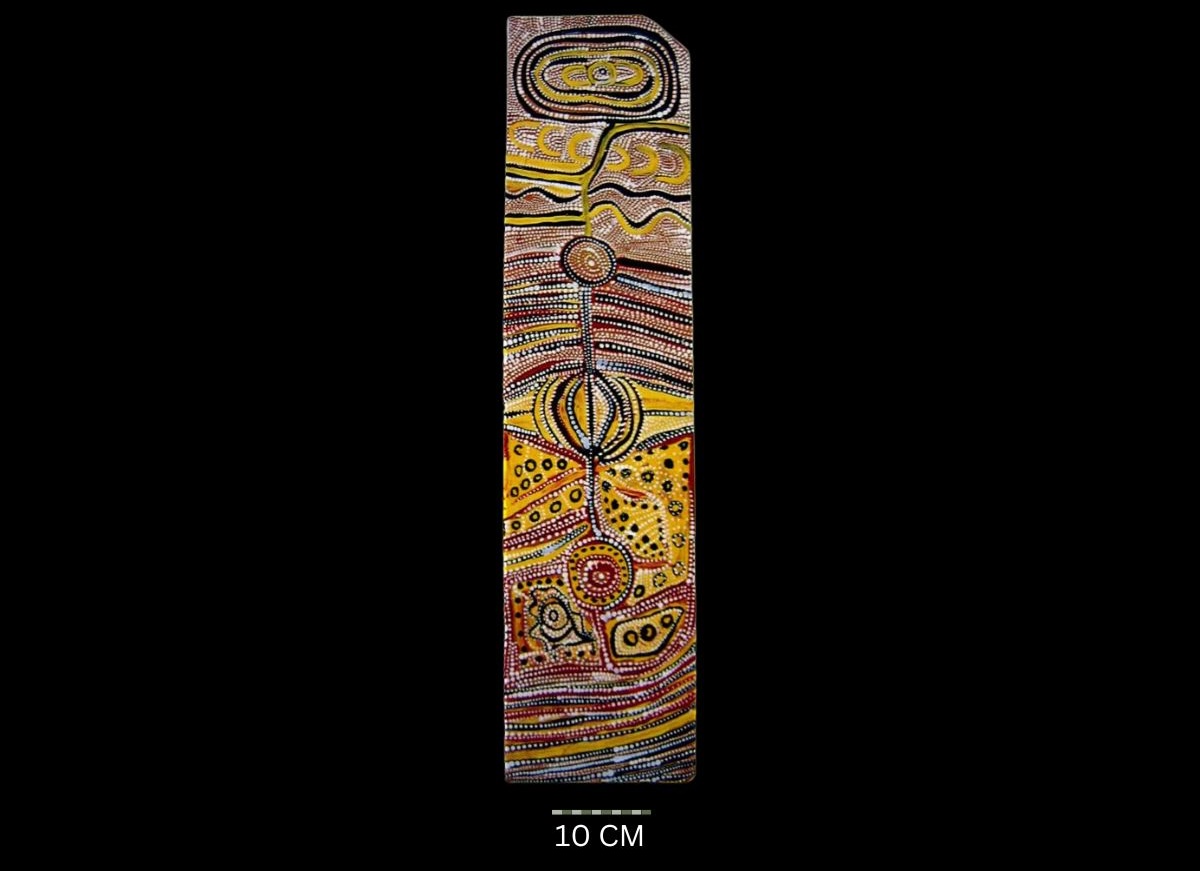
Water Dreaming 1971
Enamel on composition board, bears artist’s name, Stuart Art Centre consignment number and diagram and explanation by Geoff Bardon on label on the reverse,
76.5 x 19 cm
Hammerprice: A$22,000
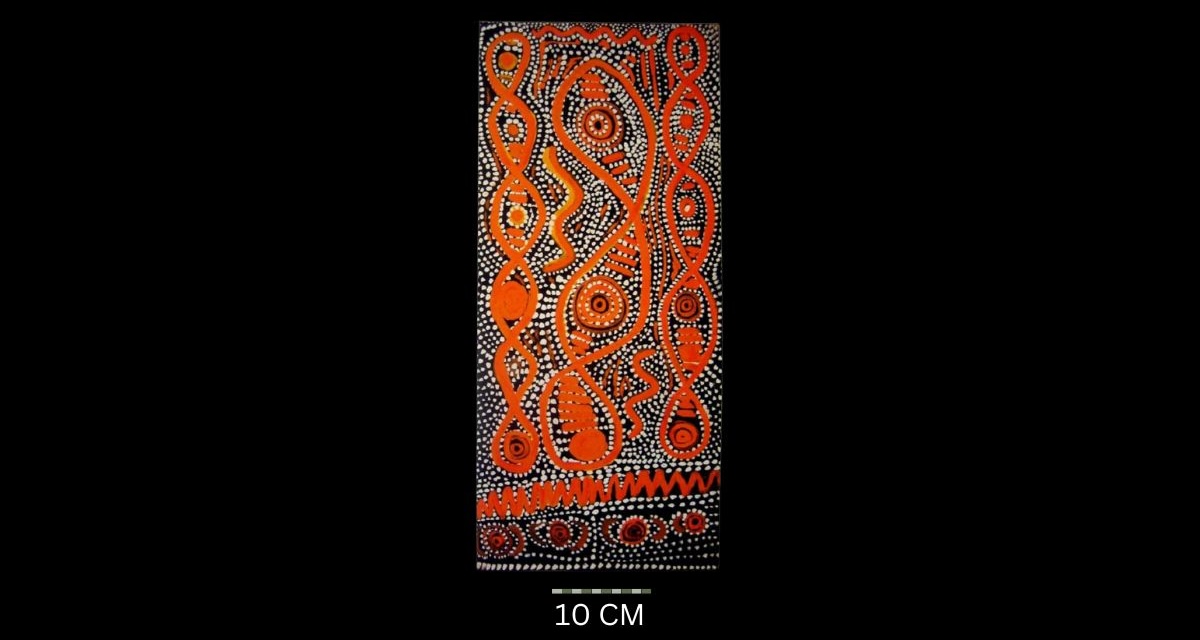
Water Dreaming at Kalipinypa 1971
Synthetic polymer paint on paper board, bears Stuart Art centre number ‘1 Con No 6’ on the reverse on frame,
54.5 x 24.5 cm
Hammerprice: A$24,000
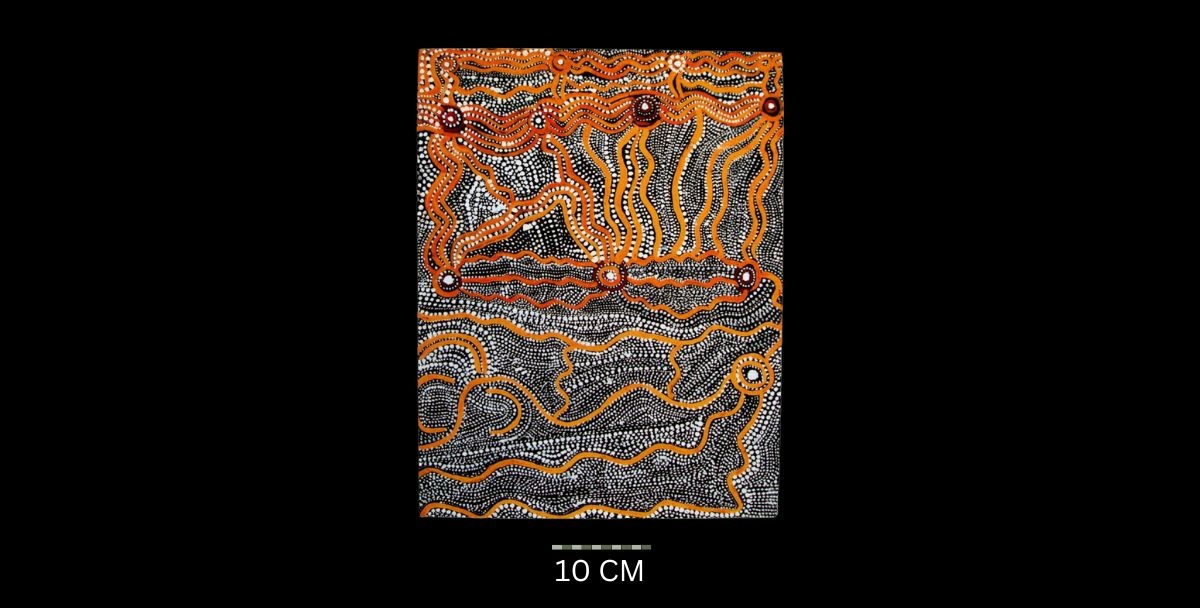
Water Dreaming 1971
Synthetic polymer paint on composition board, bears artists name ‘Johnny W’ (sic) and area, ‘Papunya’ in pencil on the reverse, together with a typed label prepared by Geoff Bardon,
46 x 35.5 cm
Hammerprice: A$32,000
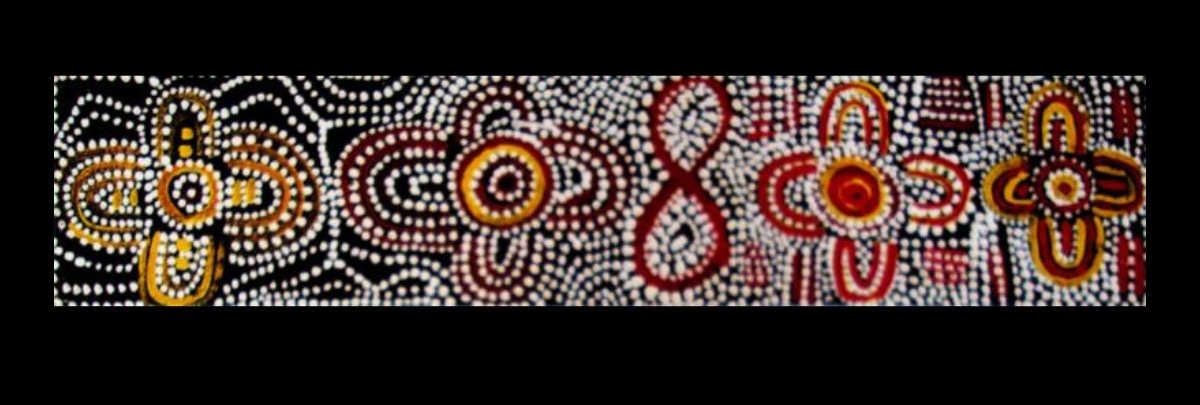
Water Dreaming 1971
Synthetic polymer and enamel paint on composition board
No size recorded
Hammerprice: A$10,000
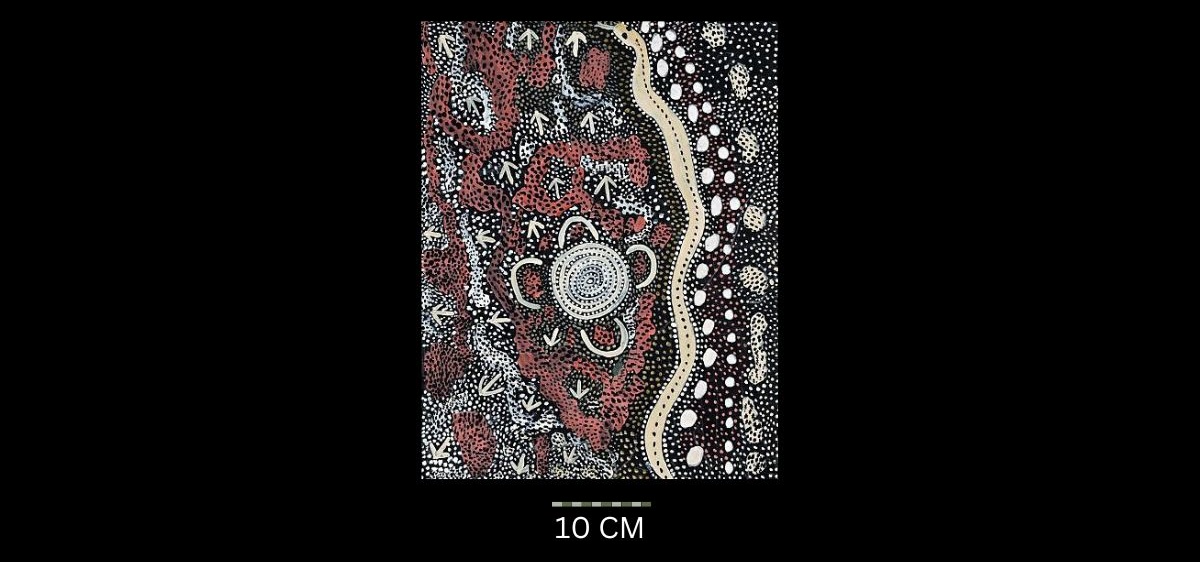
Tjikari 1971
Synthetic polymer paint on composition board,
45.5 x 35.5 cm
Hammerprice: A$18,000
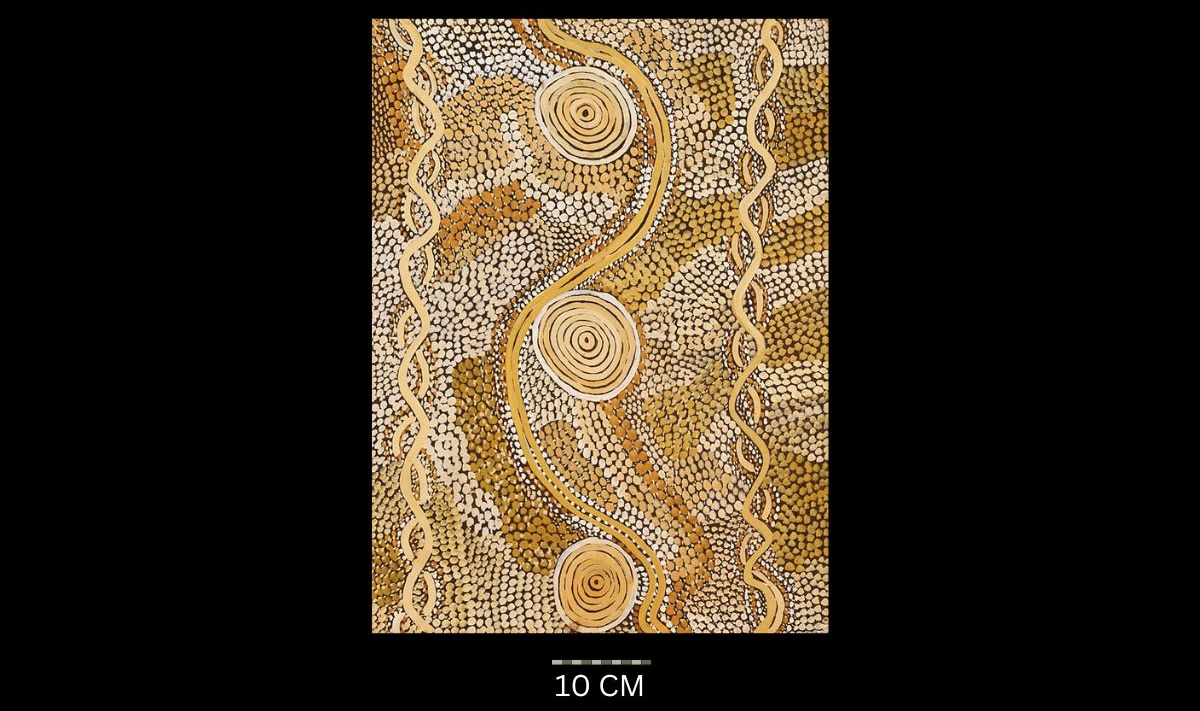
Bush Tucker After Rain (1971)
Synthetic polymer paint on composition board,
61 x 45.7 cm
Hammerprice: A$22,000
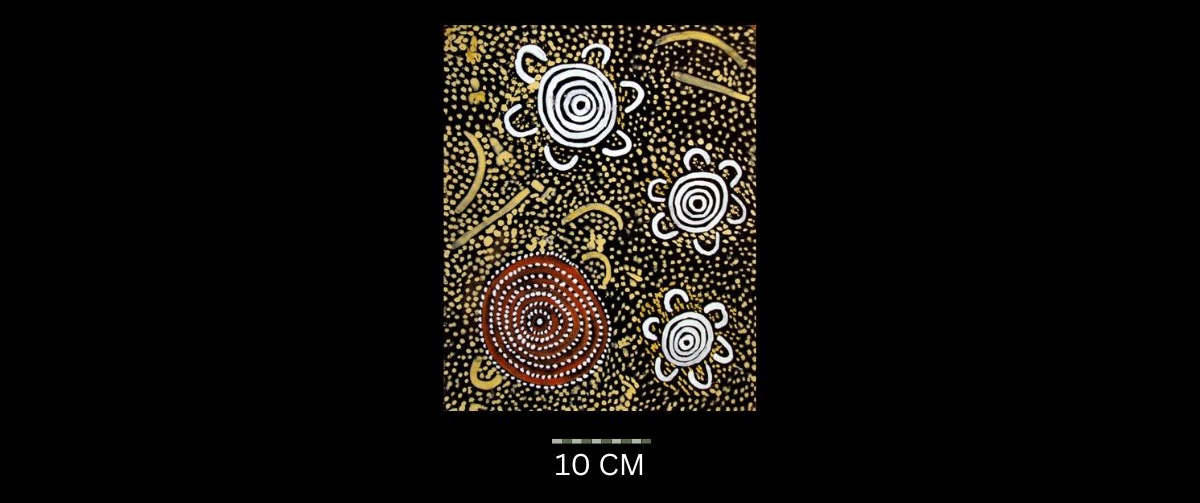
Old Mans Story 1971
Synthetic polymer powder paint on composition board, bears Stuart Art Centre certificate with title, artist’s name,
38 x 31 cm
Hammerprice: A$9,000

Old Man’s Corroboree Story, 1971
Synthetic polymer paint on composition board,
45.5 x 30 cm
UNSOLD
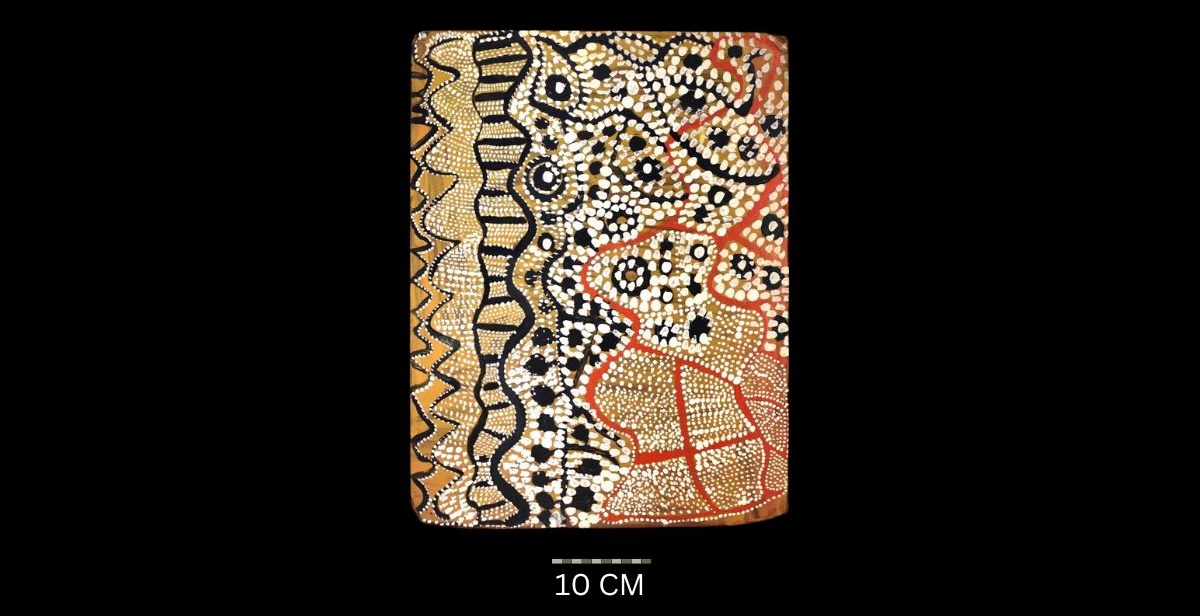
Water Dreaming at Tjikari, 1971
Synthetic polymer paint on board,
38 x 50.5 cm
UNSOLD
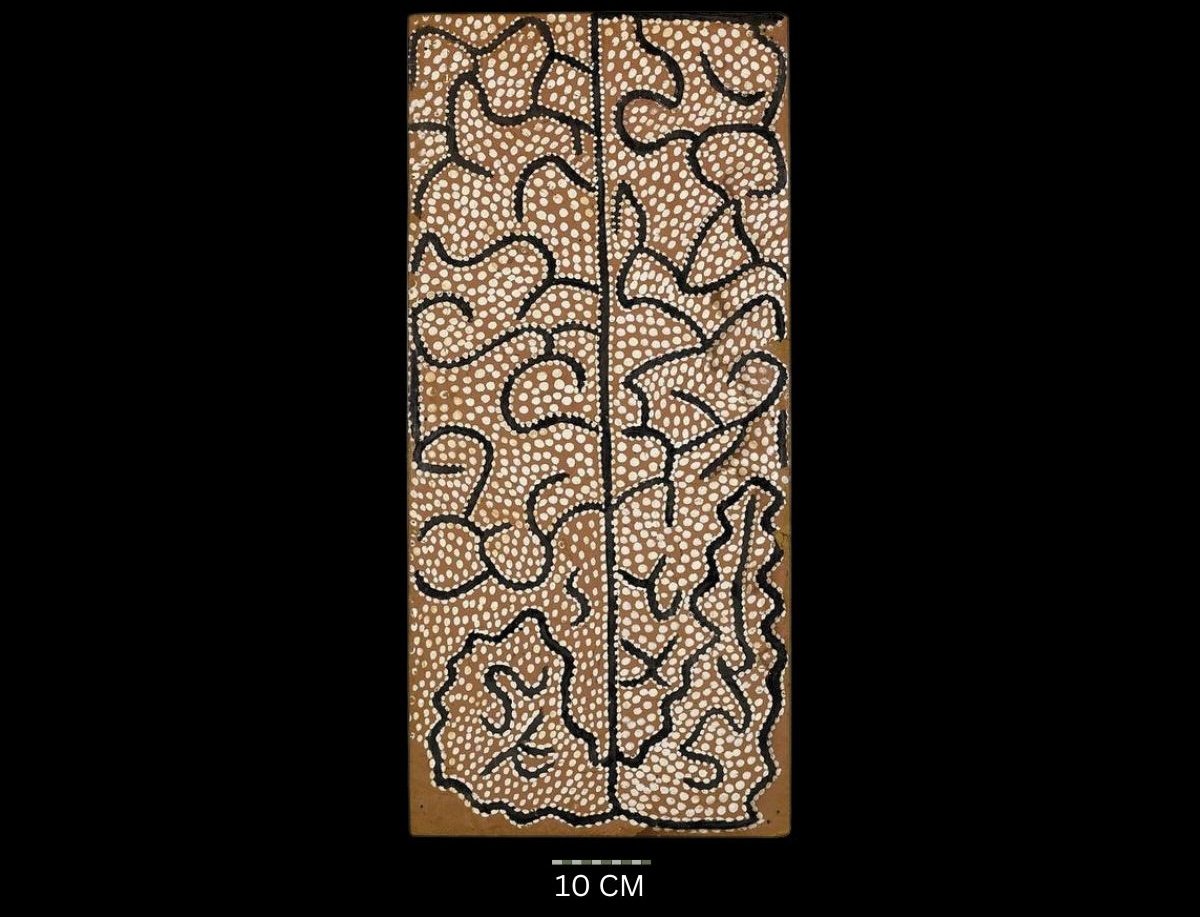
Travelling Water Dreaming with Lightning (1971)
Natural earth pigments and bondcrete on composition board,
83 x 38 cm
Hammerprice: A$50,000

Untitled, Circa 1971-1972
Synthetic polymer paint on board,
69 x 20 cm
Hammerprice: A$18,000
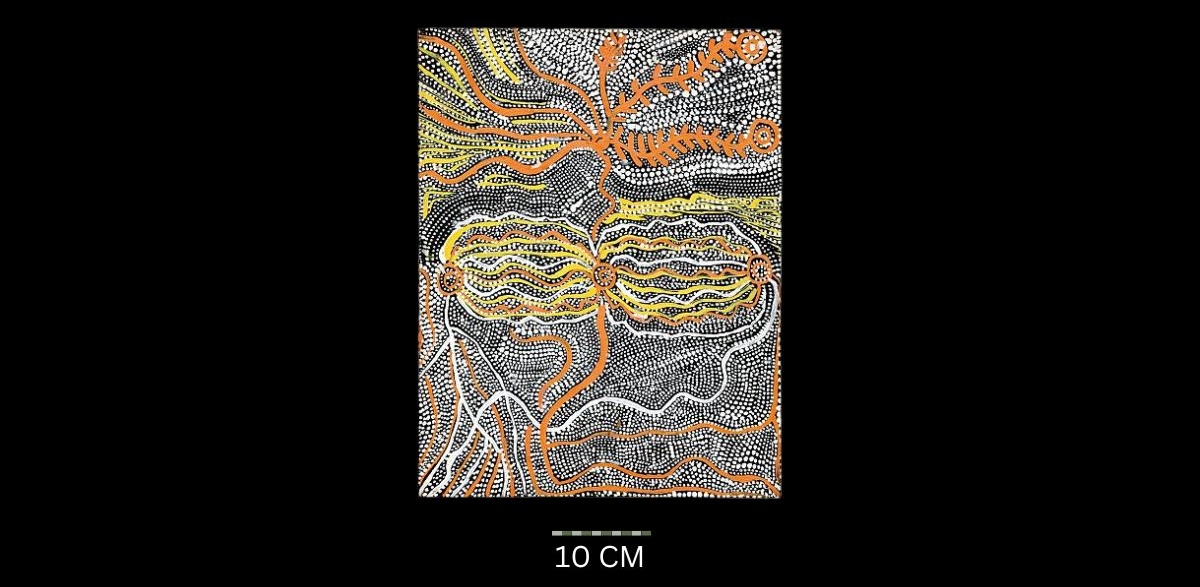
Water Dreaming with Bush Tucker 1971
Synthetic polymer paint on composition board,
46 x 35 cm
UNSOLD
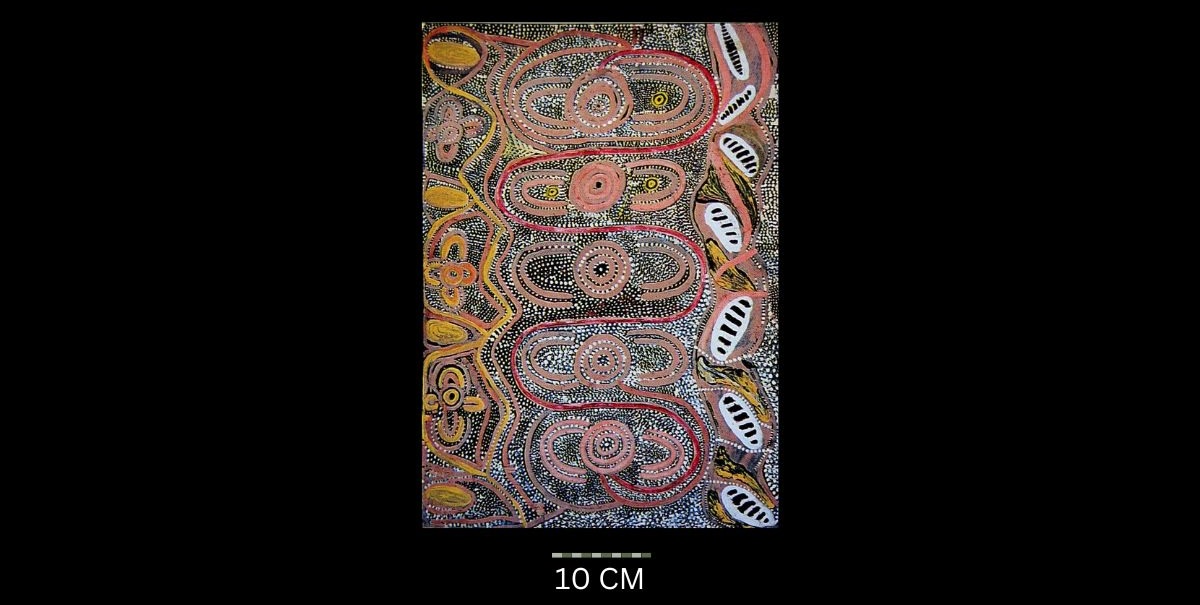
Untitled (c. 1971)
Synthetic polymer paint on masonite, bears artist’s name ‘Johnny’ and Catalogue No. 9035 on the reverse,
50.5 x 40 cm
Hammerprice: A$8,000
Johnny Warrangkula’s Artistic Evolution in 1972 -1973: From Traditional Motifs to Abstract Expression in Papunya Art
By 1972, Johnny Warrangkula Tjupurrula, began to shift away from traditional Aboriginal iconography rooted in sacred churinga designs. This year marked a significant transformation in his style, as Warrangkula explored abstraction more deeply. Some of his paintings from 1972 completely abandon recognizable ancestral symbols, positioning his work within the realm of purely abstract art, while still maintaining profound cultural and spiritual meaning beneath the surface.
Introducing New Forms and Western Influences
In a notable evolution of his technique, Warrangkula in some works also began incorporating figurative elements using Western conventions, subtly blending Indigenous storytelling with European artistic approaches..
A Richer and More Refined Colour Palette
While Warrangkula’s early work in 1971 relied on natural pigments—red and yellow ochre, white pipe clay, and charcoal—his 1972 paintings introduced a broader and more vibrant palette. New colours such as orange, pink, purple, and green began to appear. Importantly, Warrangkula started mixing colours, creating more nuanced tones and subtle gradients, a departure from the flat, unmixed hues of the previous year.
Larger “Canvases” and Improved Materials
Though he continued painting on composition board, masonite, and chipboard, the quality and size of these materials improved significantly in 1972. These larger and better-crafted surfaces provided Warrangkula with greater flexibility and space for creative expression, allowing his compositions to become more expansive and dynamic.
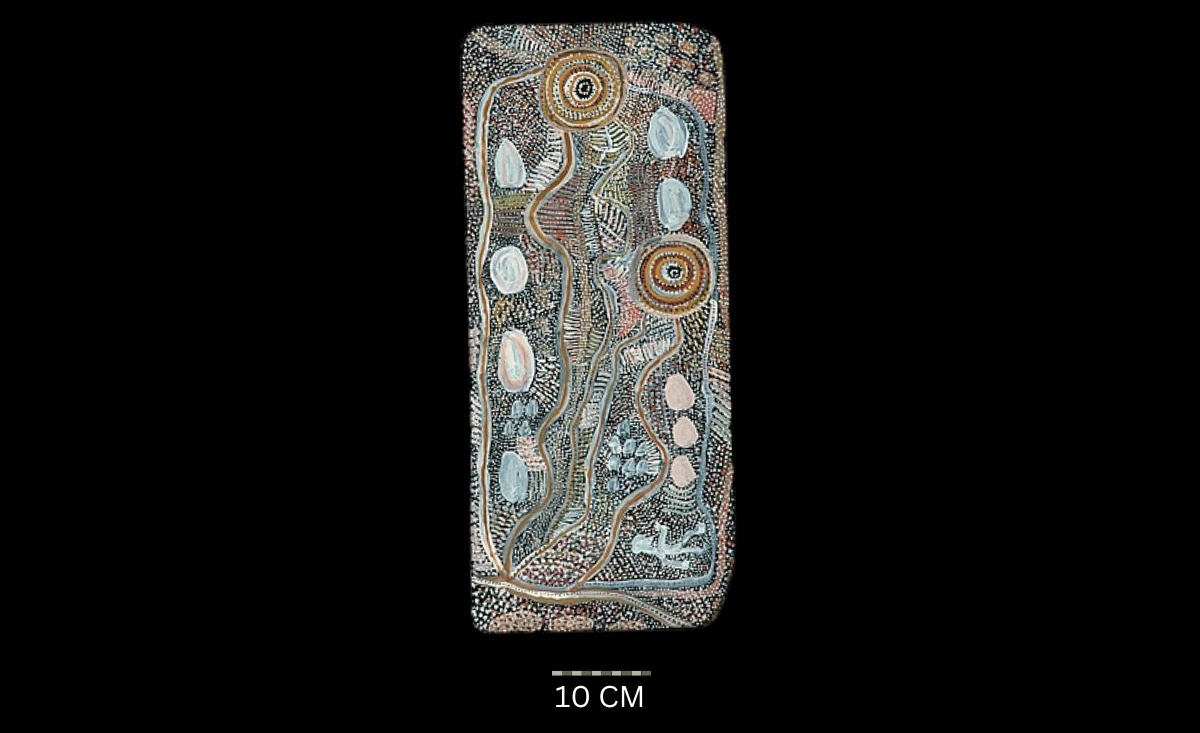
Man and Naughty Boys Water Dreaming, 1972
Synthetic polymer paint on composition board,
61 x 26 cm
Hammerprice: A$50,000
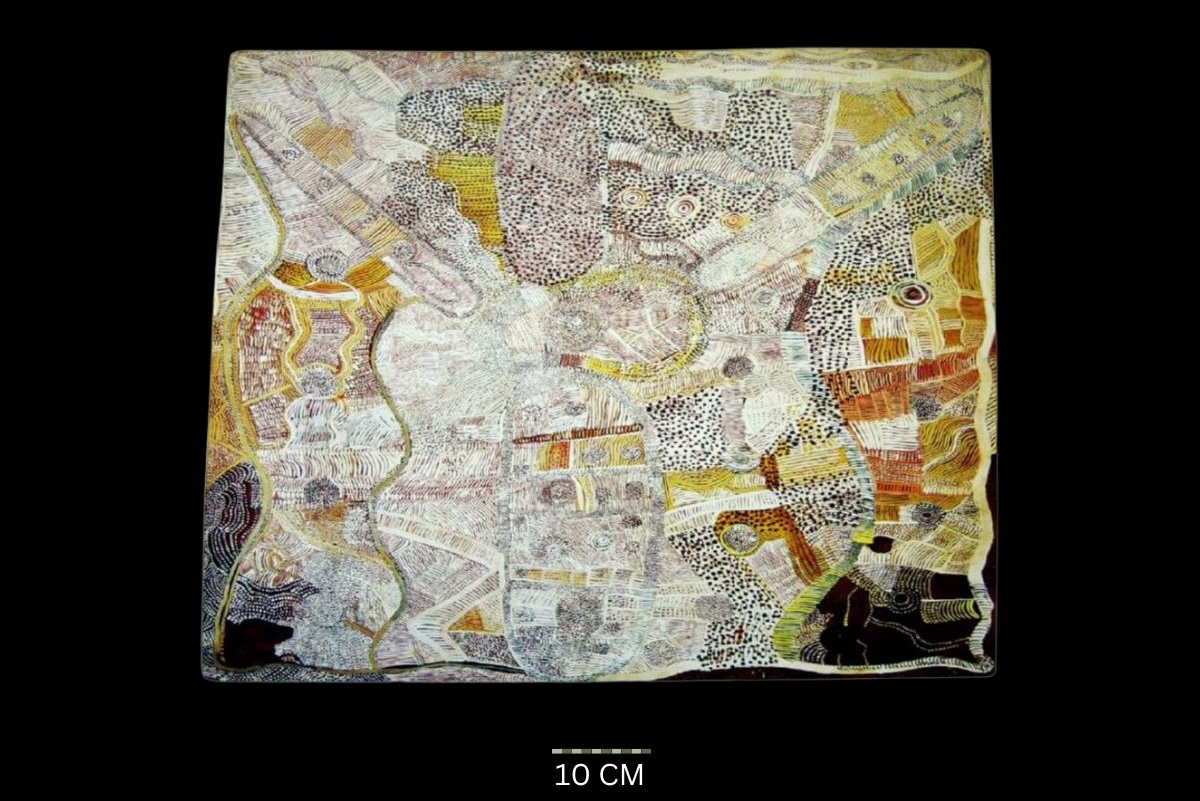
Water Dreaming at Kalipinypa 1972
Synthetic polymer powder paint on composition board,
75 x 80 cm
Hammerprice: A$185,000
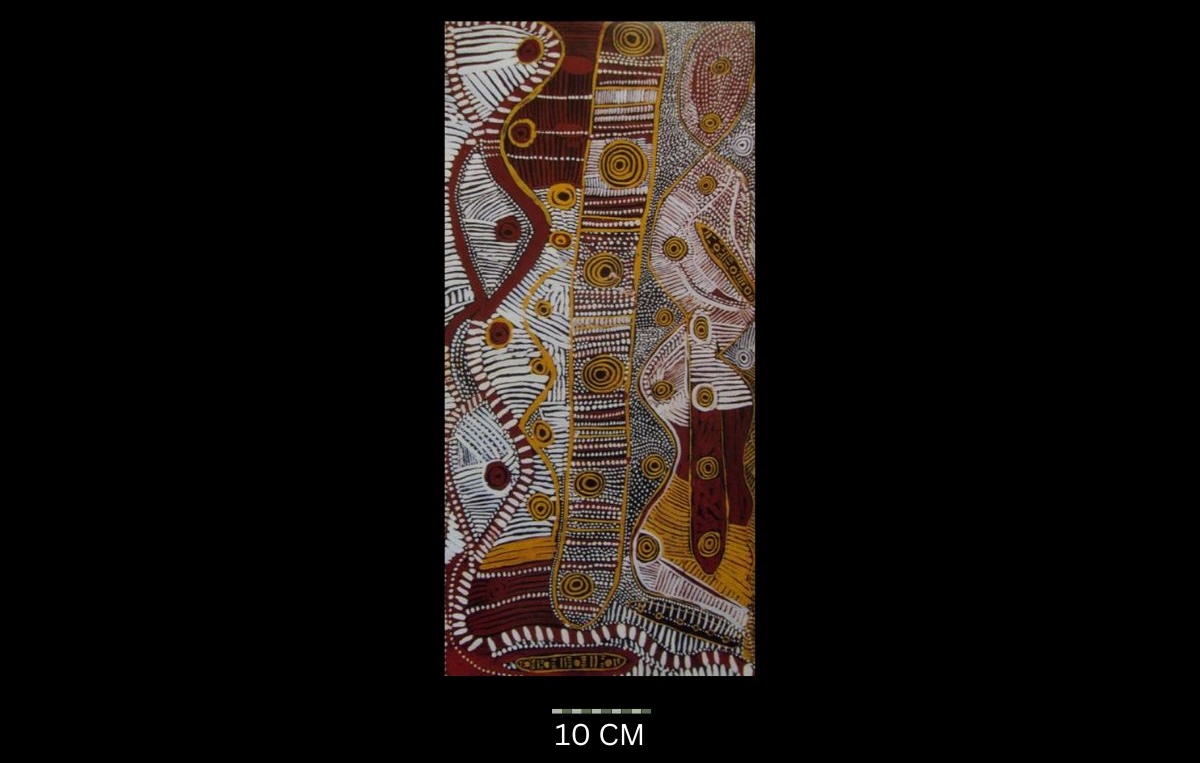
Wild Potato Dreaming 1972
Synthetic polymer and earth pigments on board,
65 x 30 cm
Hammerprice: A$19,000

Untitled, 1972
Synthetic polymer powder paint on composition board, bears Stuart Art Centre consignment number 19065 and dated 26/9/72 on the reverse,
52.5 x 28.5 cm
Hammerprice: A$8,500
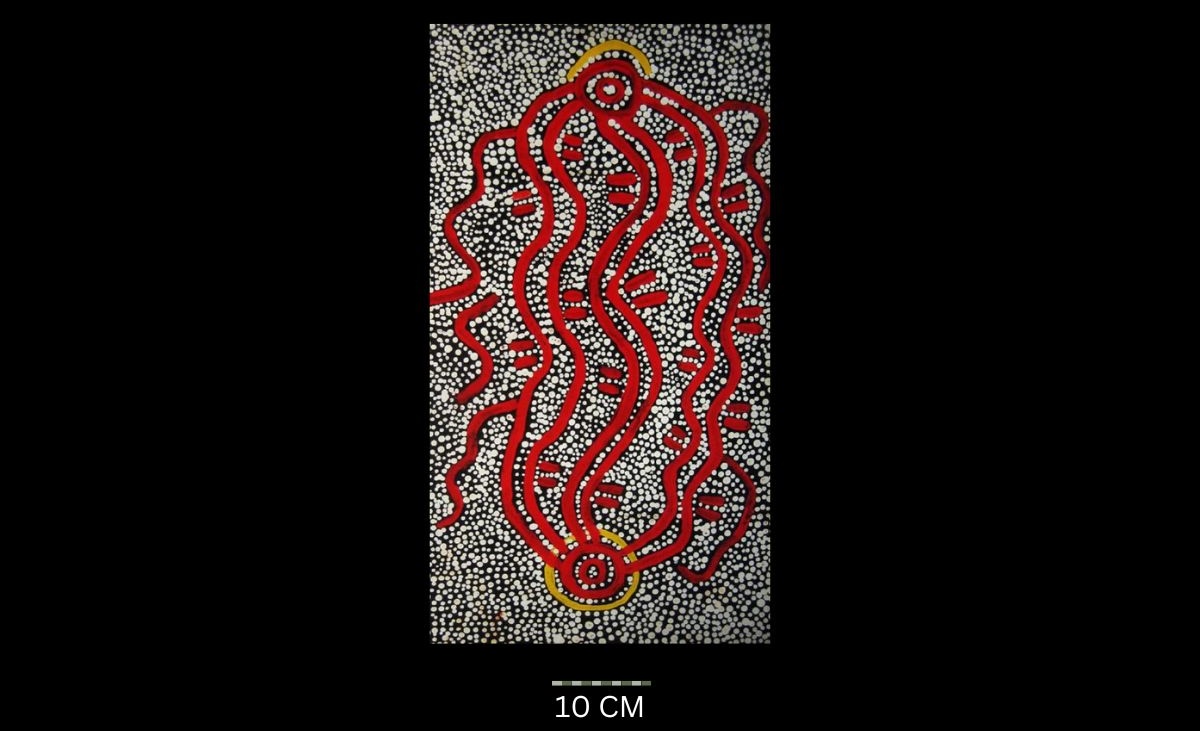
Water and Tucker 1972
Synthetic polymer paint on composition board,
76 x 91 cm
UNSOLD
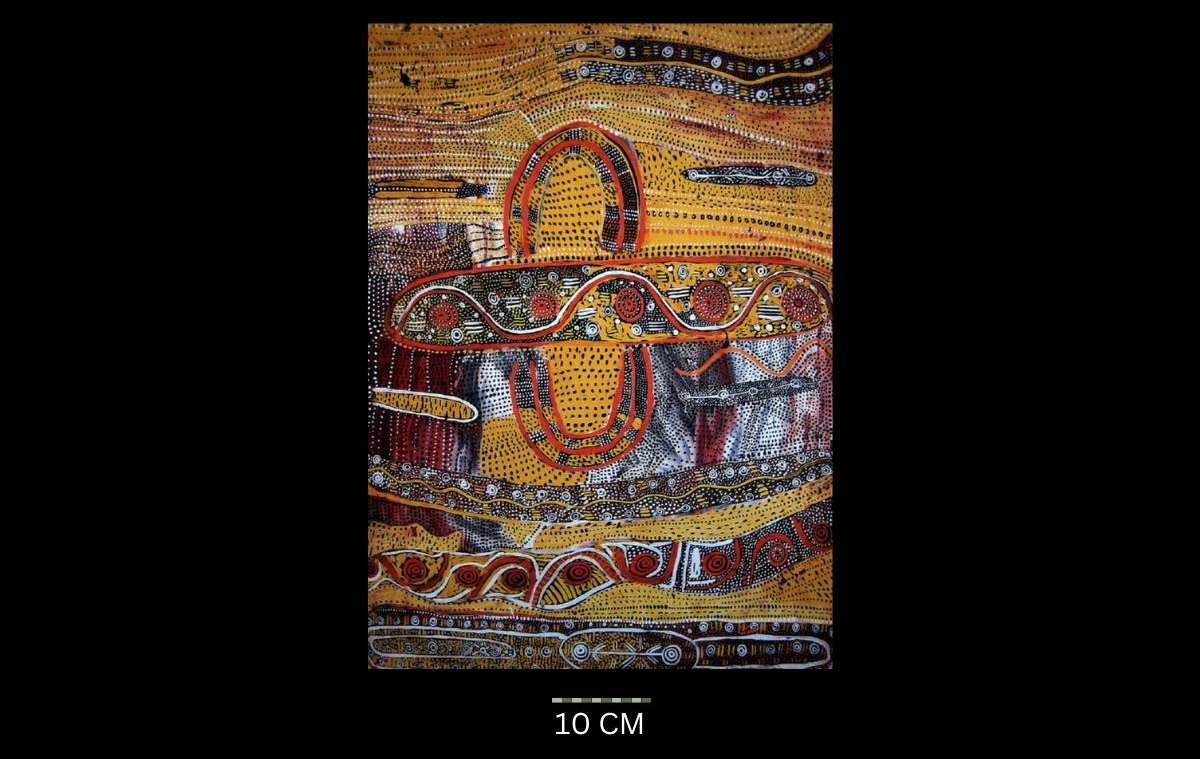
Water Ceremony 1972
Synthetic polymer powder paint on composition board,
64 x 46 cm
Hammerprice: A$85,000
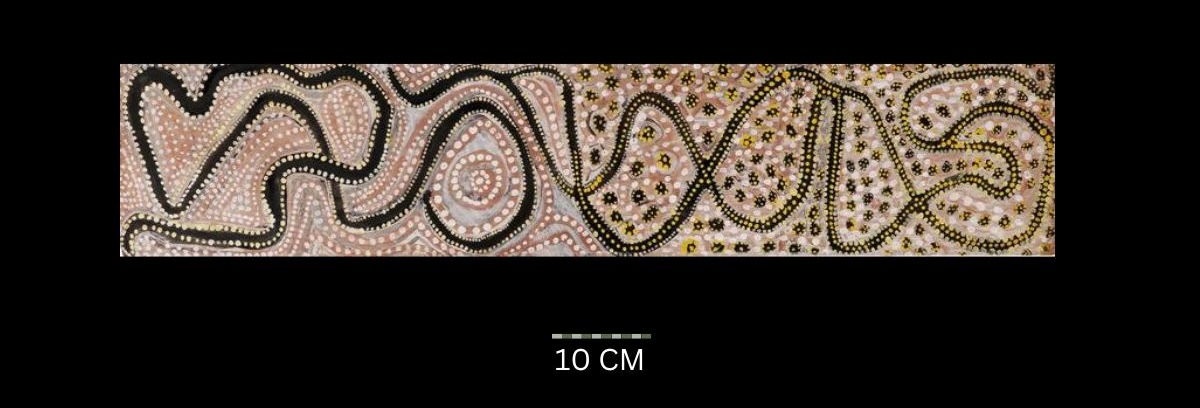
Water Dreaming
Synthetic polymer powder paint and natural earth pigments on composition board, bears catalogue number 22 on the reverse,
93 x 19 cm
Hammerprice: A$20,000
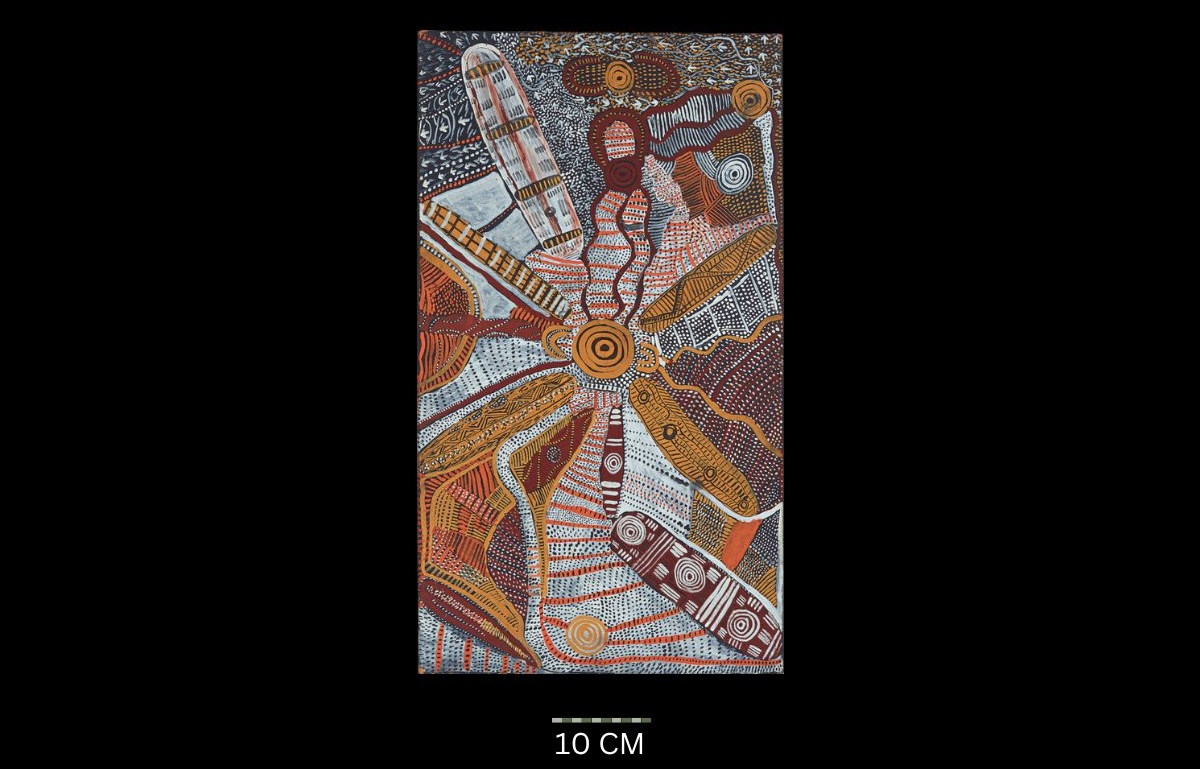
Water Dreaming at Kalipinya, 1972
Synthetic polymer powder paint on composition board,
64 x 36.5 cm
Hammerprice: A$85,000
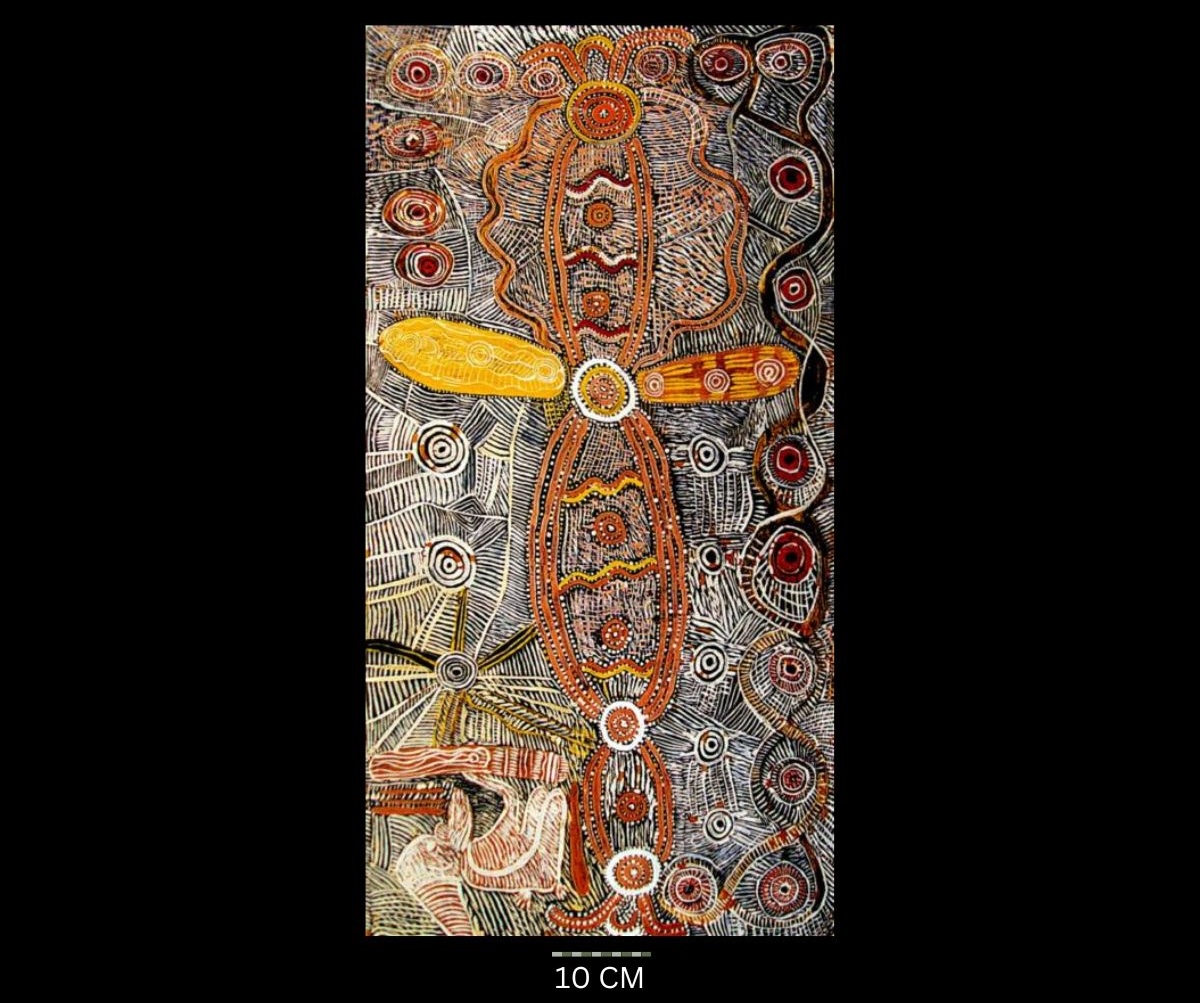
Wild Tomato Dreaming 1972
Synthetic polymer powder paint and enamel on composition board, bears Stuart Art Centre consignment number 9004 on label on the reverse,
46 x 91 cm
Hammerprice: A$38,000
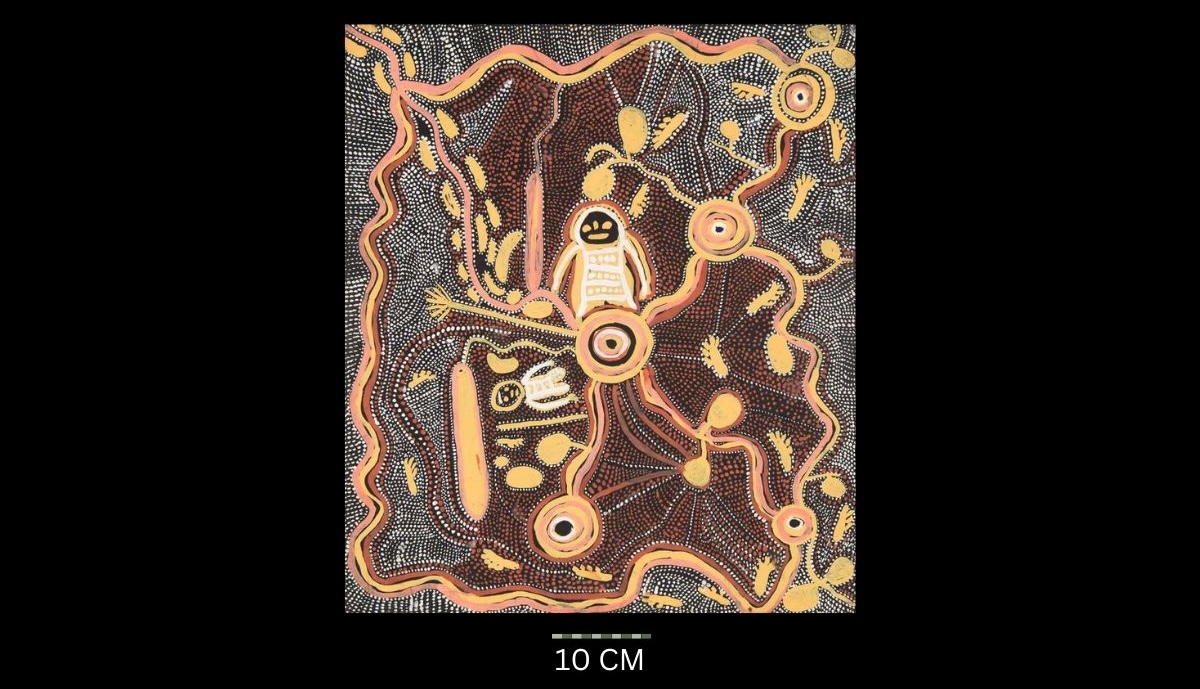
Water Dreaming with Bush Tucker (1972)
Synthetic polymer paint on composition board,
58 x 48 cm
Hammerprice: A$80,000
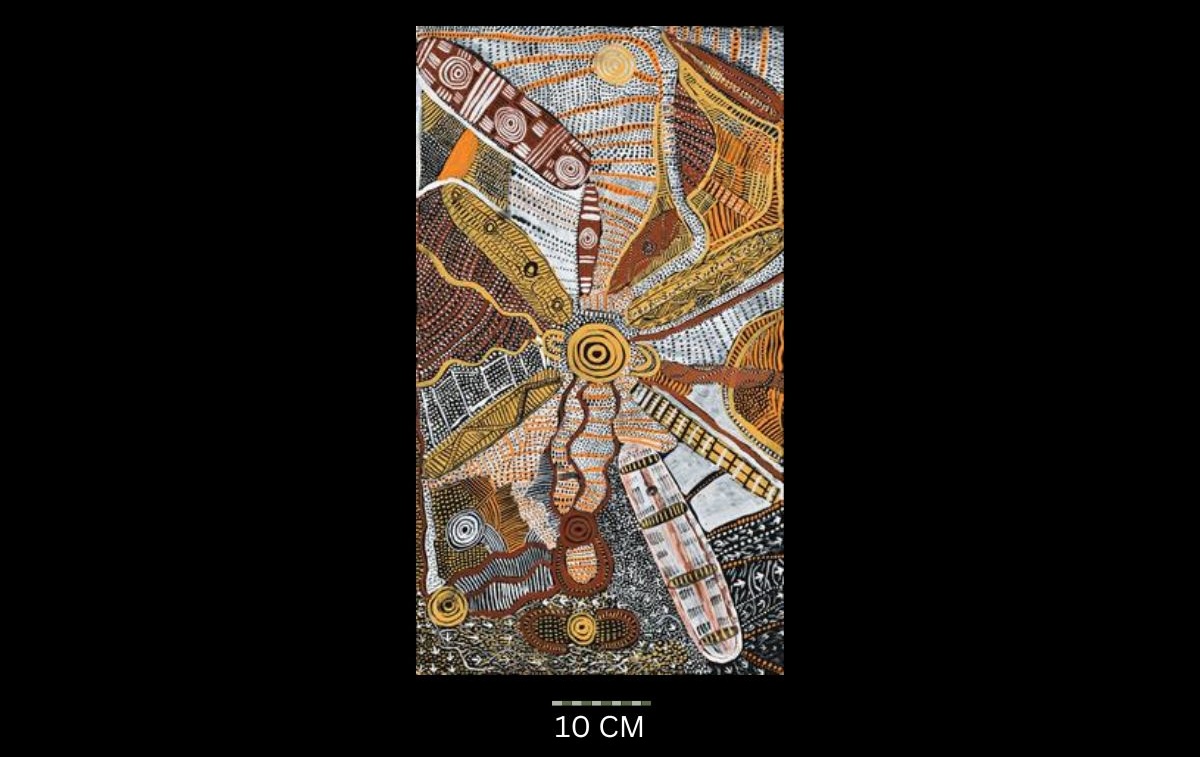
Water Dreaming at Kalipinya, 1972
Synthetic polymer powder paint on board,
64 x 36.5 cm
Hammerprice: A$62,500

Tjikarri 1972
Synthetic polymer/powder paint on composition board,
46 x 60.5 cm
Hammerprice: A$12,000
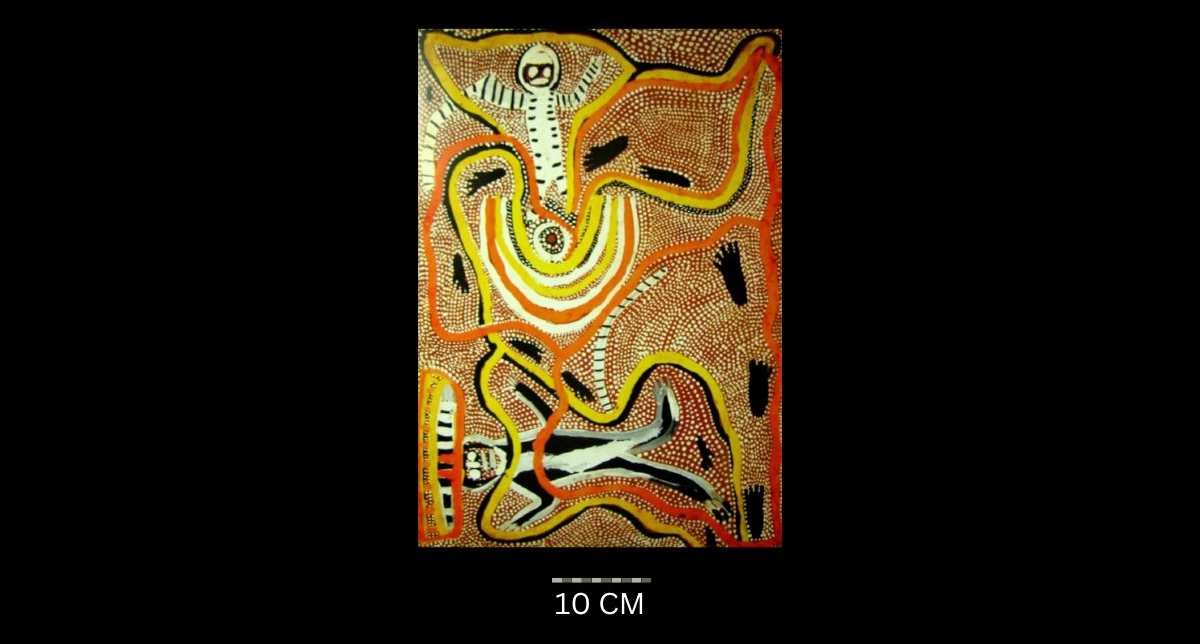
Old Man’s Fire Story, 1972
Synthetic polymer powder paint on board, inscribed verso ‘Johnny/W/30/Owens’,
30.5 x 51 cm
Hammerprice: A$27,000
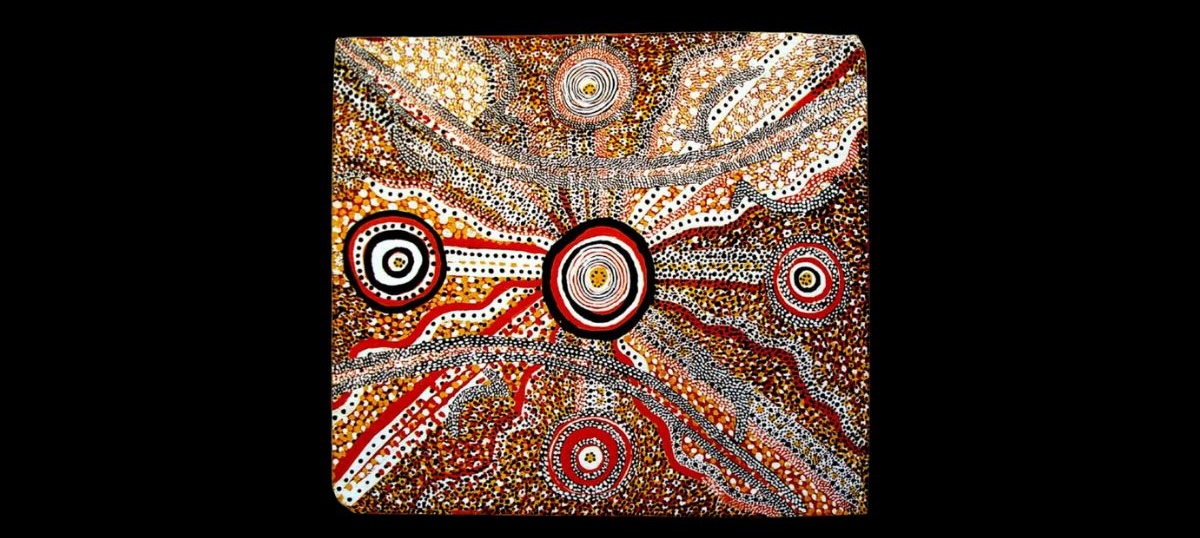
Water Dreaming 1972
Synthetic polymer powder paint on composition board
No size recorded
Hammerprice: A$14,000
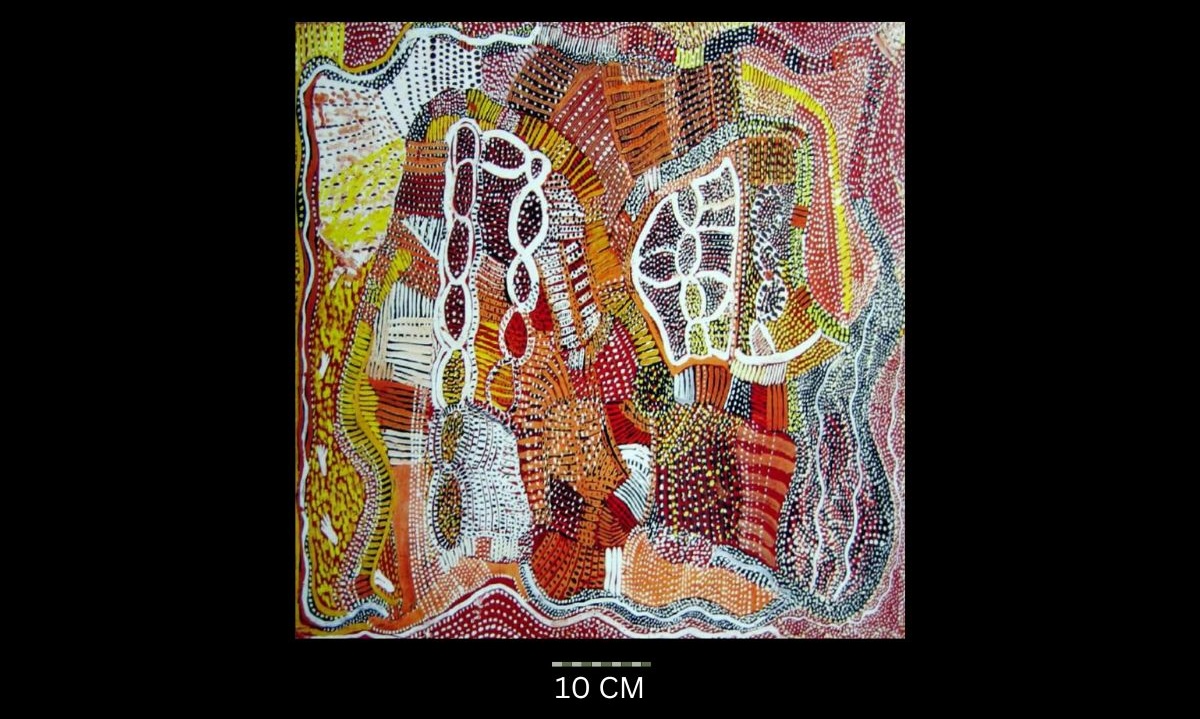
Water Dreaming at Kalipinypa 1972
Synthetic polymer powder paint on composition board, bears Stuart Art Centre consignment number 14040 on the reverse,
61 x 46.5 cm
Hammerprice: A$59,000
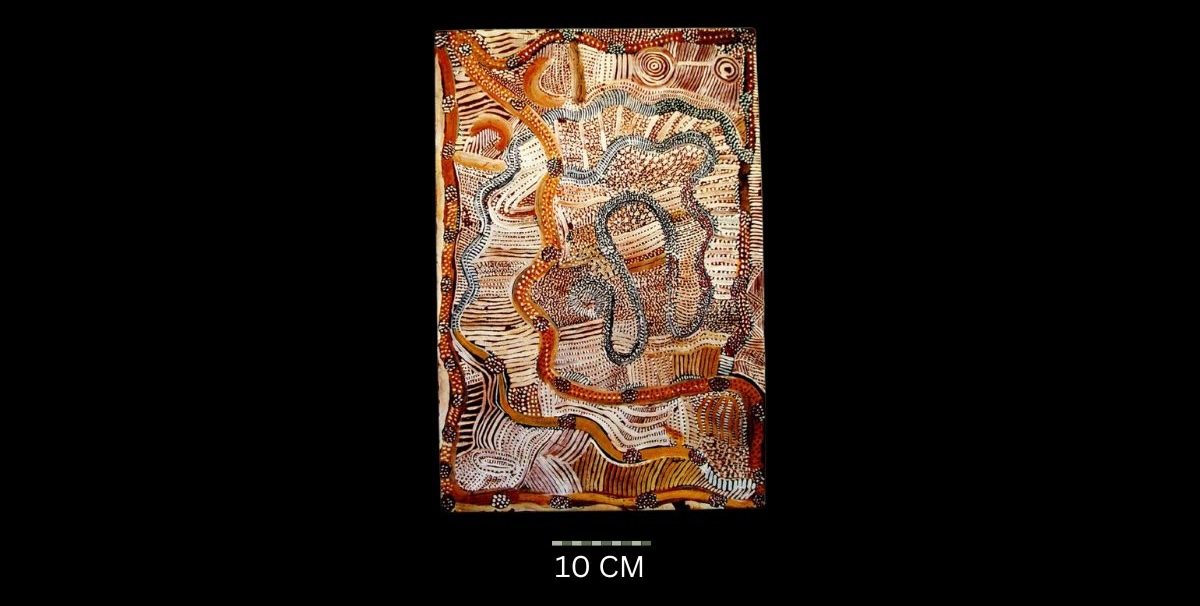
Water Dreaming at Kalipinypa 1972
Synthetic polymer powder paint on composition board, bears artist’s name, title ‘Water Dreaming with Seated Women’, date August 1972, and an explanitory drawing on the reverse,
48 x 32 cm
Hammerprice: A$36,000
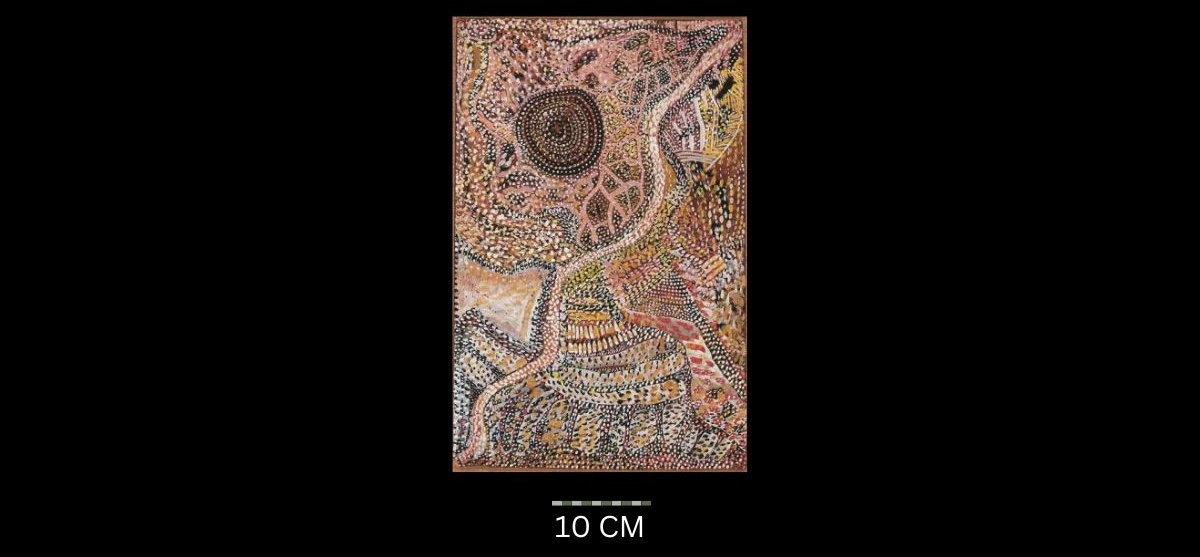
Bush Tucker Dreaming with Running Water 1972
Synthetic polymer paint and natural earth pigments on composition board, bears artist’s name and consignment number 14018 on Stuart Art Centre label on the reverse,
45.5 x 29.5 cm
Hammerprice: A$50,000

Water and Bush Tucker Story, 1972
Synthetic polymer paint on composition board, bears the Stuart Art Centre label (distressed) with catalogue number 1272149 on the reverse of frame,
65.5 x 46 cm
Hammerprice: A$920,000
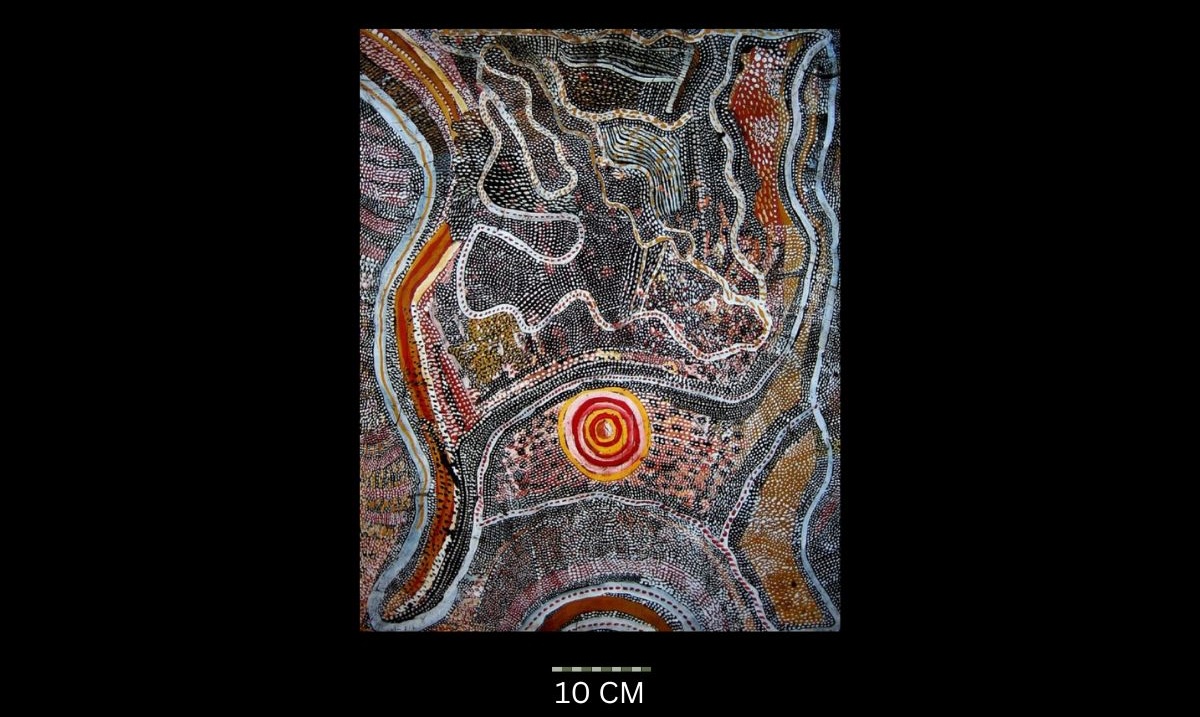
Water Dreaming with Rain and Lightning 1972
Synthetic polymer powder paint on composition board,
50 x 60 cm
Hammerprice: A$130,000

Kalipyinpa 1972
Synthetic polymer/powder paint on composition board,
61.5 x 46 cm
Hammerprice: A$17,000
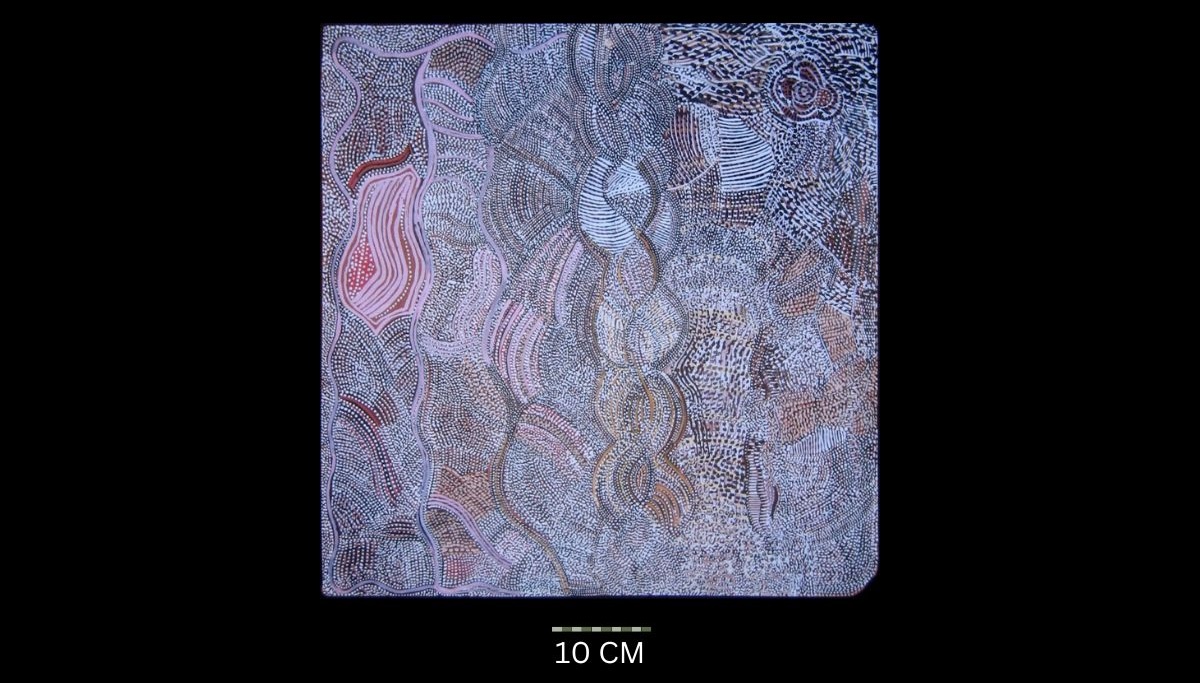
Water and Bush Tucker 1972
Synthetic polymer paint on composition board, bears Stuart Art centre 1272143 on the reverse,
57 x 56.5 cm
Hammerprice: A$104,000
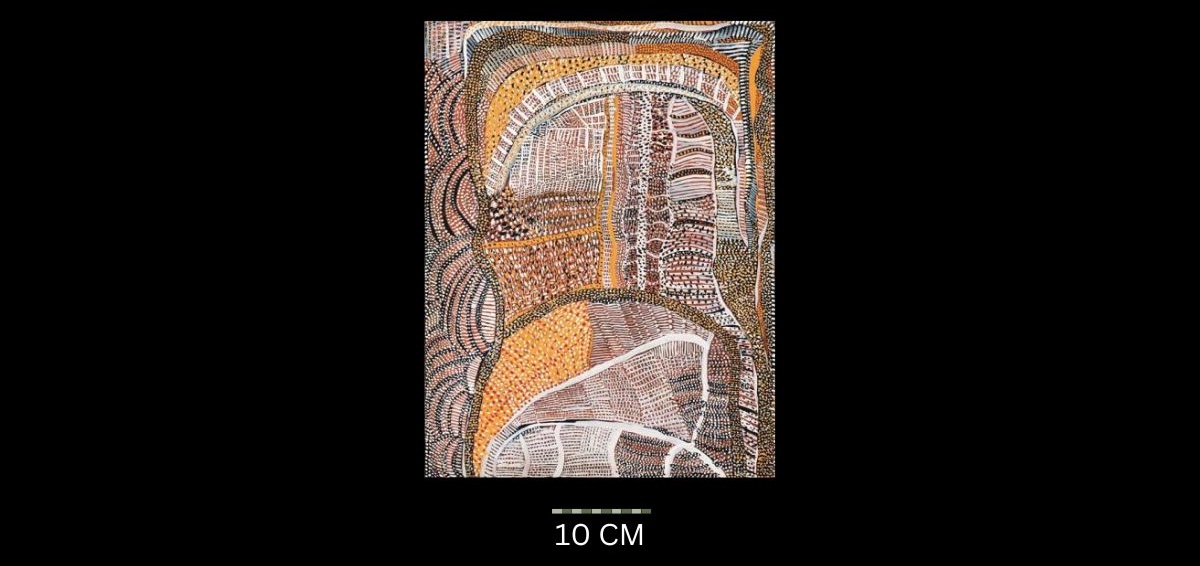
Yala Tjukurpa (Potato Dreaming) 1972
Synthetic polymer paint on composition board, bears Stuart Art Centre consignment number 12017 on the reverse,
45 x 34.5 cm
Hammerprice: A$110,000
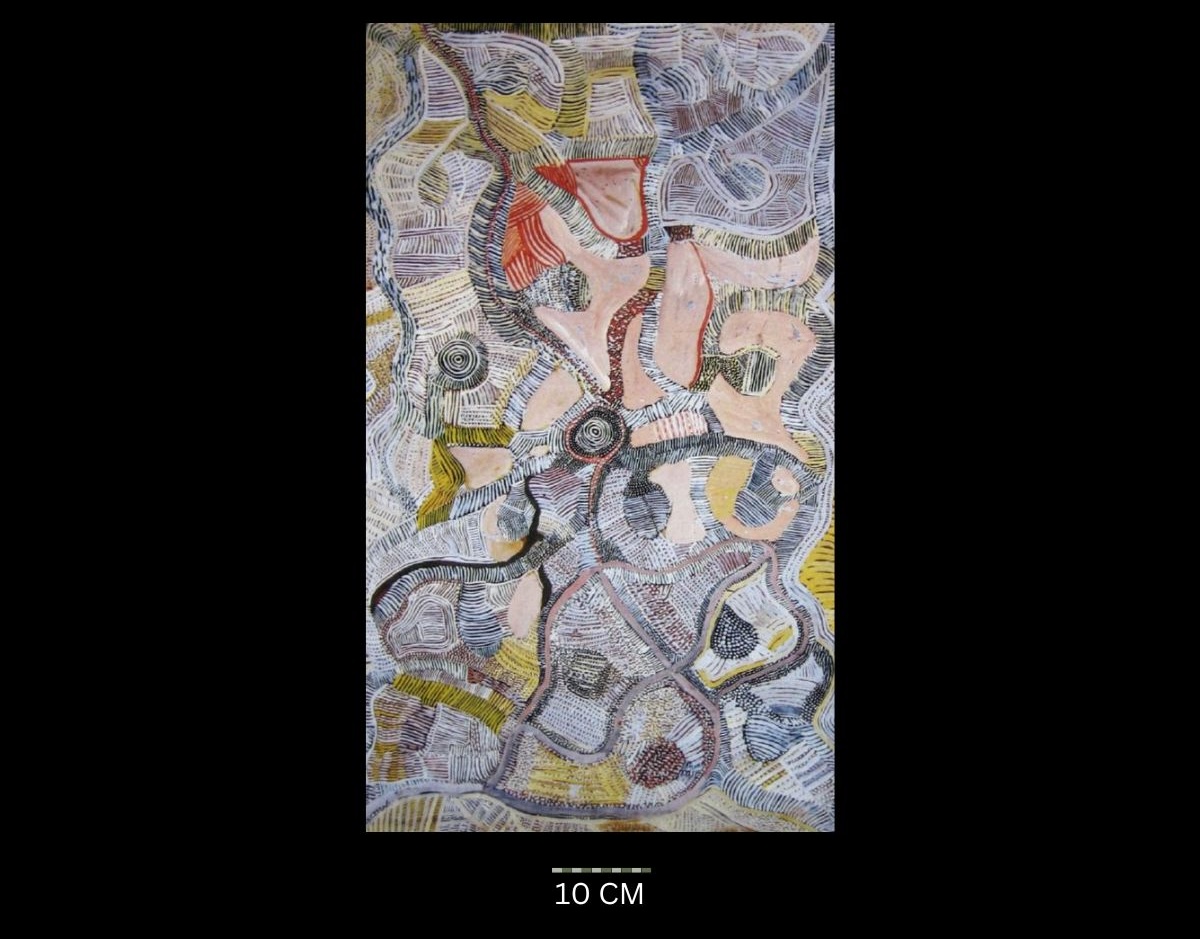
Water Dreaming
Synthetic polymer on board, inscribed with artist’s name, legend, and dated August 1972 on the reverse,
80 x 48.5 cm
Hammerprice: A$12,000
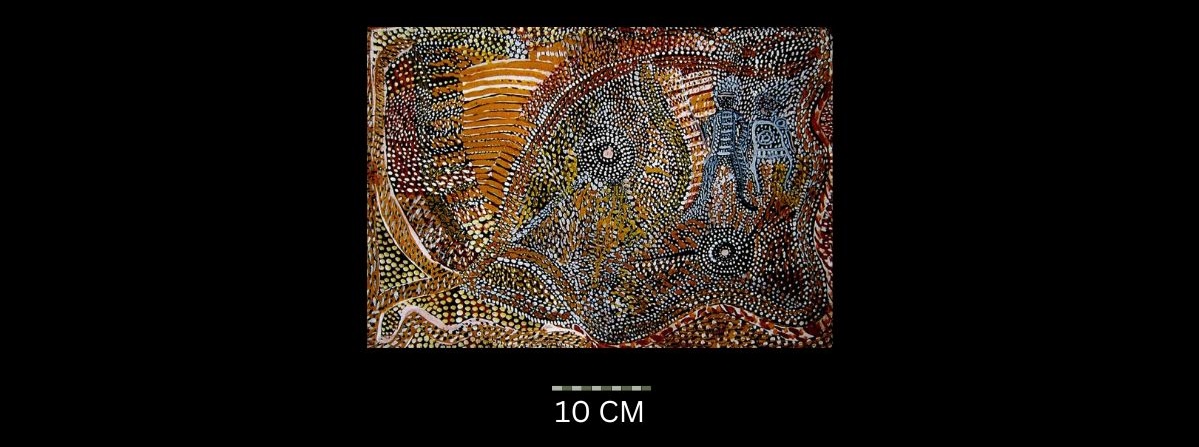
Untitled (The Water Theft at Tjikarri) 1972
Synthetic polymer/powder paint on composition board, bears Stuart Art Centre consignment number 14101 on the reverse,
31 x 46 cm
Hammerprice: A$13,000
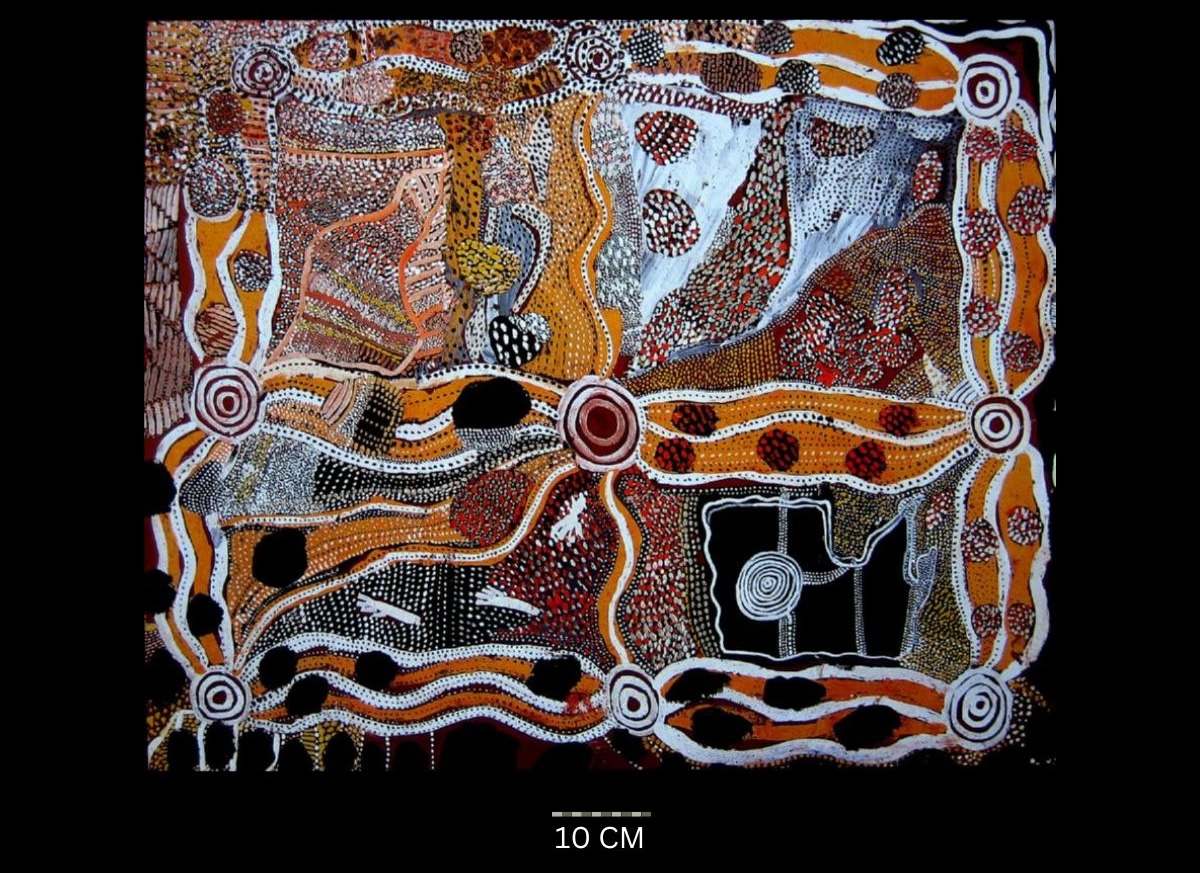
Water and Tucker 1972
Synthetic polymer paint on composition board,
76 x 91 cm
UNSOLD
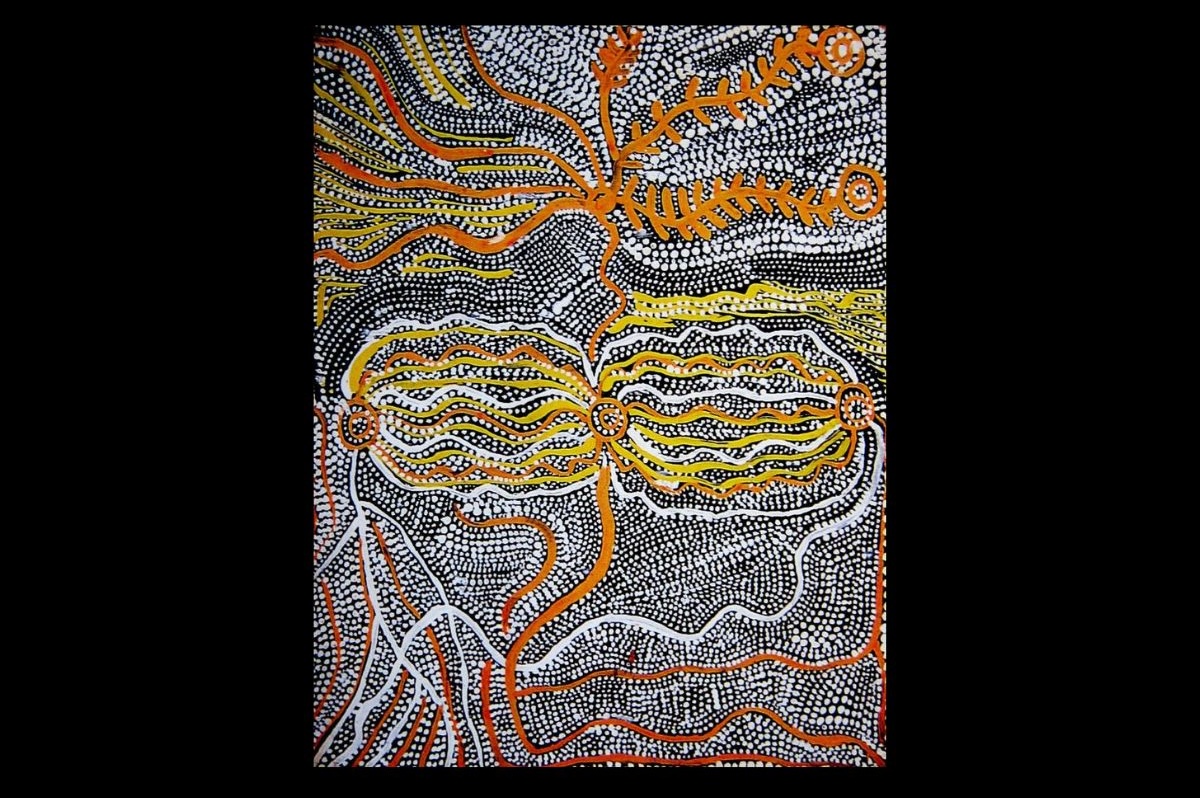
Water Dreaming at Kalipyinpa 1972
Synthetic polymer/powder paint on composition board
No size recorded
Hammerprice: A$9,000
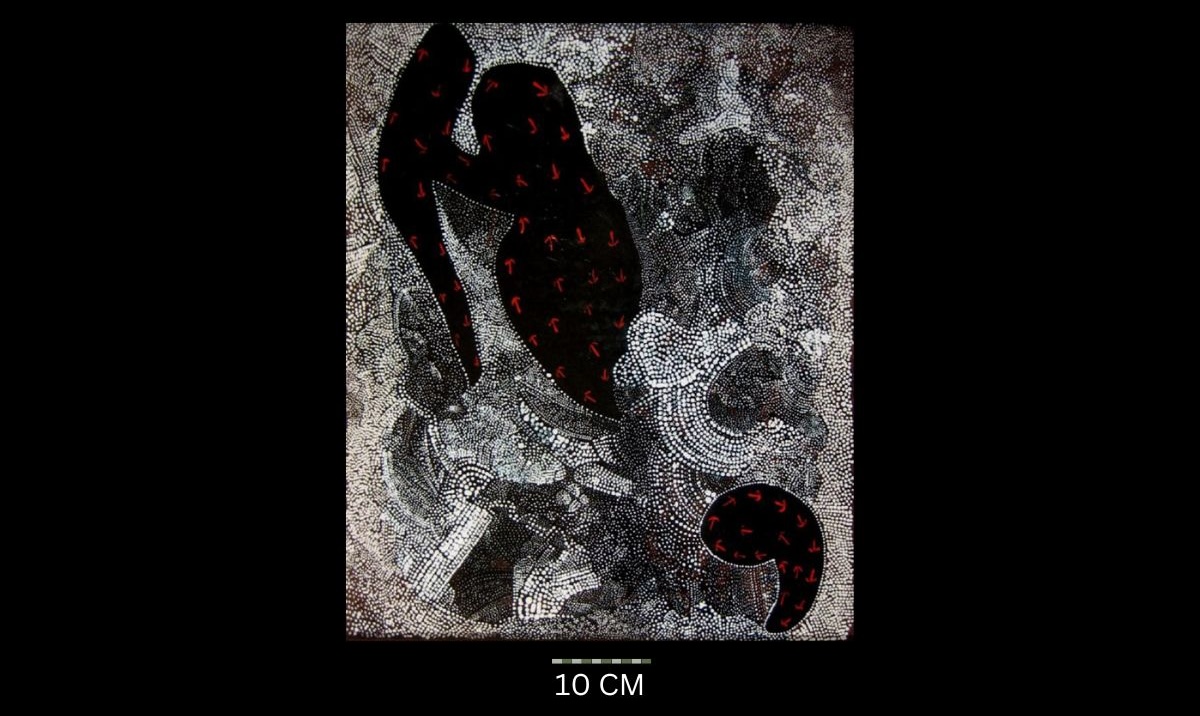
Water Dreaming at Kalipinypa c. 1972
Synthetic polymer paint on composition board,
51.5 x 61.5 cm
Hammerprice: A$30,000
Johnny Warangkula Tjupurrula Artworks 1973
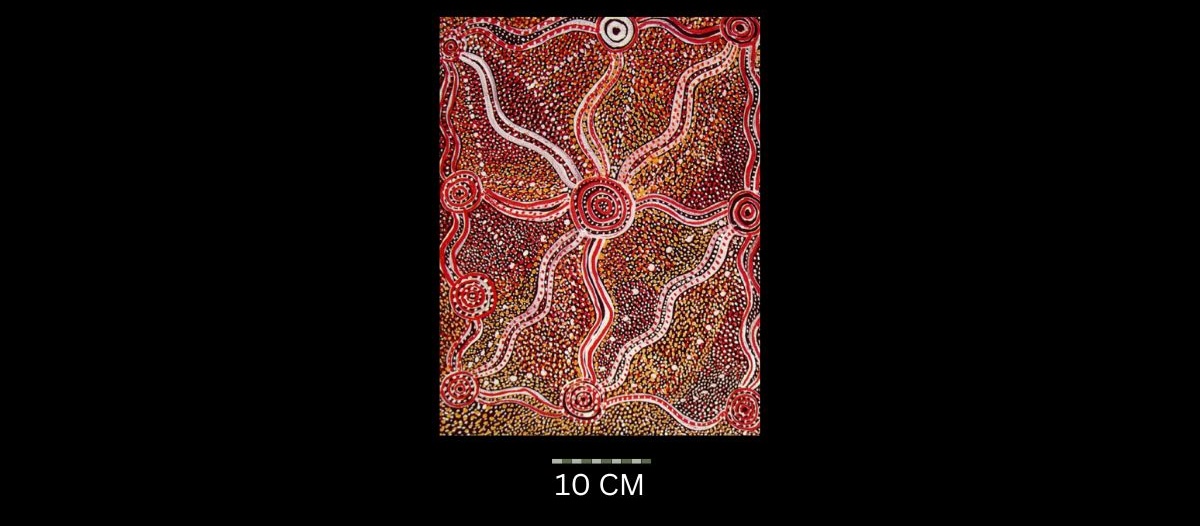
Water Dreaming at Kalipinypa 1972/73
Synthetic polymer powder paint on composition board,
41 x 31 cm
Hammerprice: A$9,000
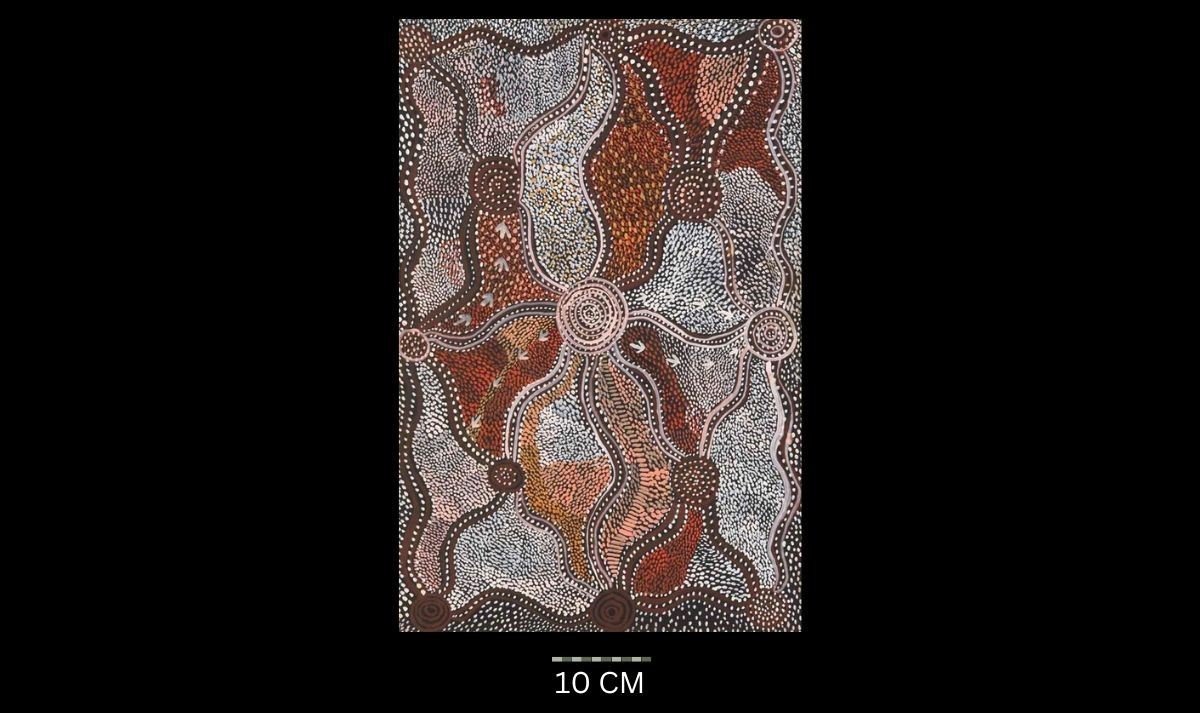
Water Dreaming at Kalipinypa (1973)
Synthetic polymer powder paint on composition board,
61 x 40 cm
Hammerprice: A$35,000
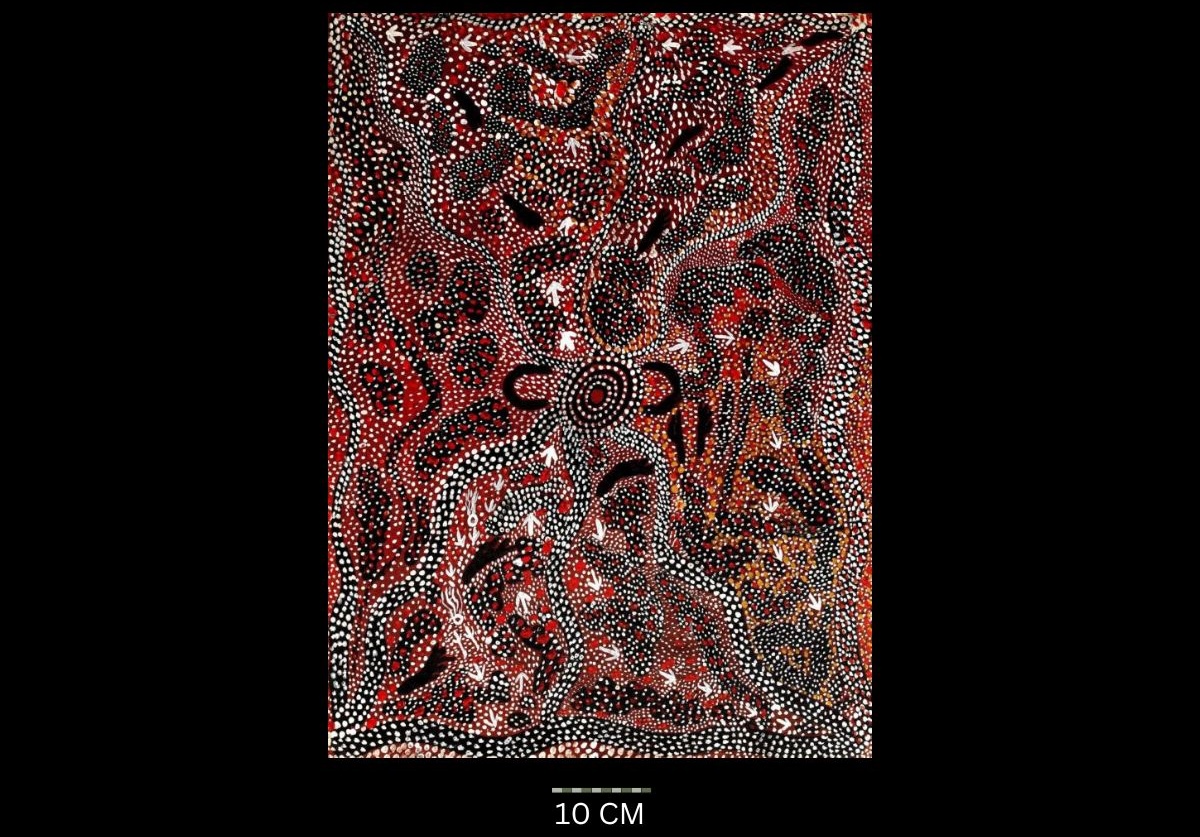
Kalipinypa 1973
Synthetic polymer paint on board, bears artist’s name and Papunya Tula Artists catalogue number JW730950 on the reverse,
74 x 54 cm
Hammerprice: A$35,000

Women Camped at Kampurrula, 1973
Synthetic polymer paint on board, bears inscription verso: JW 730807,
58 x 43 cm
Hammerprice: A$35,000
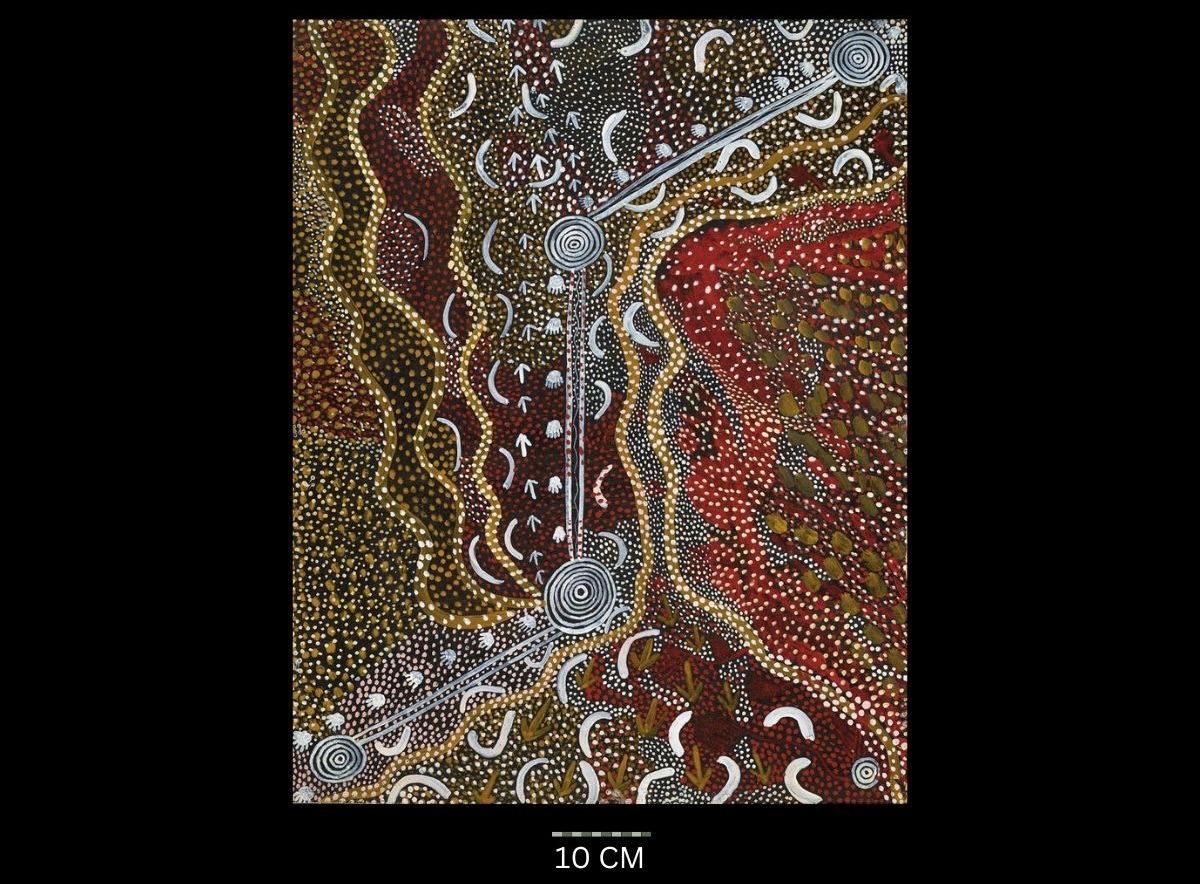
Dingo Dreaming, 1973
Synthetic polymer paint on composition board, bears inscription on label verso: artist’s name, title, language group, a description of the story depicted in Peter Fannin’s hand and Papunya Tula Artists cat. JW 731068,
78.5 x 61.5 cm
Hammerprice: A$40,000
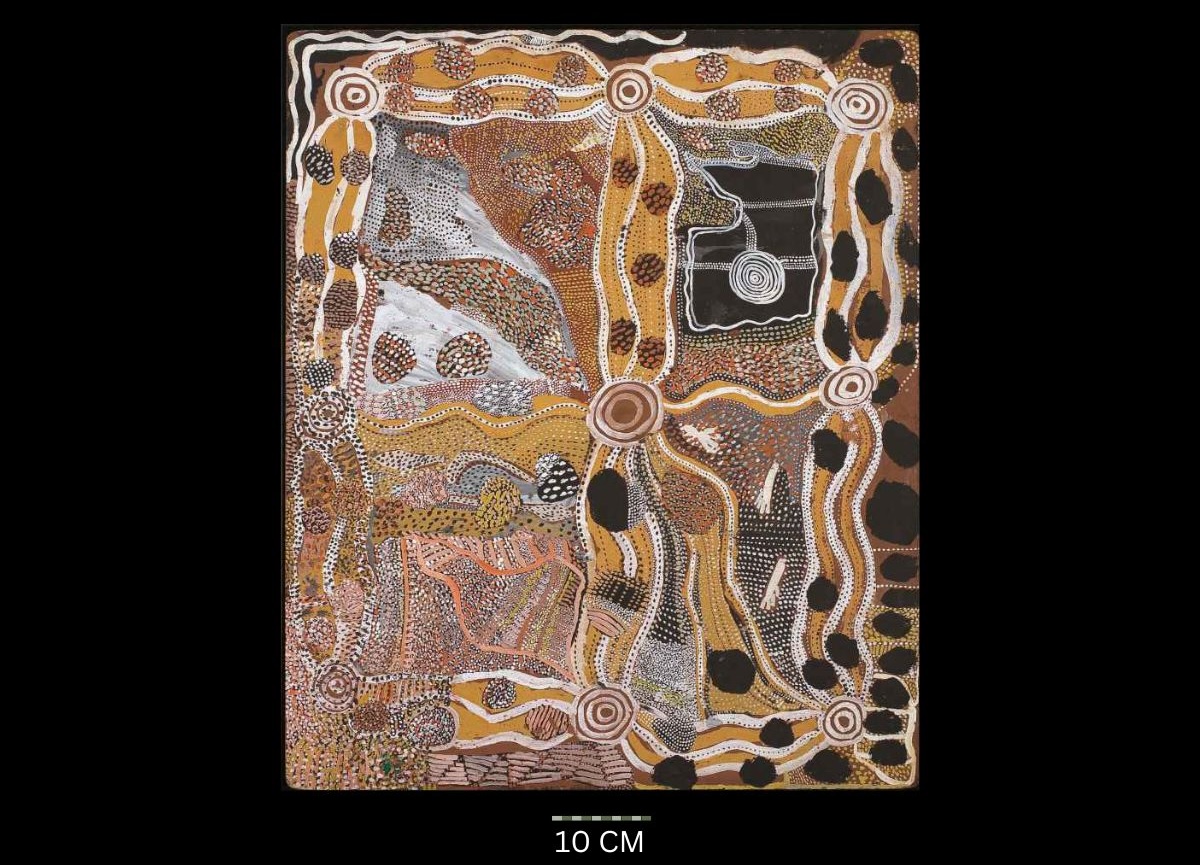
Water and Tucker
Synthetic polymer paint on composition board,
76 x 91 cm
Hammerprice: A$125,000
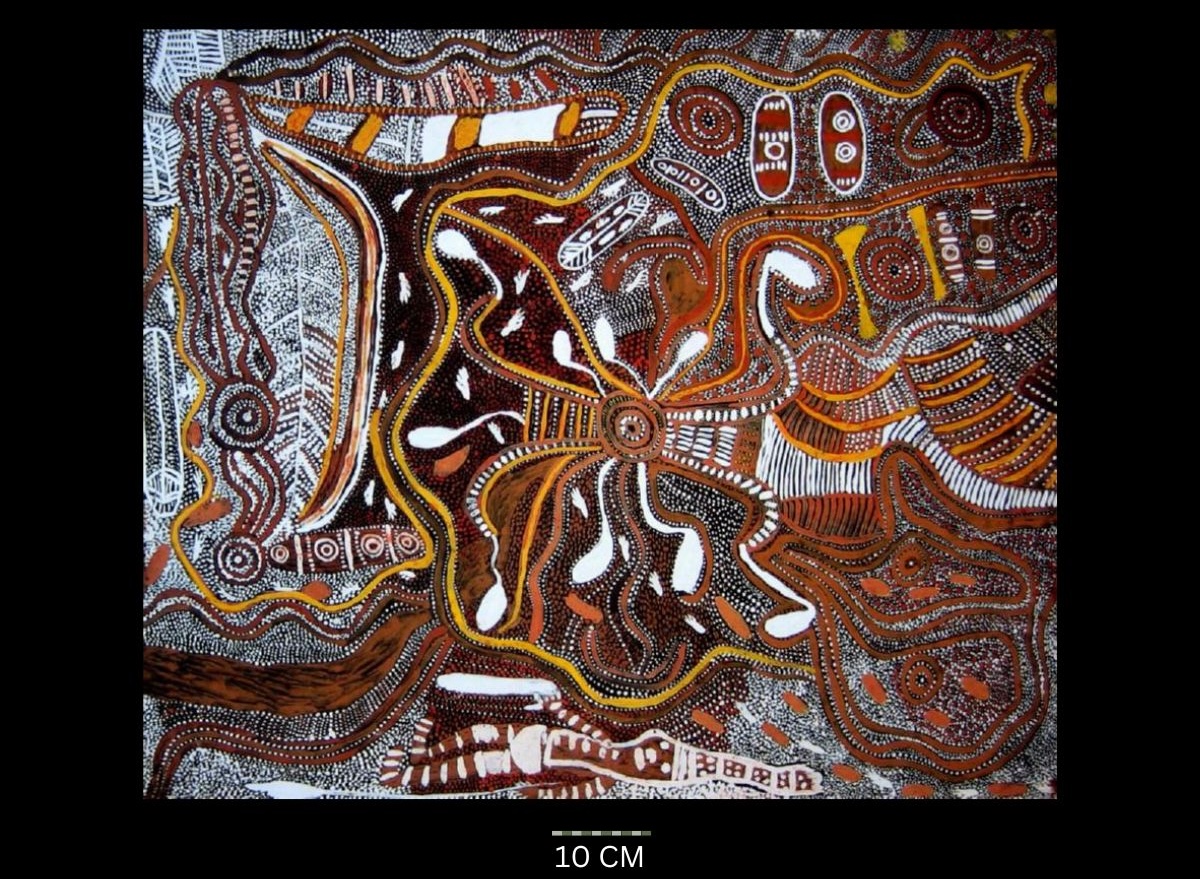
Rain Dreaming with Ceremonial Man c. 1970’s
Synthetic polymer powder paint on composition board,
91 x 75.5 cm
UNSOLD
N.B Although sold as being painted in 1971 in the opinion of the author this is more likely to be from 1973
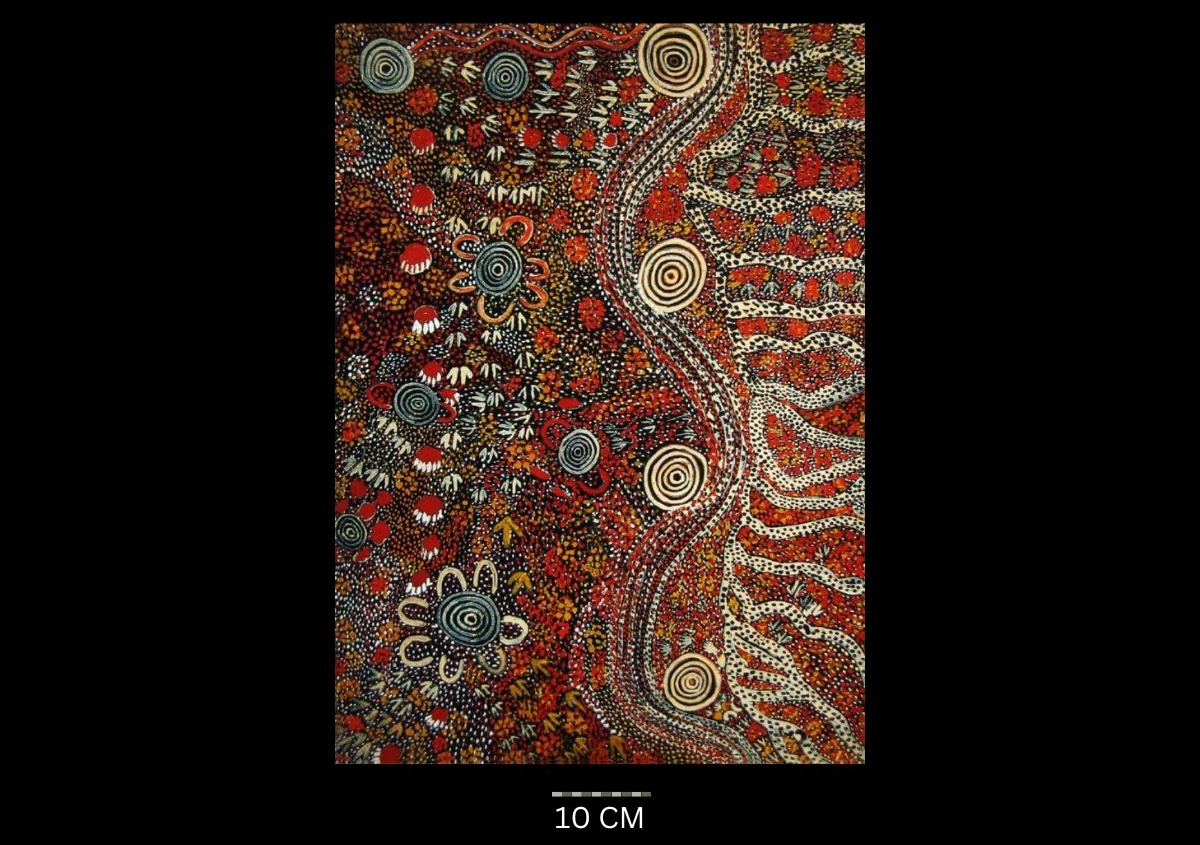
Dreamtime People 1973
Synthetic polymer powder paint on composition board,
74 x 53 cm
Hammerprice: A$26,000
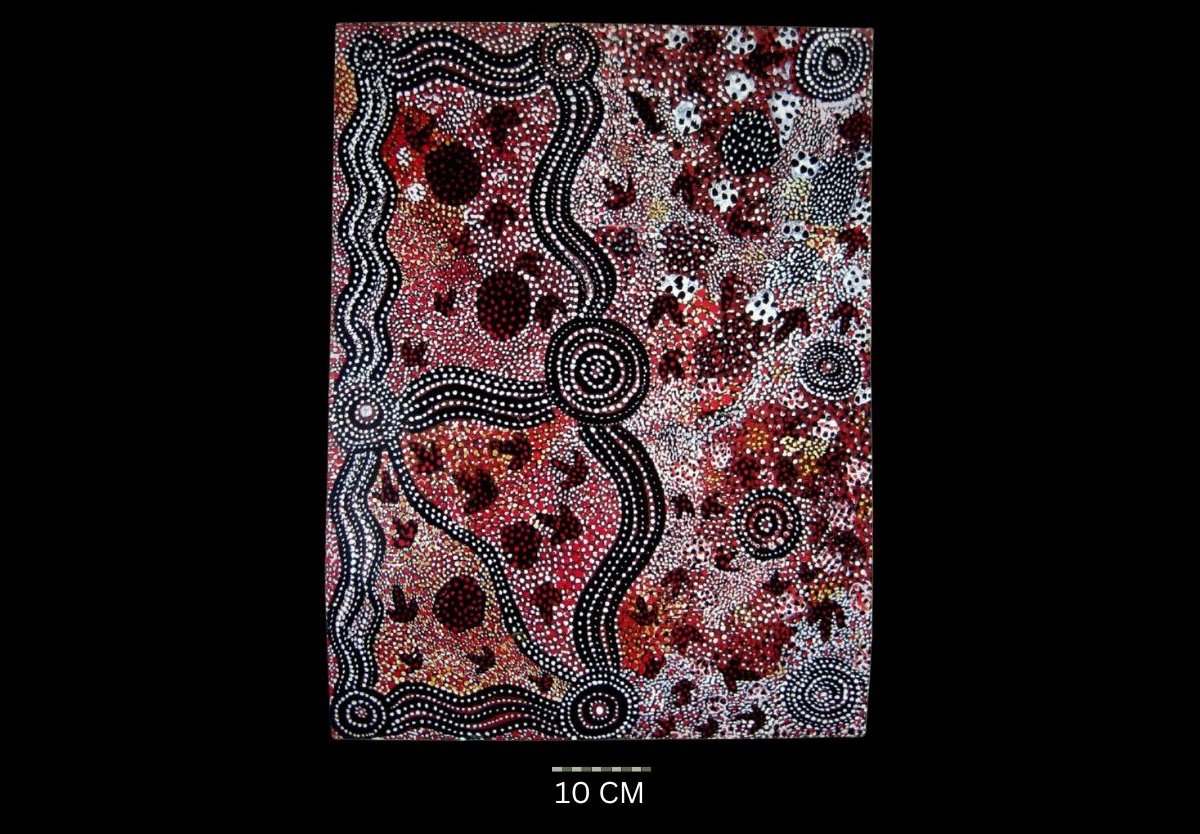
Water Dreaming with Emu at Kalipinypa 1973
Synthetic polymer paint on composition board, bears signed Papunya Tula catalogue number JW731047 on the reverse,
55 x 72.5 cm
Hammerprice: A$22,000
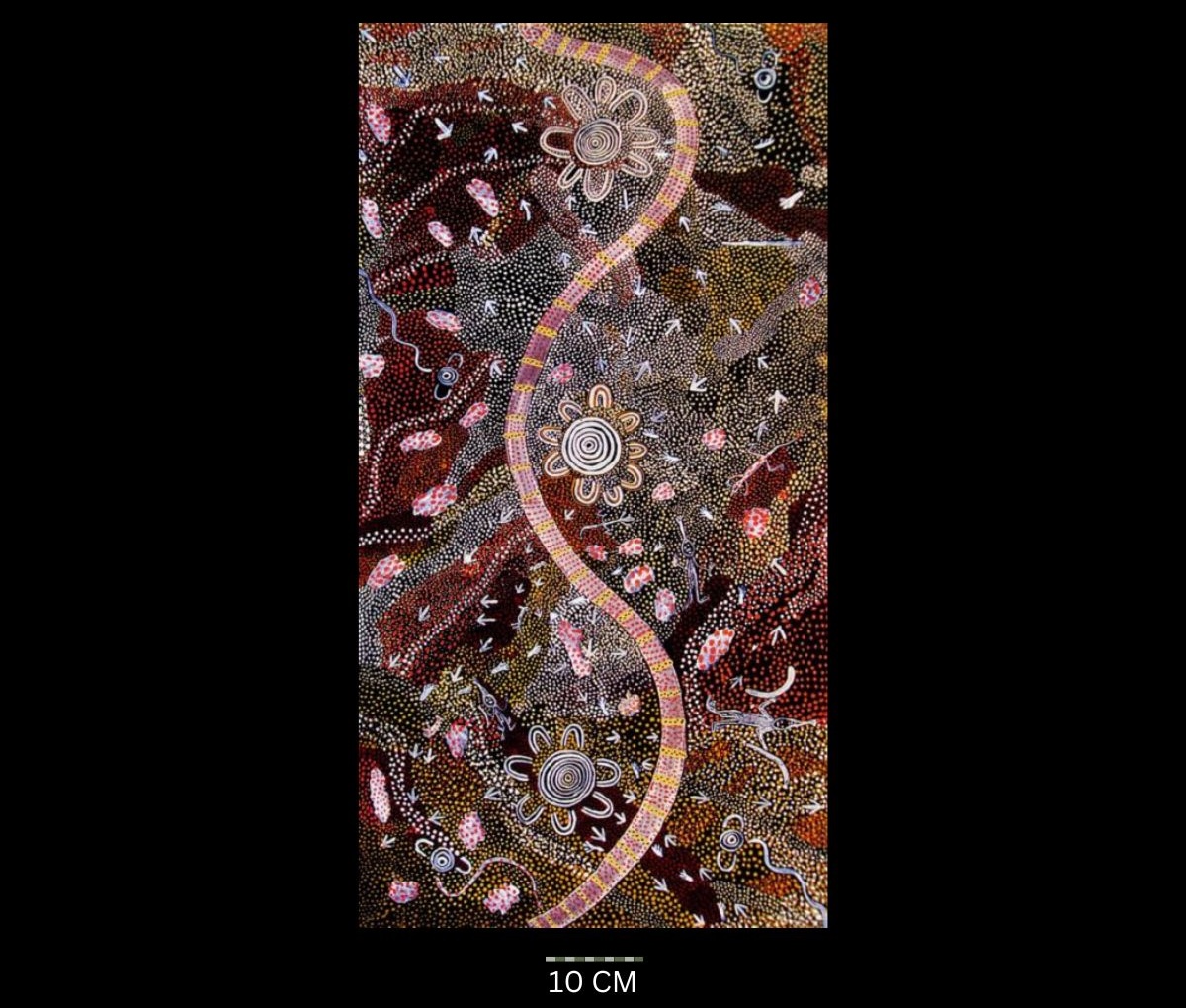
Pangalangu at Kalipinypa 1973
Synthetic polymer powder paint on composition board, bears catalogue number JW730703 in Peter Fannin’s hand on the reverse indicating that the painting was painted in July 1973,
91 x 51 cm
Hammerprice: A$15,000

Women’s Camp (1973)
Synthetic polymer paint on canvasboard,
71 x 55.7 cm
Hammerprice: A$30,000
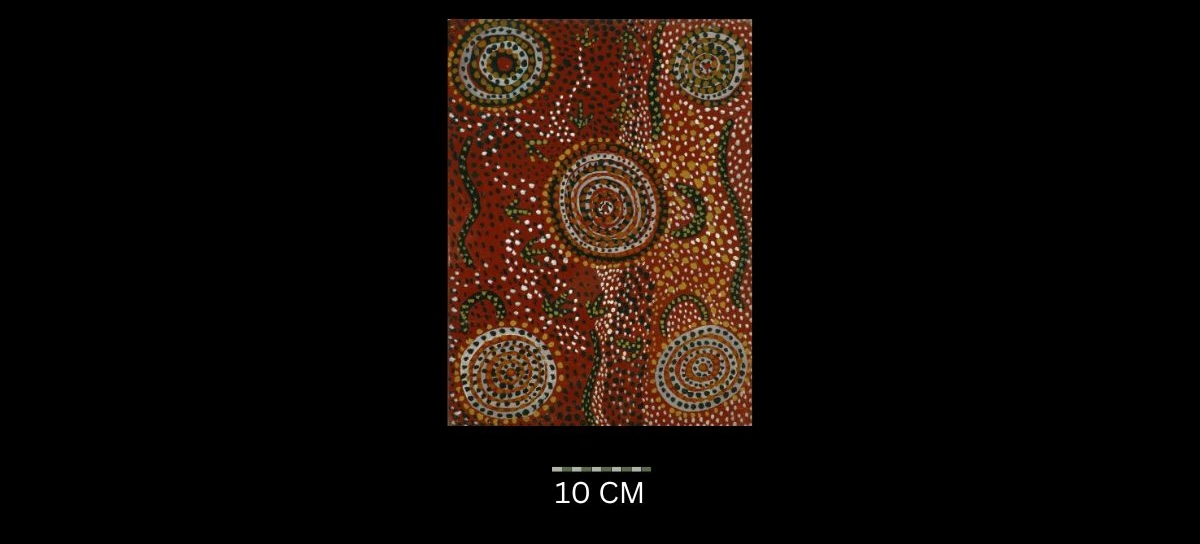
Old Man’s Bush Tucker, 1973
Synthetic polymer paint on canvas board, artist’s name and title verso,
40.5 x 30 cm
Hammerprice: A$11,000

Women’s Story, c. 1973
Synthetic polymer paint on linen,
28.5 x 28.5 cm
Hammerprice: A$23,000
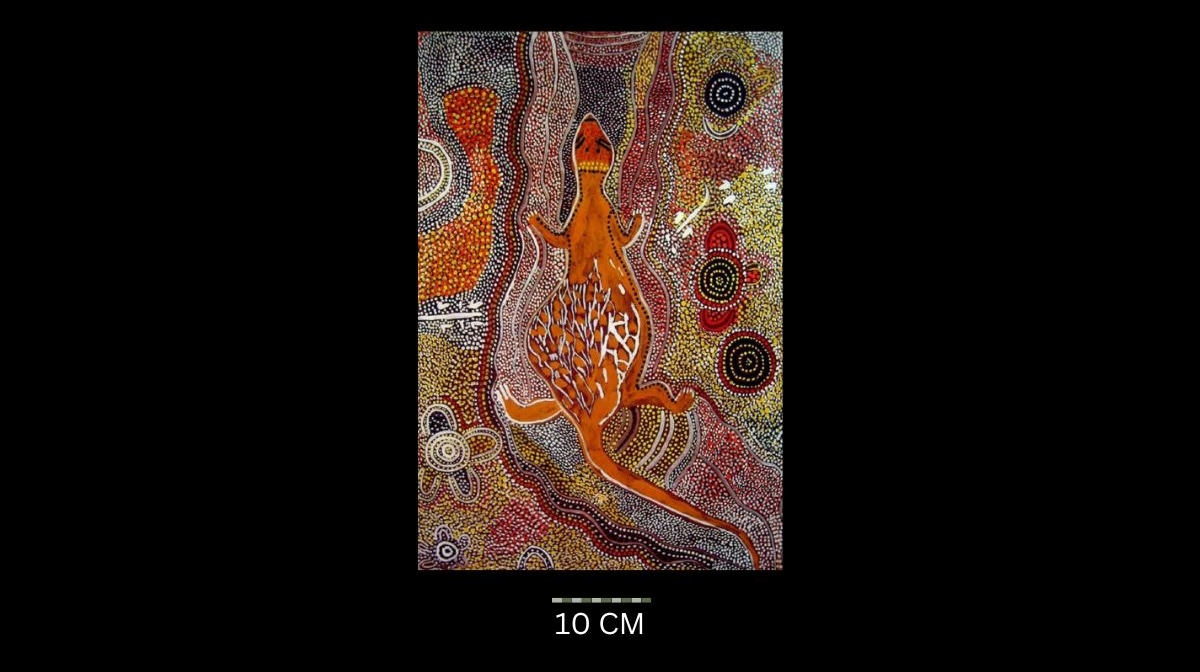
Goanna Dreaming 1973
Synthetic polymer paint on composition board, bears artist’s name, title, and dated 4/4/73, and a description of the story depicted in Peter Fannin’s hand on the reverse,
53.5 x 36 cm
Hammerprice: A$12,000
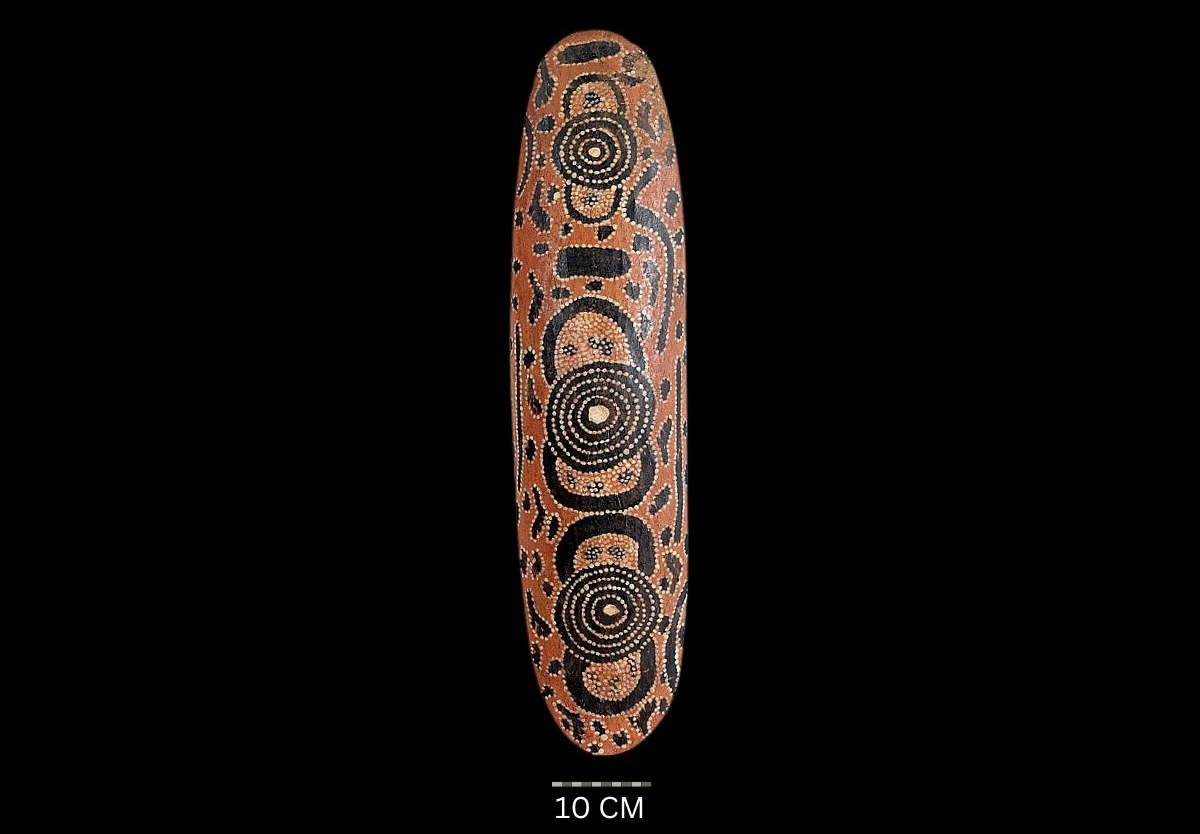
Untitled (Kutitji) (1970s)
Synthetic polymer paint on carved beanwood,
73.5 cm high
Hammerprice: A$3,300

Bushfire Dreaming 1973
Synthetic polymer/powder paint on composition board, bears label with artist’s name, date and explanation by Peter Fannin of story depicted, on the reverse,
28.5 x 28 cm
Hammerprice: A$9,000
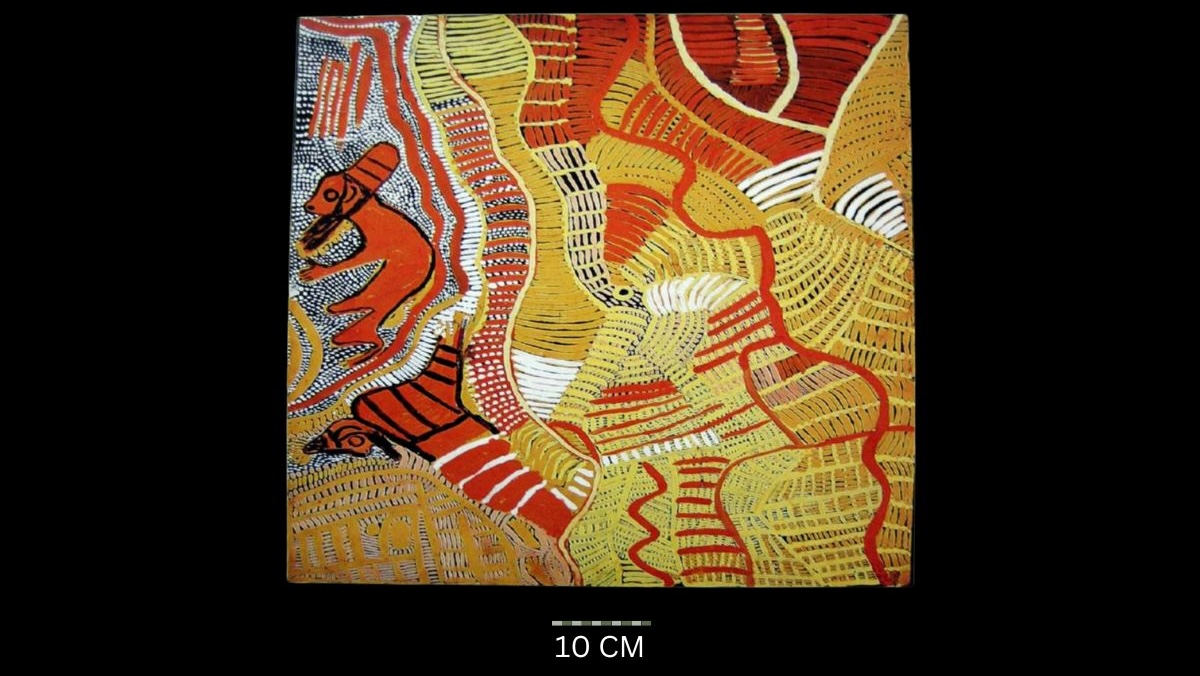
Pangalanga Story 1973
Synthetic polymer powder paint on composition board, bears catalogue numbers 5053 and Cat ’60, No. 30 on the reverse,
64 x 51 cm
Hammerprice: A$10,500

Pura Dreaming (Solanum Melanosperum) 1973
Synthetic polymer/powder paint on composition board, bears artist’s name, date of painting
29 x 28.5 cm
Hammerprice: A$9,500
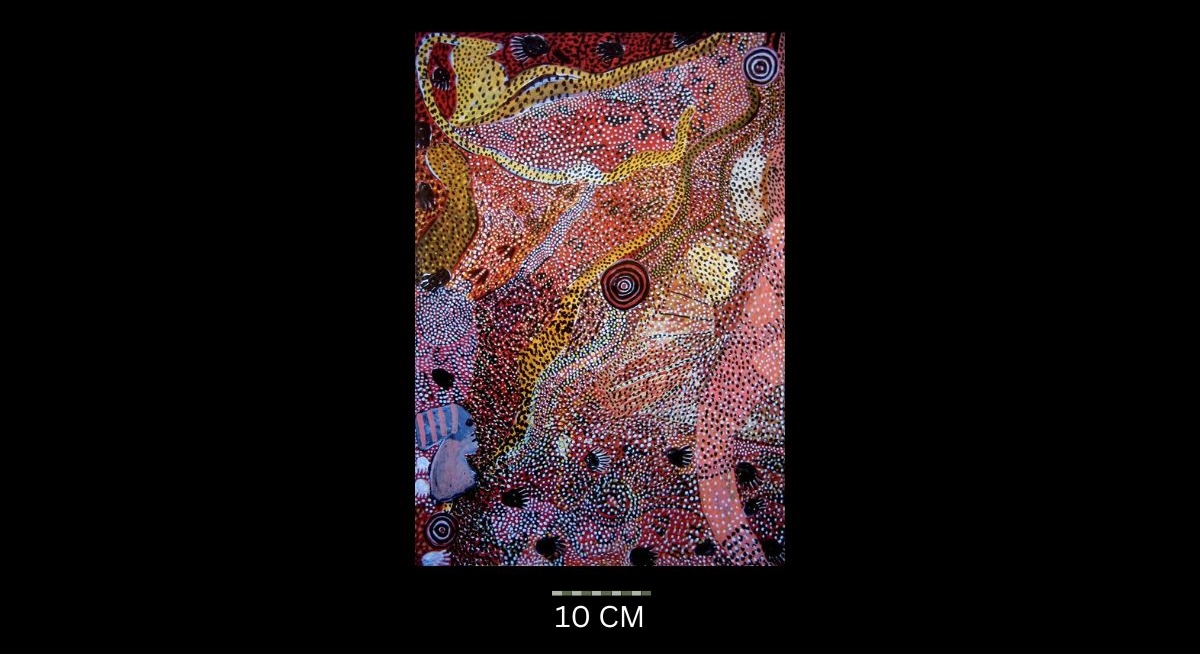
Tjikari 1973
Synthetic polymer powder paint on composition board, bears Papunya Tula catalogue number JW730502 together with title and further descriptions on the reverse,
53.2 x 36.5 cm
UNSOLD
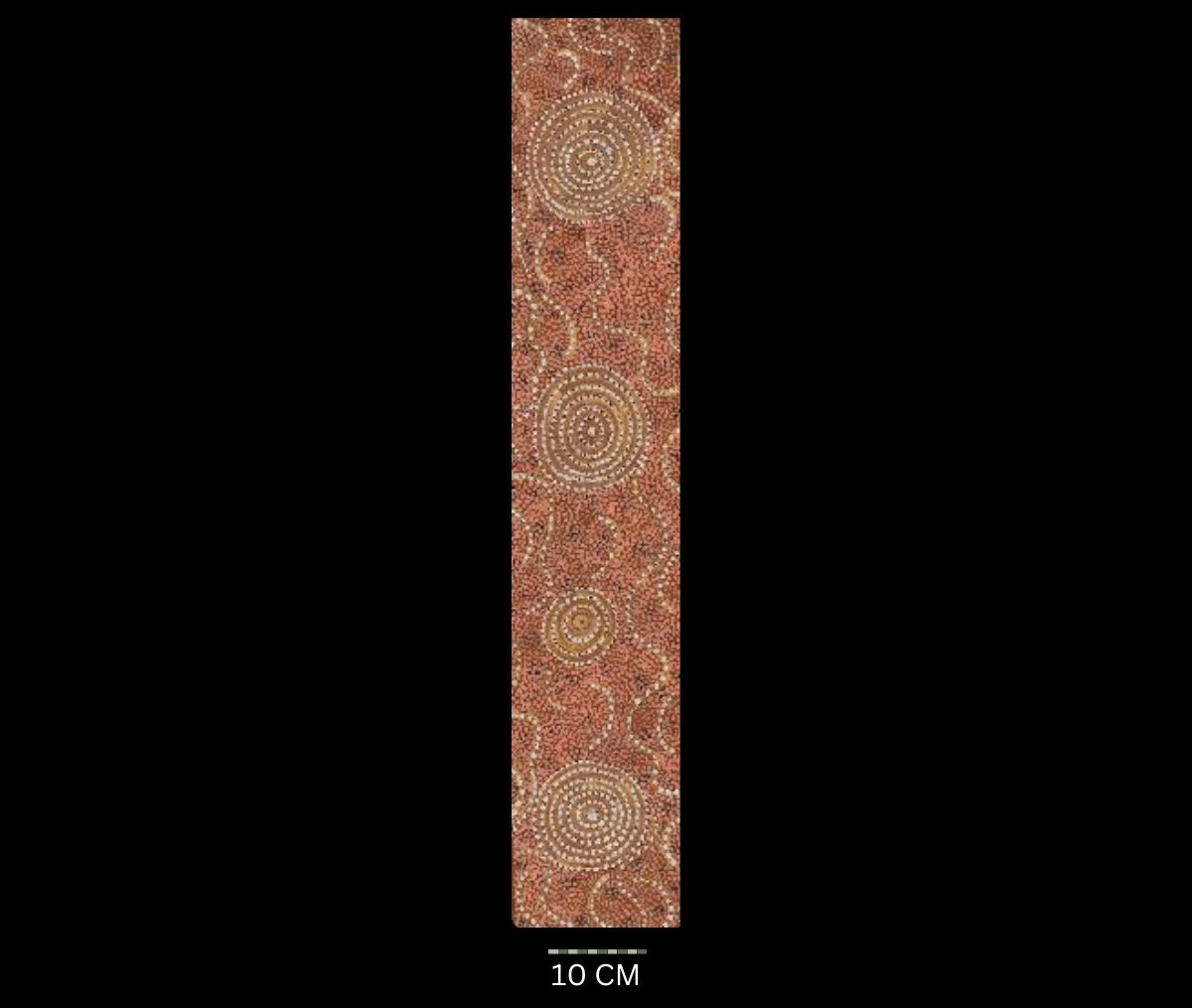
Untitled, 1973
Synthetic polymer paint on composition board,
91 x 20 cm
Hammerprice: A$14,000
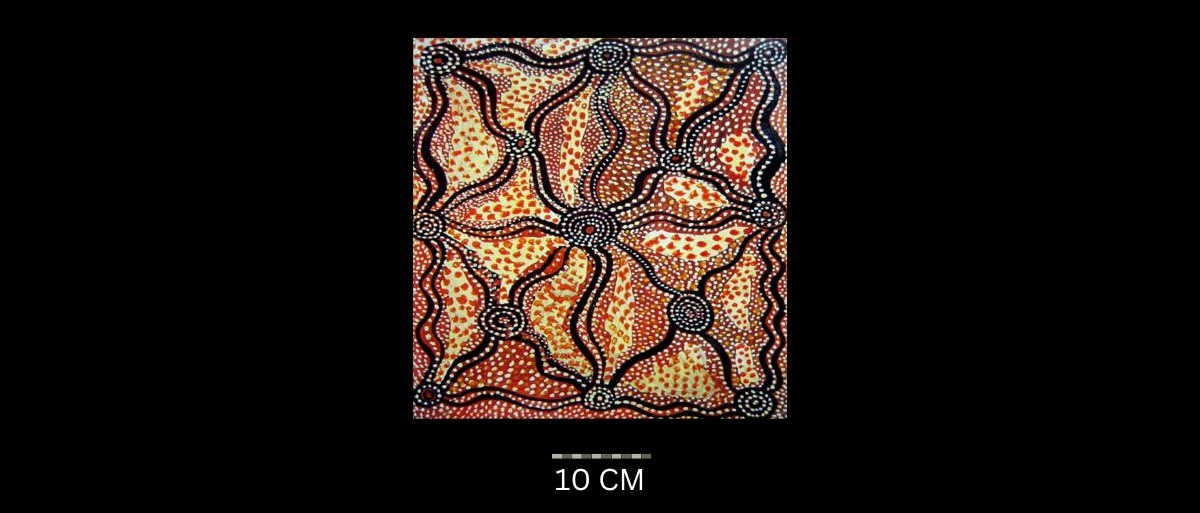
Water Dreaming at Kalipinypa 1973
Synthetic polymer powder paint on artist board, bears artist’s name, date and title, together with Papunya Tula Artists catalogue number TW730855 on the reverse,
37.5 x 27.5 cm
Hammerprice: A$3,800
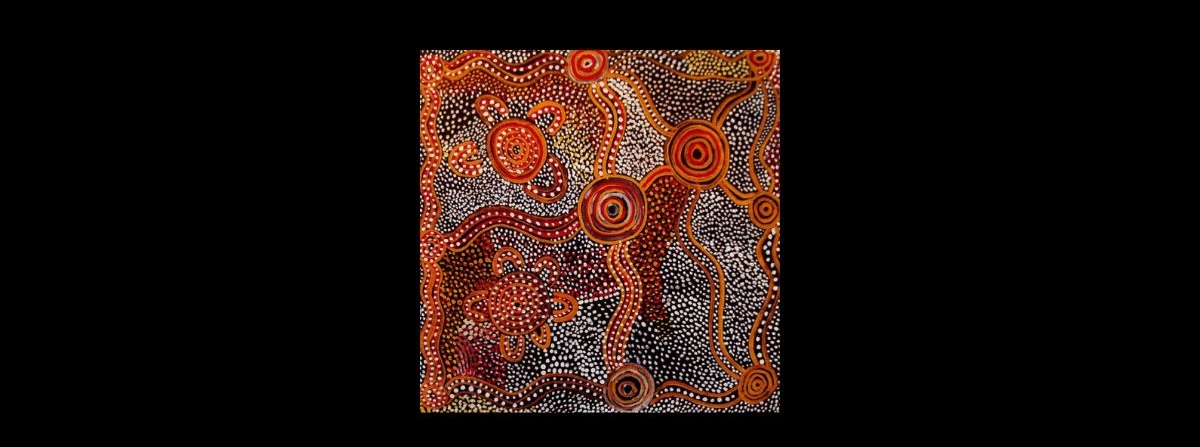
Woman’s Story 1973
Synthetic polymer powder paint on composition board
No size recorded
Hammerprice: A$9,000
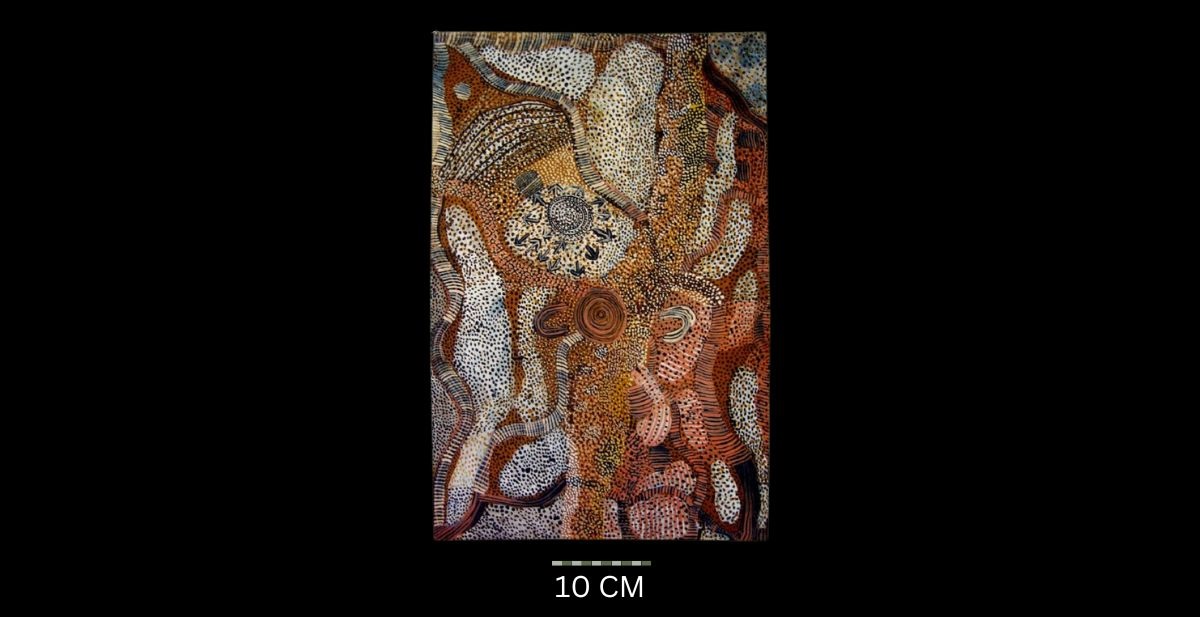
Emu Men at Kalipinypa 1973
Synthetic polymer powder paint on composition board, bears artist’s name ‘Jonny’ (sic) on the reverse,
51 x 33.5 cm
UNSOLD
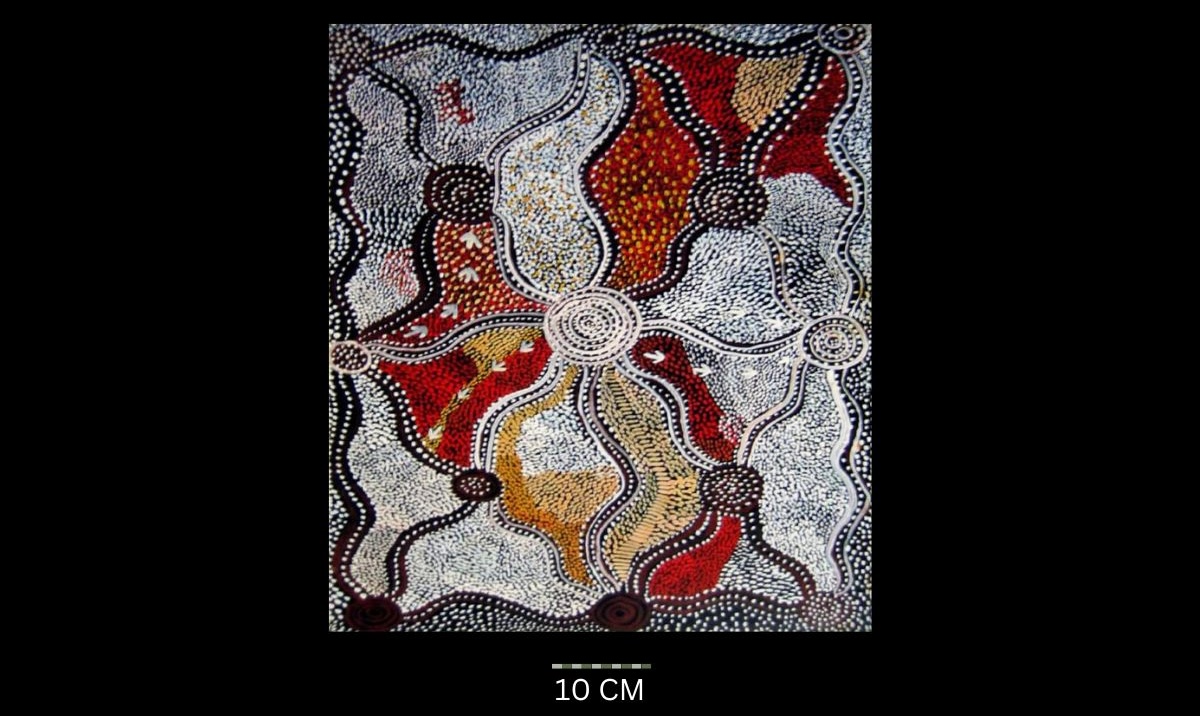
Water Dreaming at Kalipinya, c. 1973
Synthetic polymer powder paint on composition board,
60 x 40 cm
Hammerprice: A$20,000
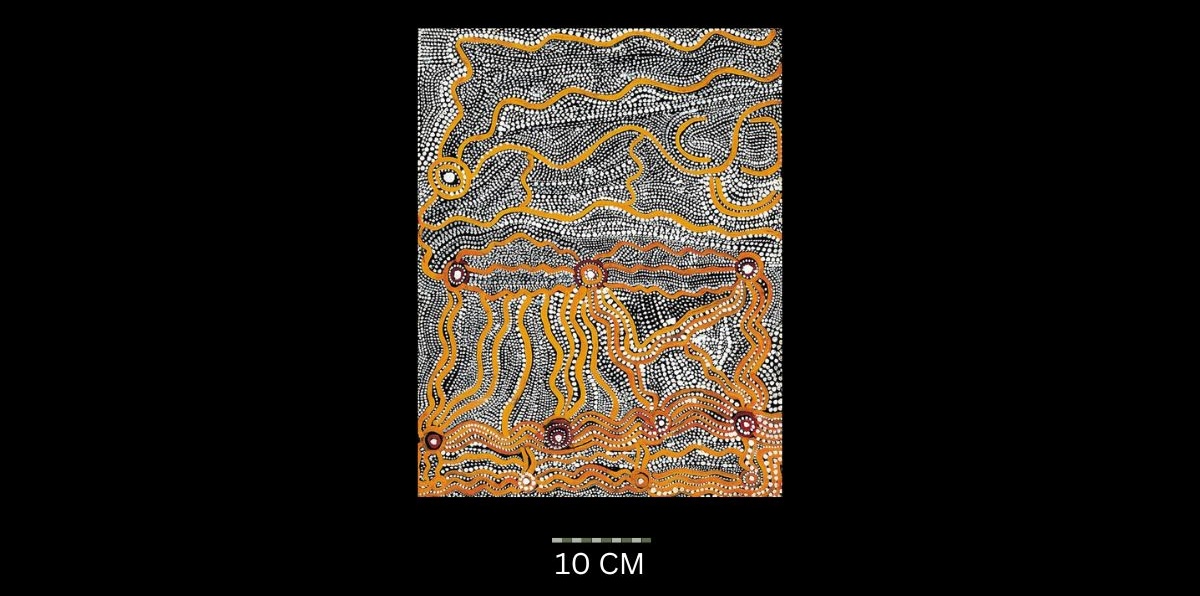
Water Dreaming
Synthetic polymer paint on composition board, bears artist’s name ‘Johnny W’ and area ‘Papunya’ in pencil on the reverse t,
46 x 35.5 cm
UNSOLD
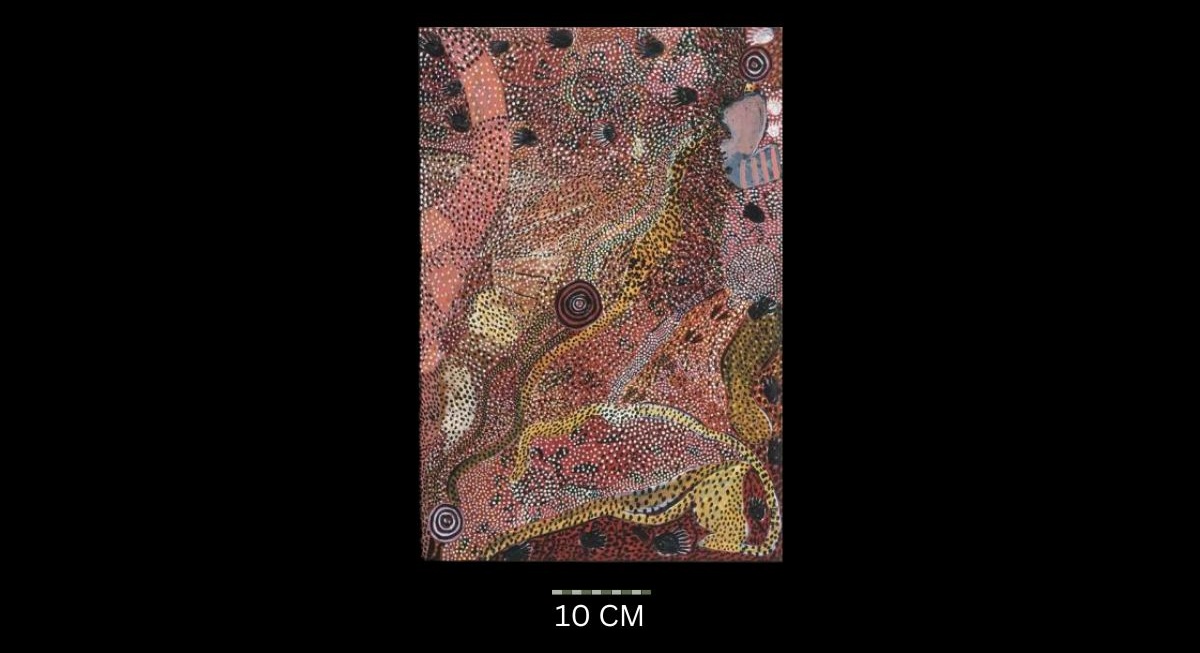
Tjikari 1973
Synthetic polymer powder paint on composition board, bears Papunya Tula catalogue number JW730502, together with title and further descriptions on the reverse,
53.2 x 36.5 cm
Hammerprice: A$27,000
Johnny Warrangkula’s Late Period (1974 Onwards): From Innovation to Market Demand in Papunya Art
From 1974 onwards, renowned Papunya artist Johnny Warrangkula Tjupurrula began painting predominantly on linen and canvas board—a shift that allowed for greater scale and finesse in his work. This transition to finer materials enabled the creation of a couple of monumental masterpieces, including the celebrated painting Spearing of Matingpilangu, a work often cited as one of his most significant artistic achievements.
The Impact of Commercial Demand on Style
However, after around 1978, Warrangkula’s artistic trajectory shifted noticeably. As the Tingari painting style gained commercial popularity in the growing Aboriginal art market, Warrangkula, like many of his peers, began adapting his style to meet market expectations. During this period, he largely moved away from the innovative abstraction and nuanced compositions that had defined his earlier work.
Most artworks from this later phase follow a more formulaic visual language, dominated by Western Desert iconography and repeated dotting patterns. The unique visual rhythm and emotional depth found in his earlier pieces gave way to more conventional compositions, likely driven by commercial pressure.
A Decline in Subtlety and Colour Complexity
One of the most notable shifts in Warrangkula’s later works is the loss of the subtle colour blending that once evoked the rich textures and tones of the desert landscape. These paintings instead feature monochromatic dot fields and clearer, more graphic representations of ancestral motifs, sacrificing the layered abstraction and earthy complexity of his early to mid-1970s output.
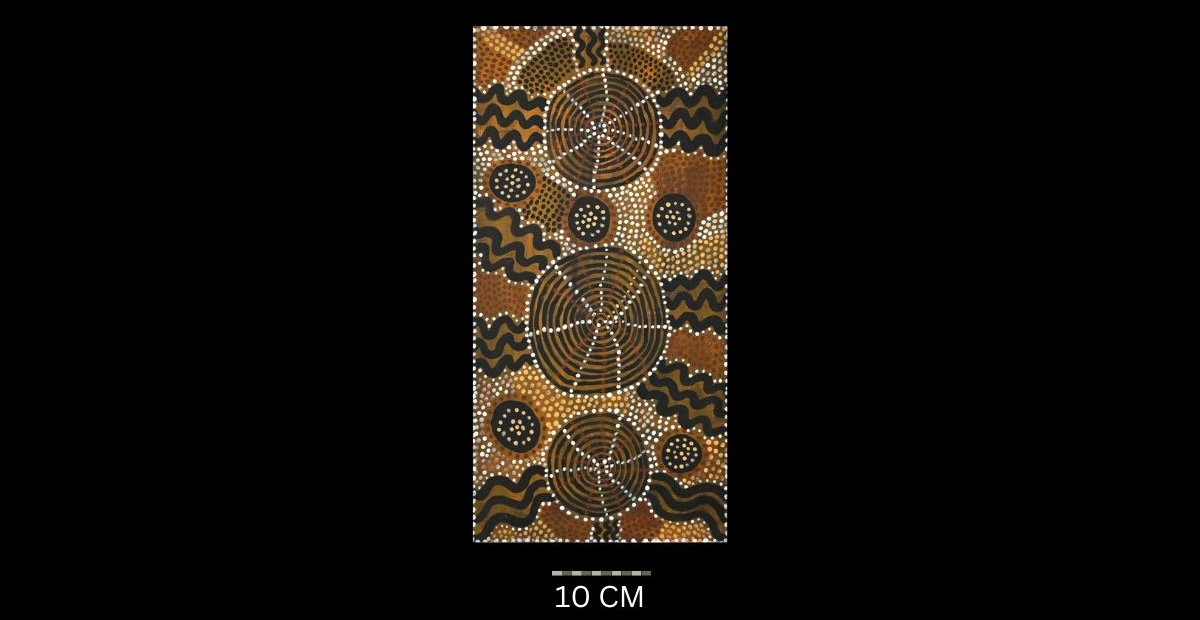
Three Spider Dreaming, 1974
Synthetic polymer paint on canvas board,
51 x 25.5 cm
Hammerprice: A$8,000
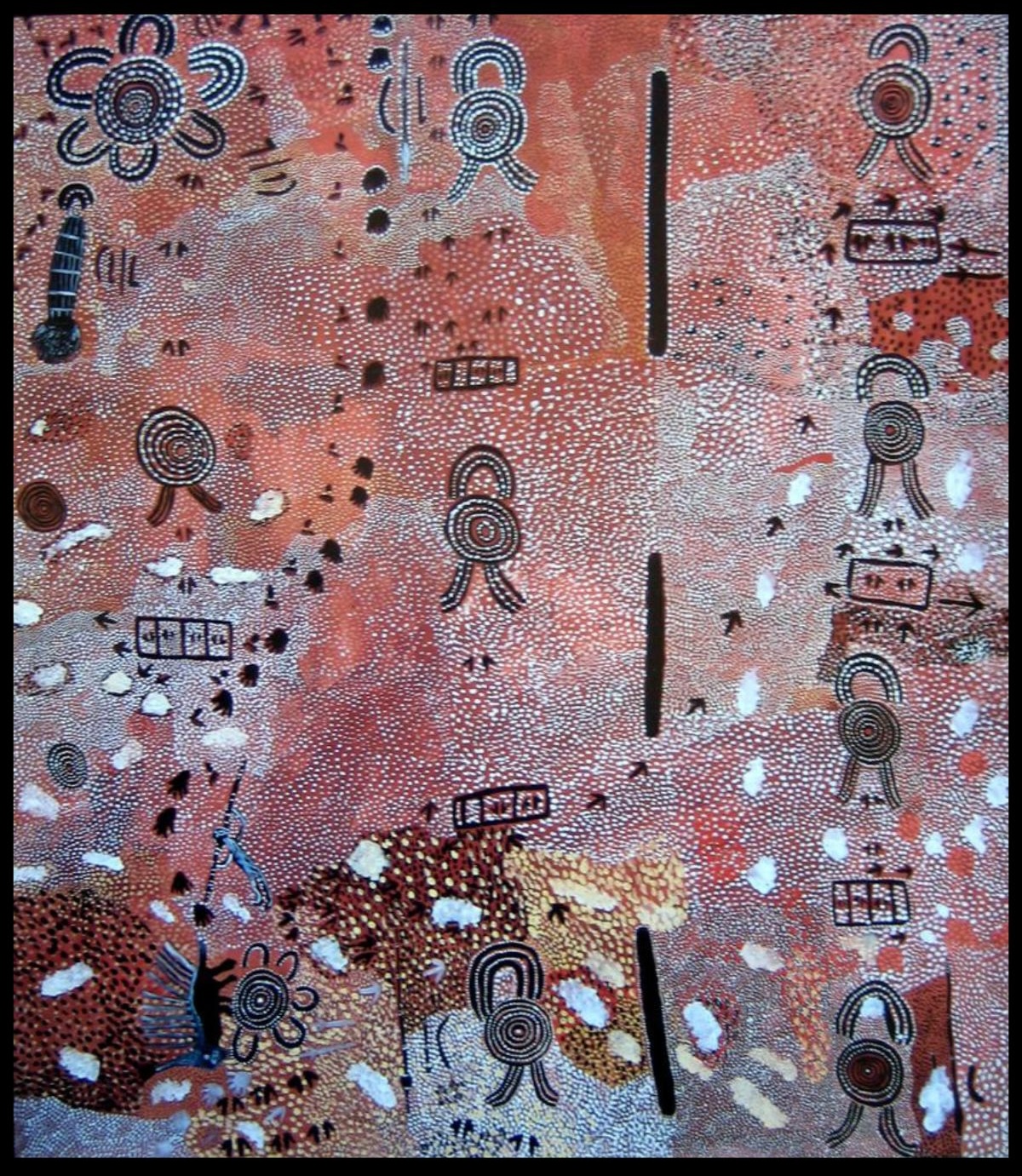
Spearing of Matingpilangu 1974
Synthetic polymer paint on linen, bears Papunya Tula Artist’s catalogue number JW74411 on the reverse,
173 x 203 cm
Hammerprice: A$295,000
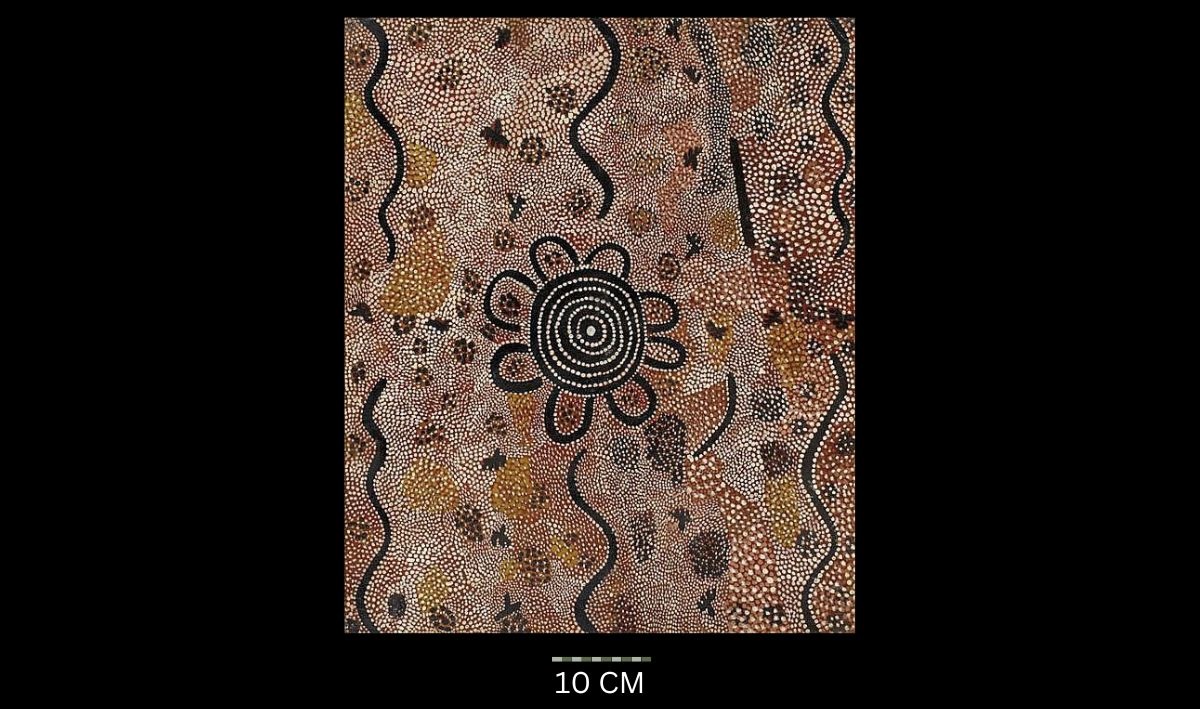
Wild Potato (1975)
Synthetic polymer paint on artist board,
61 x 50.5 cm
Hammerprice: A$29,000

Womens Dreaming 1975
Synthetic polymer paint on canvas board, bears artist’s name, description of the story, and date on the reverse of frame,
50.5 x 76 cm
Hammerprice: A$7,500
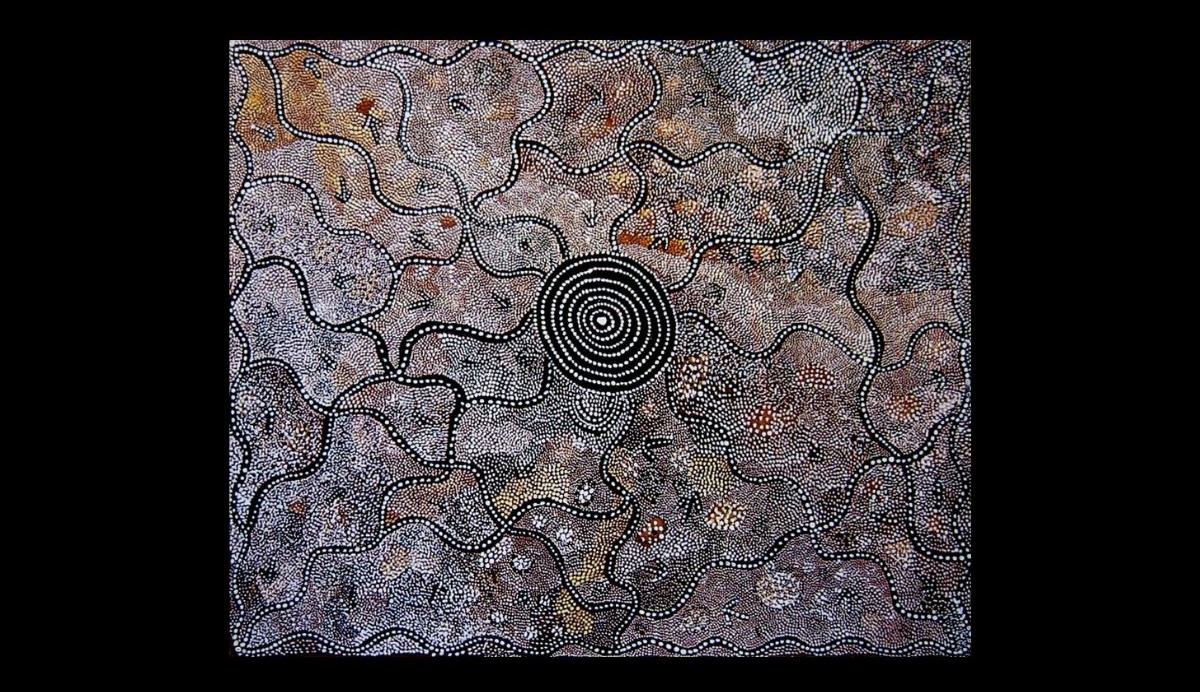
Water Dreaming at Tjikarri (c. 1975)
Synthetic polymer paint on canvas
No size recorded
Hammerprice: A$6,500
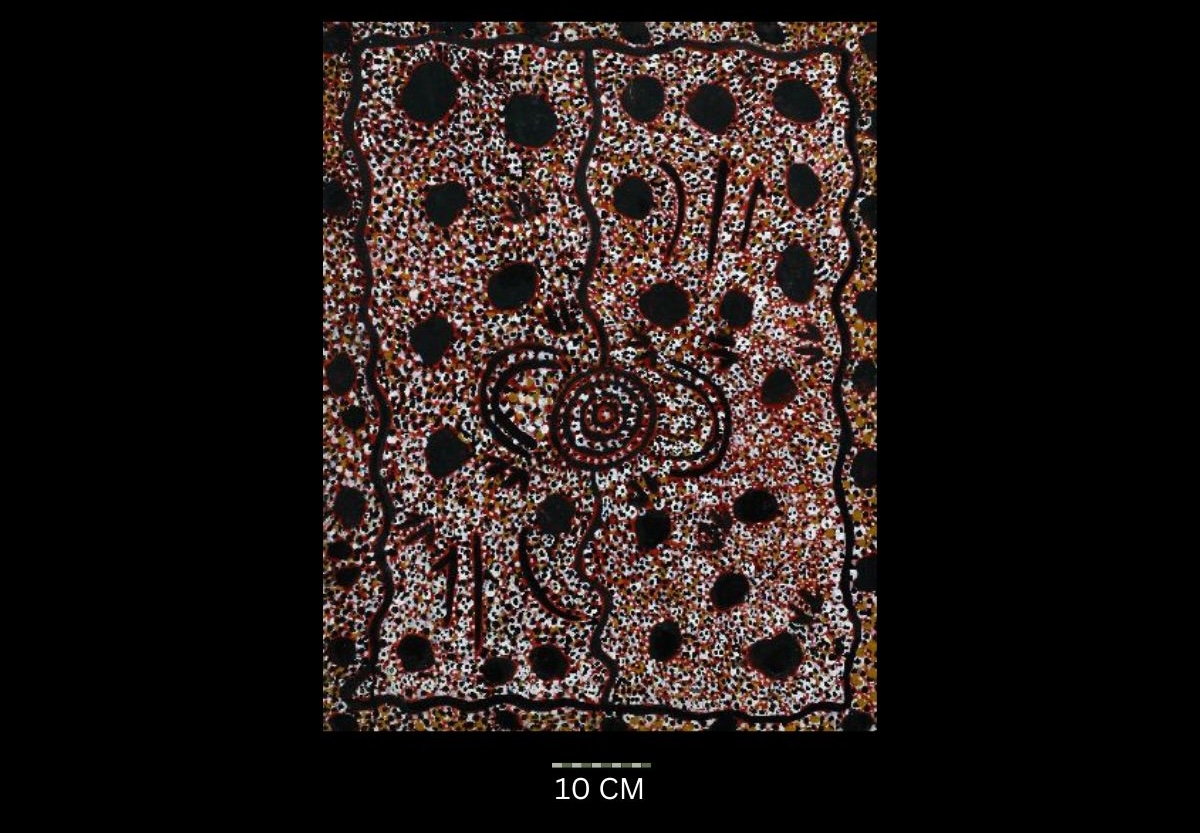
Untitled 1975
Synthetic polymer paint on canvas board, signed verso: Jonny W,
71 x 56 cm
Hammerprice: A$9,000
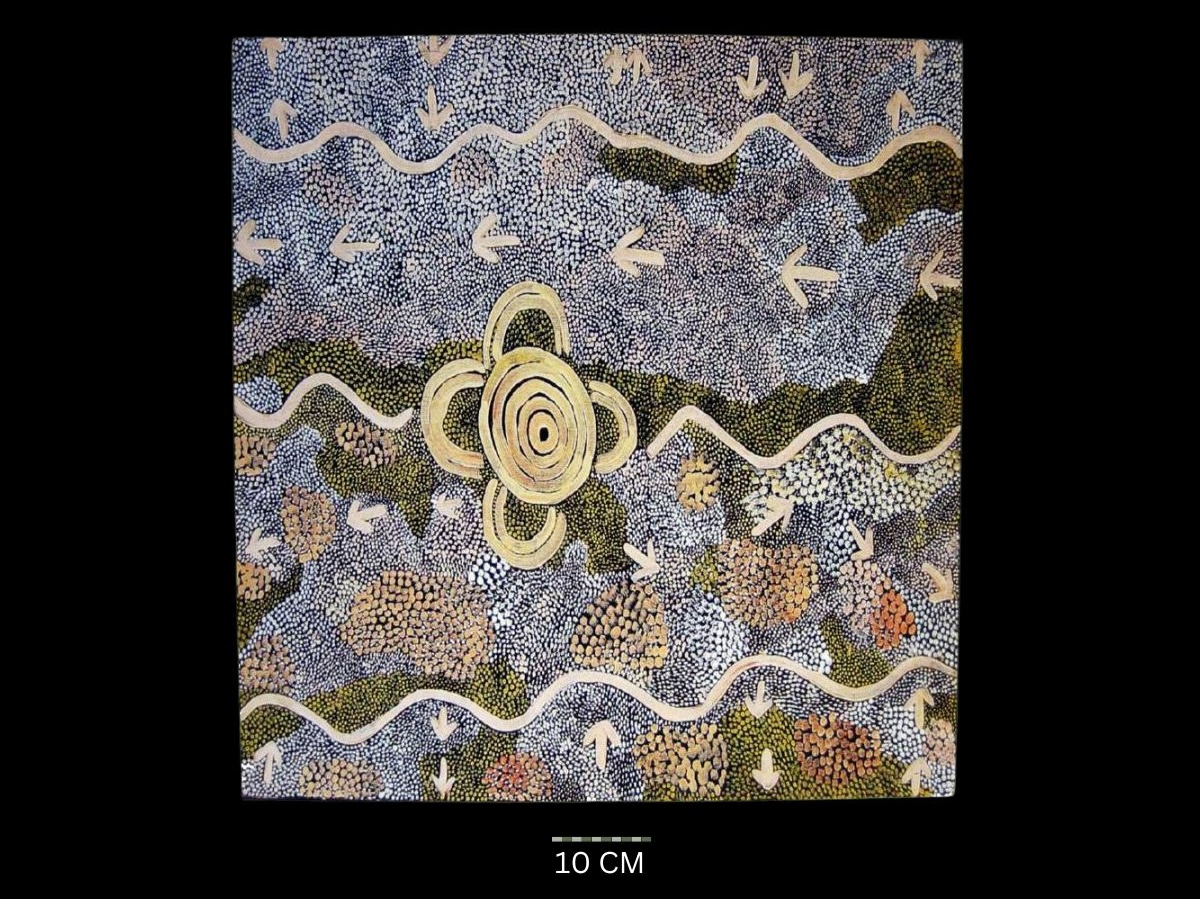
Water Dreaming at Kalipinypa 1976
Synthetic polymer paint on artists board,
76 x 60 cm
Hammerprice: A$3,400
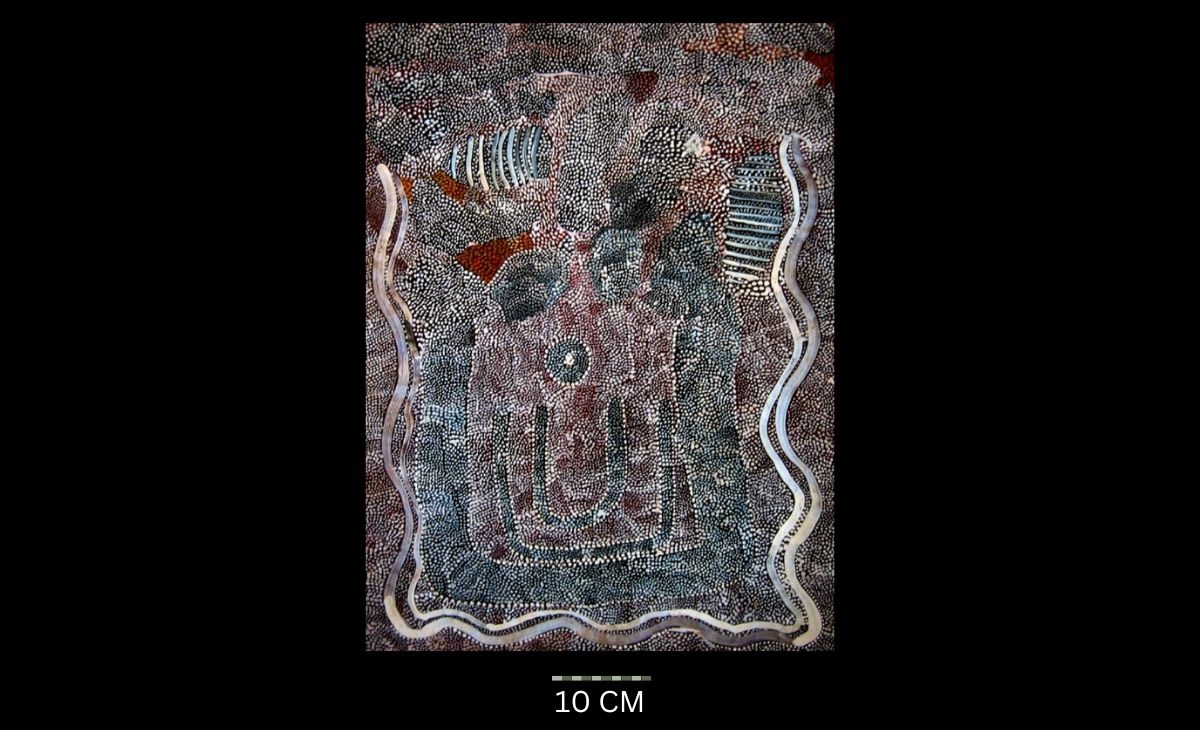
Water Dreaming 1977
Synthetic polymer powder paint on composition board, bears artist’s name and inscribed GB 77 on the reverse,
62 x 45 cm
Hammerprice: A$70,000
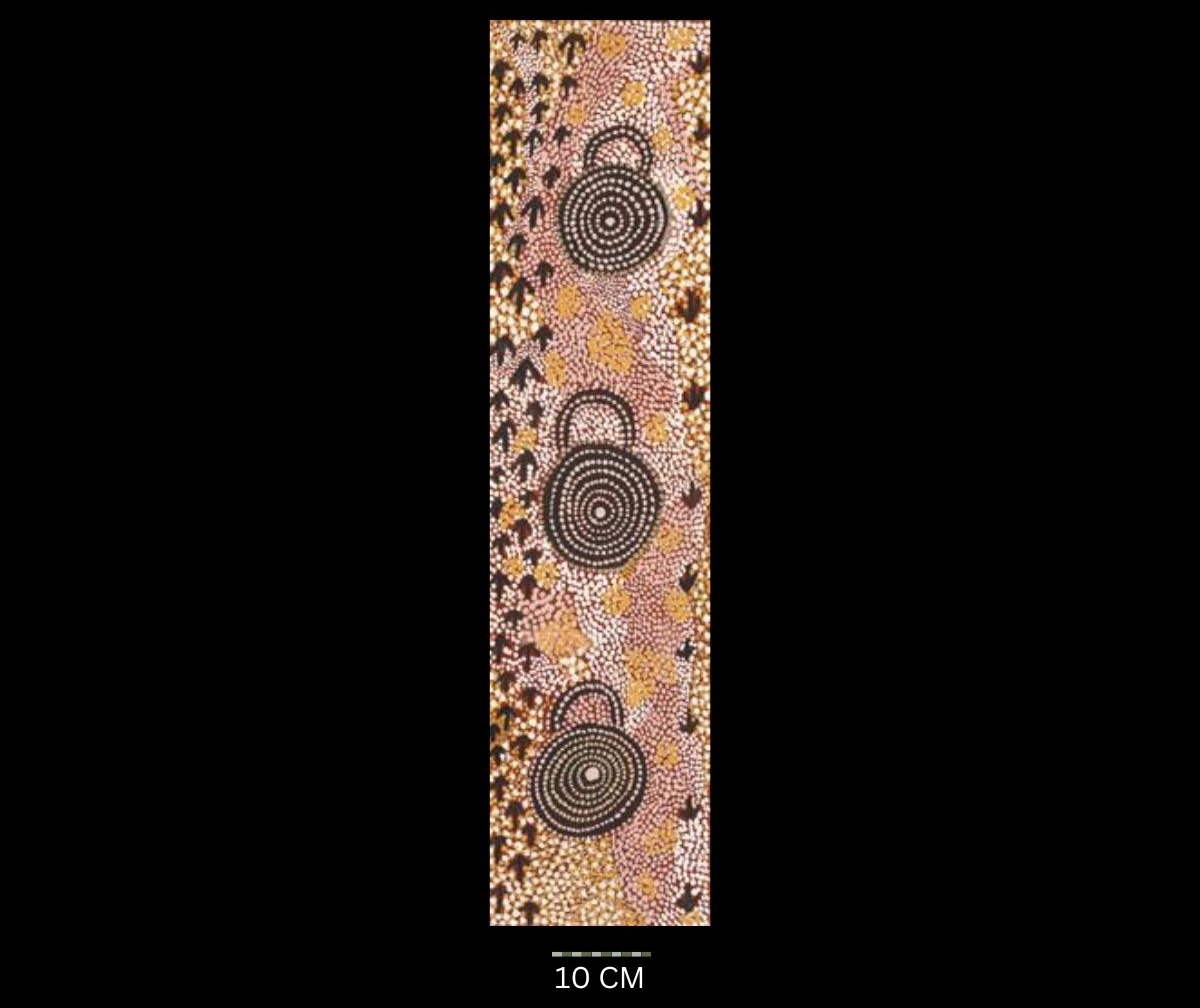
Wuruwarrulpa (Emu Dreaming) 1978
Acrylic on board, inscribed verso: JW780726/ Wuruwarrulpa; accompanied by Papunya Tula Artists Pty. Ltd. documentation (cat. no. JW780726),
90.5 x 22.5 cm
Hammerprice: A$15,000
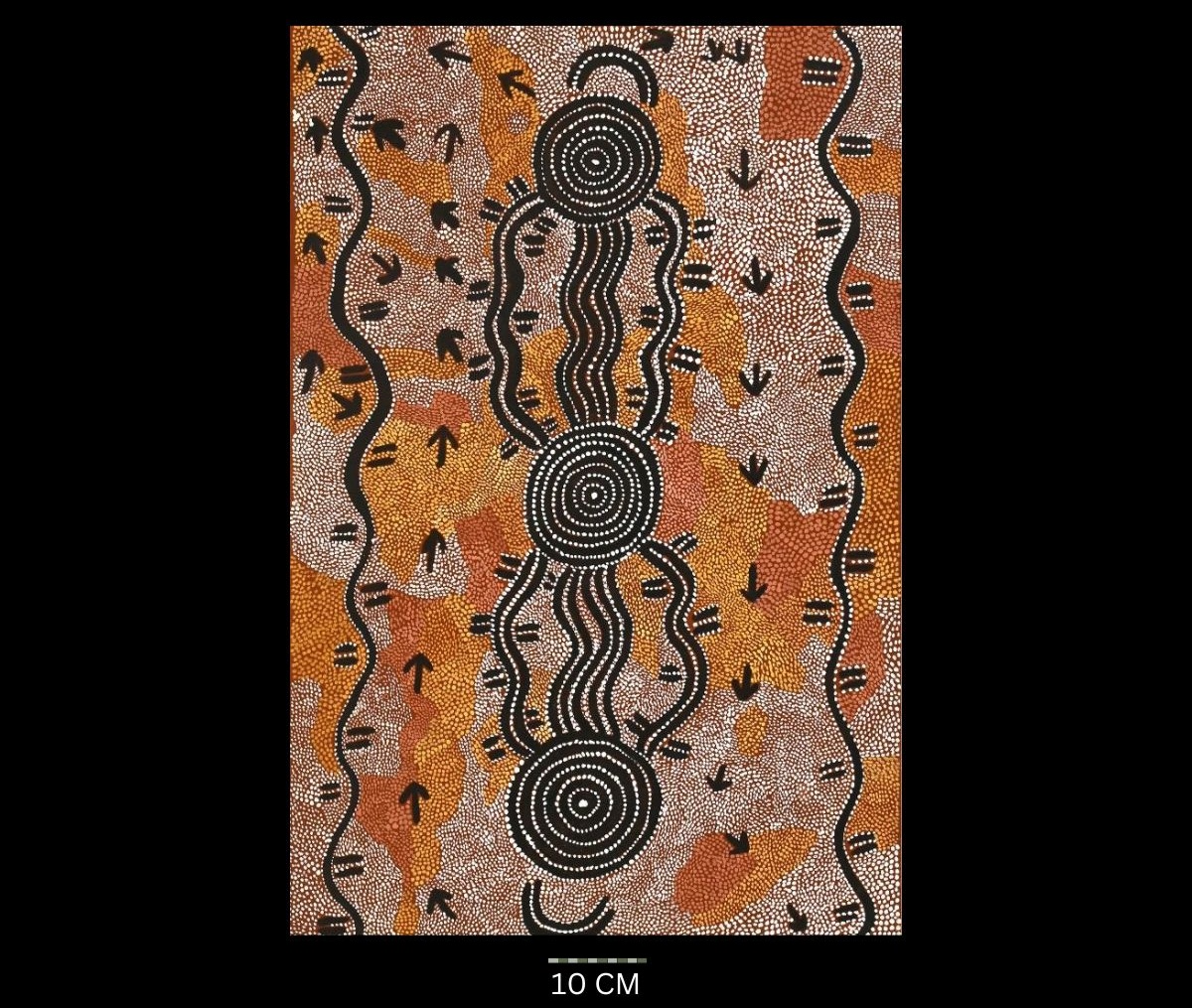
Kalipyinpa, 1978
Synthetic polymer paint on canvas,
61 x 91.5 cm
Hammerprice: A$11,500
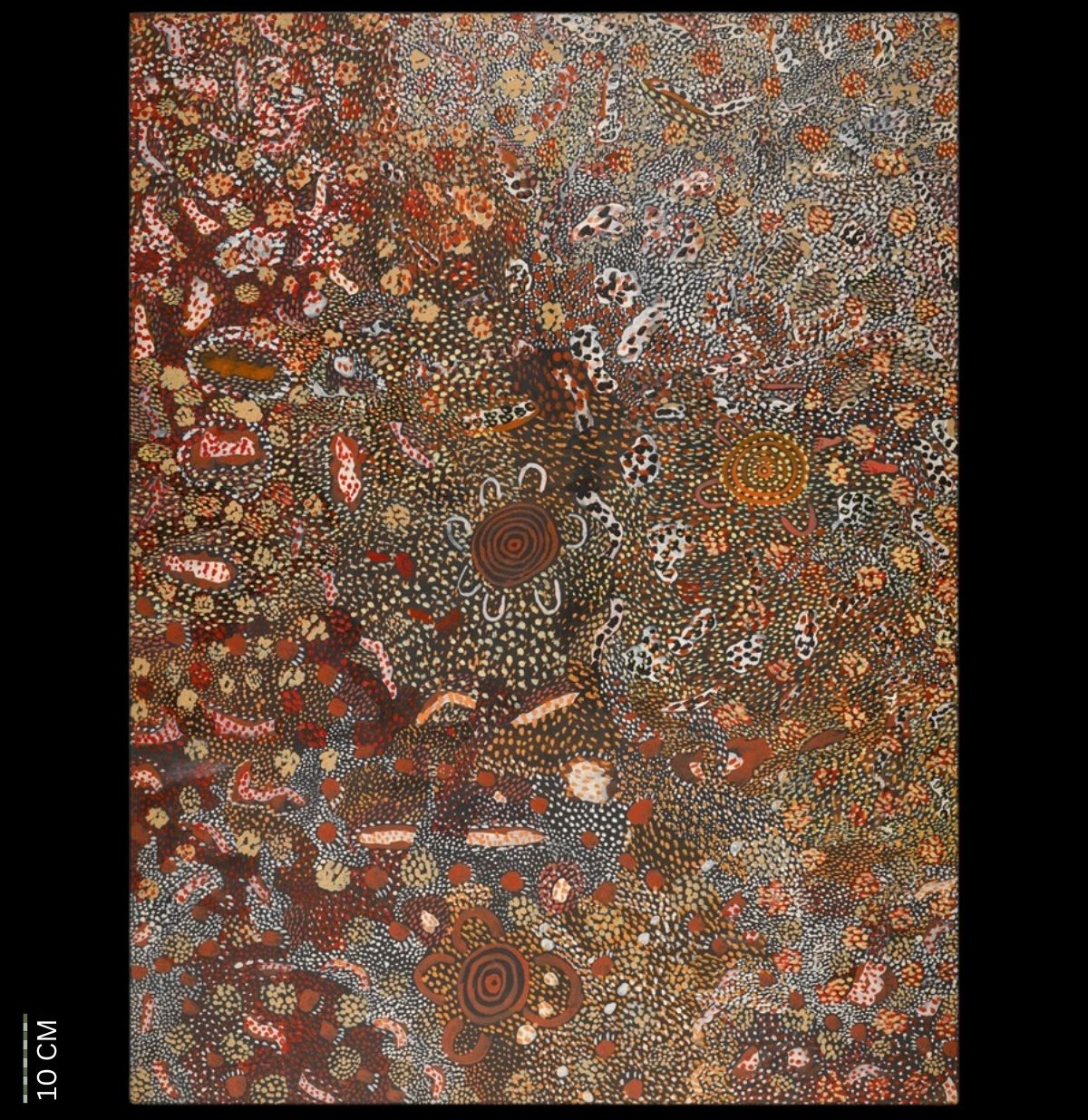
Camp at Walungurru – Dingo Camp At Tinki
Synthetic polymer powder paint on composition board, bears Papunya Tula Artists catalogue number JW731201, and various other inscriptions on the reverse,
122 x 91 cm
Hammerprice: A$130,000
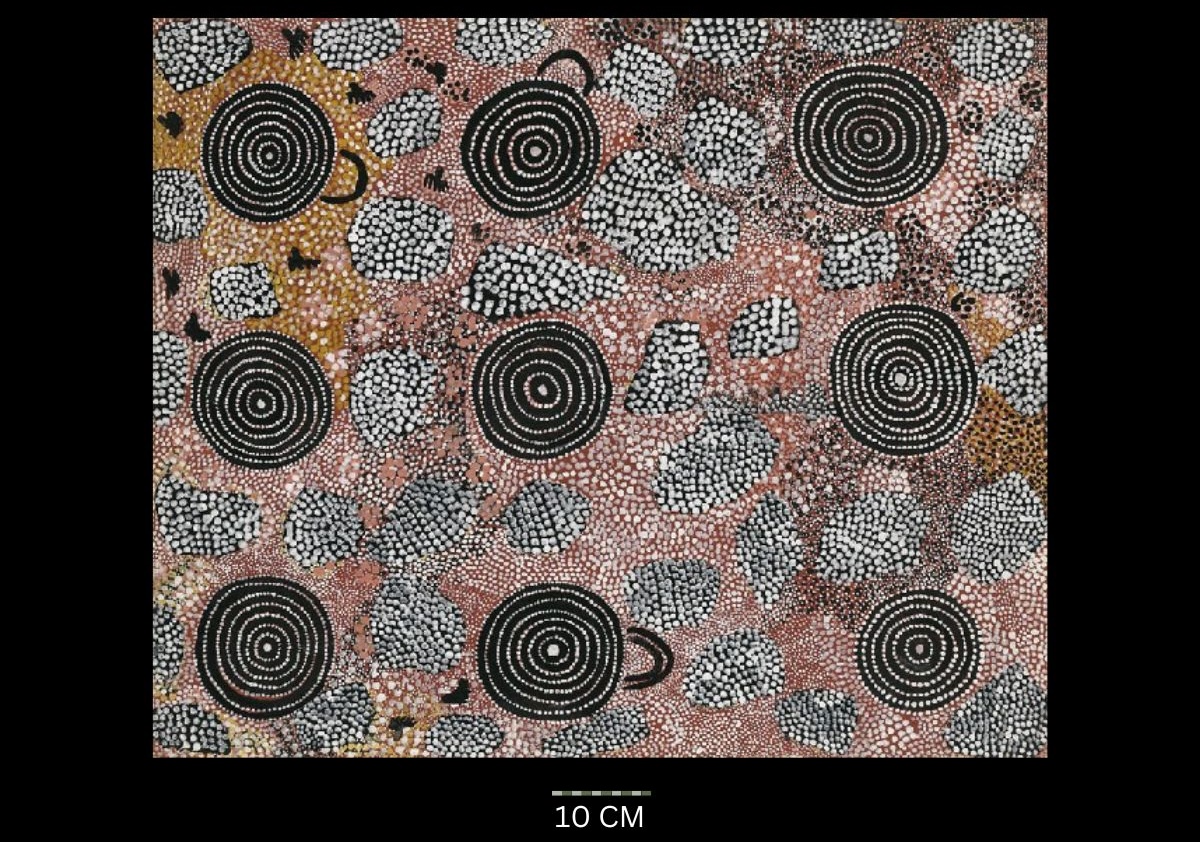
Untitled (1978)
Synthetic polymer paint on canvas,
89.5 x 74.5 cm
Hammerprice: A$12,000
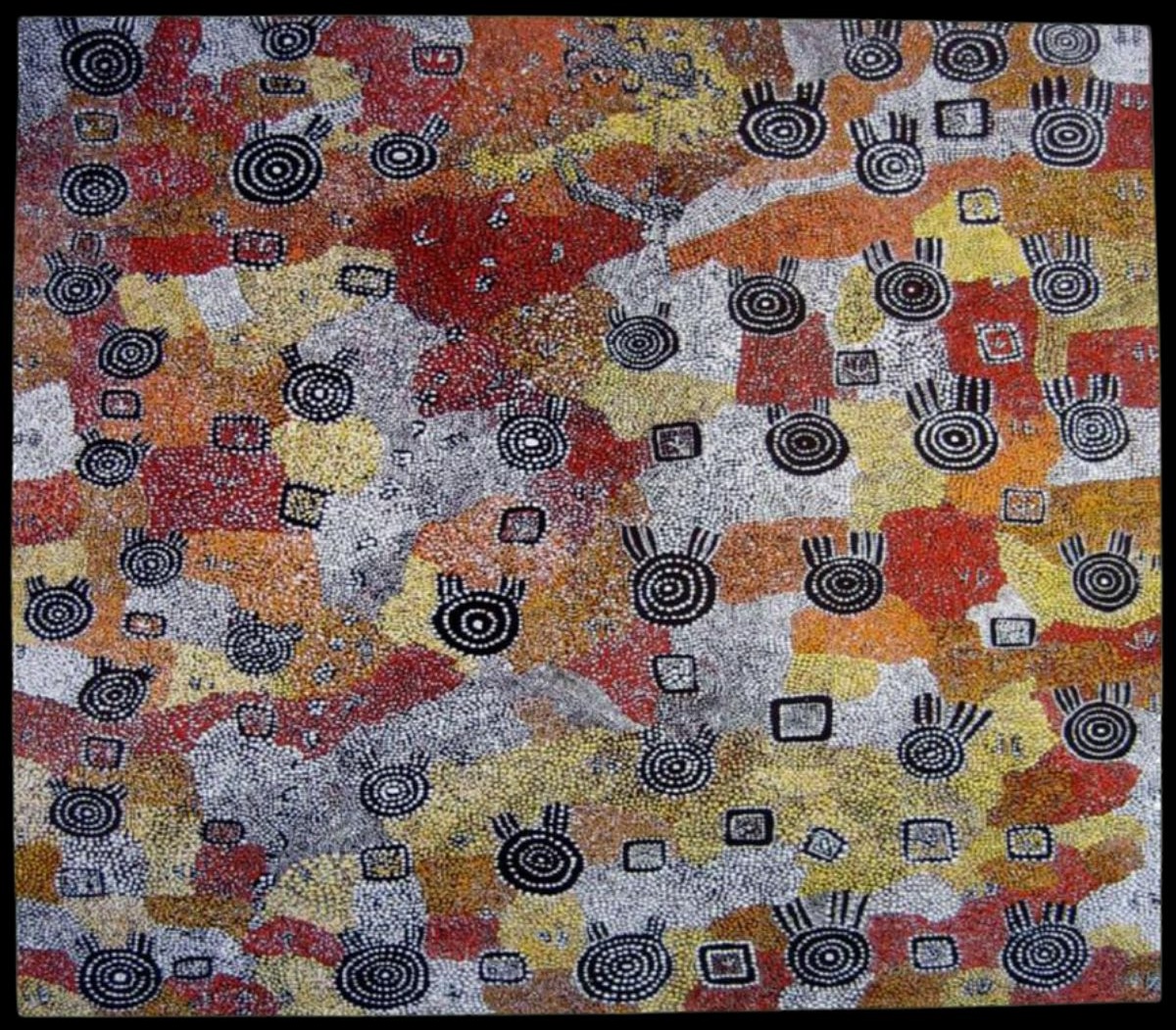
Tjikarri 1979
Synthetic polymer powder paint on canvas,
173 x 200 cm
Hammerprice: A$16,000
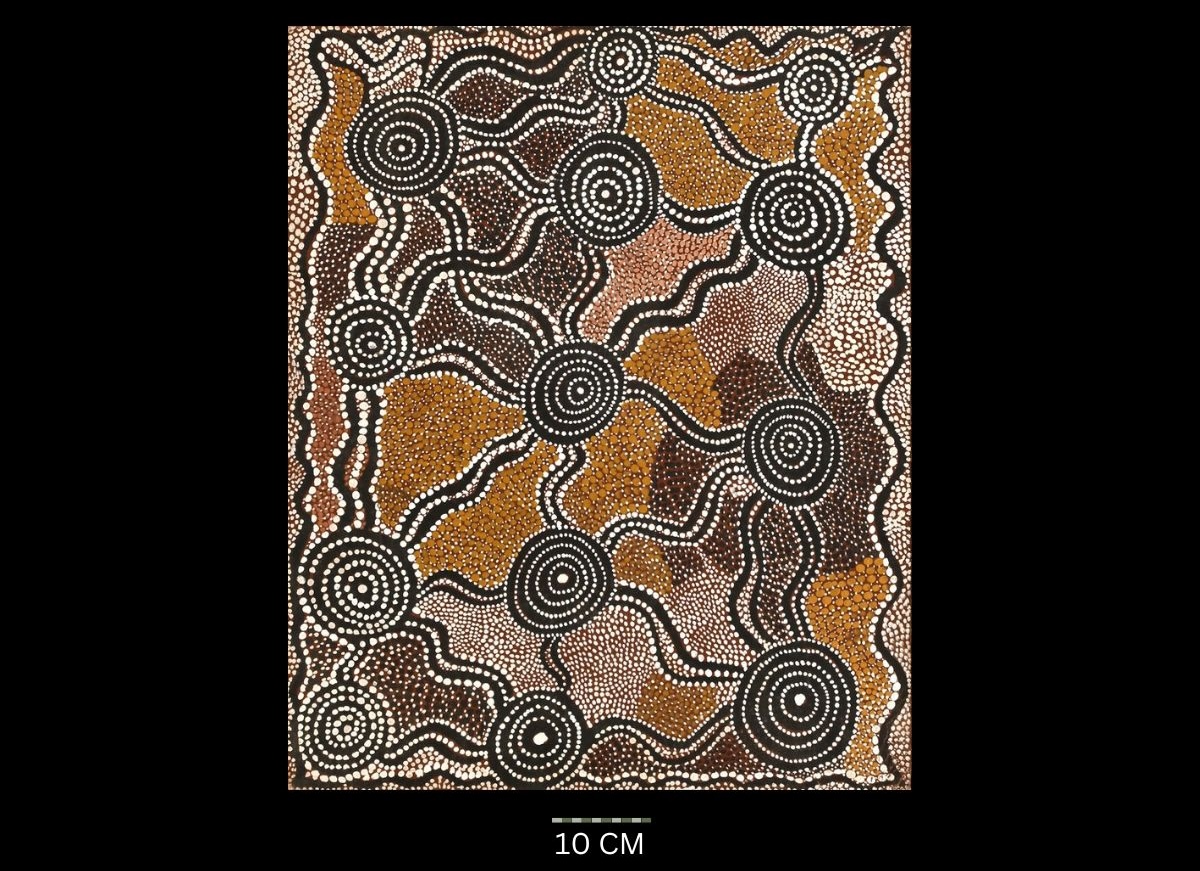
Pitjarra, 1979
Synthetic polymer paint on canvas board, accompanied by a certificate of authenticity from Papunya Tula Artists,
61 x 76.5 cm
Hammerprice: A$16,000
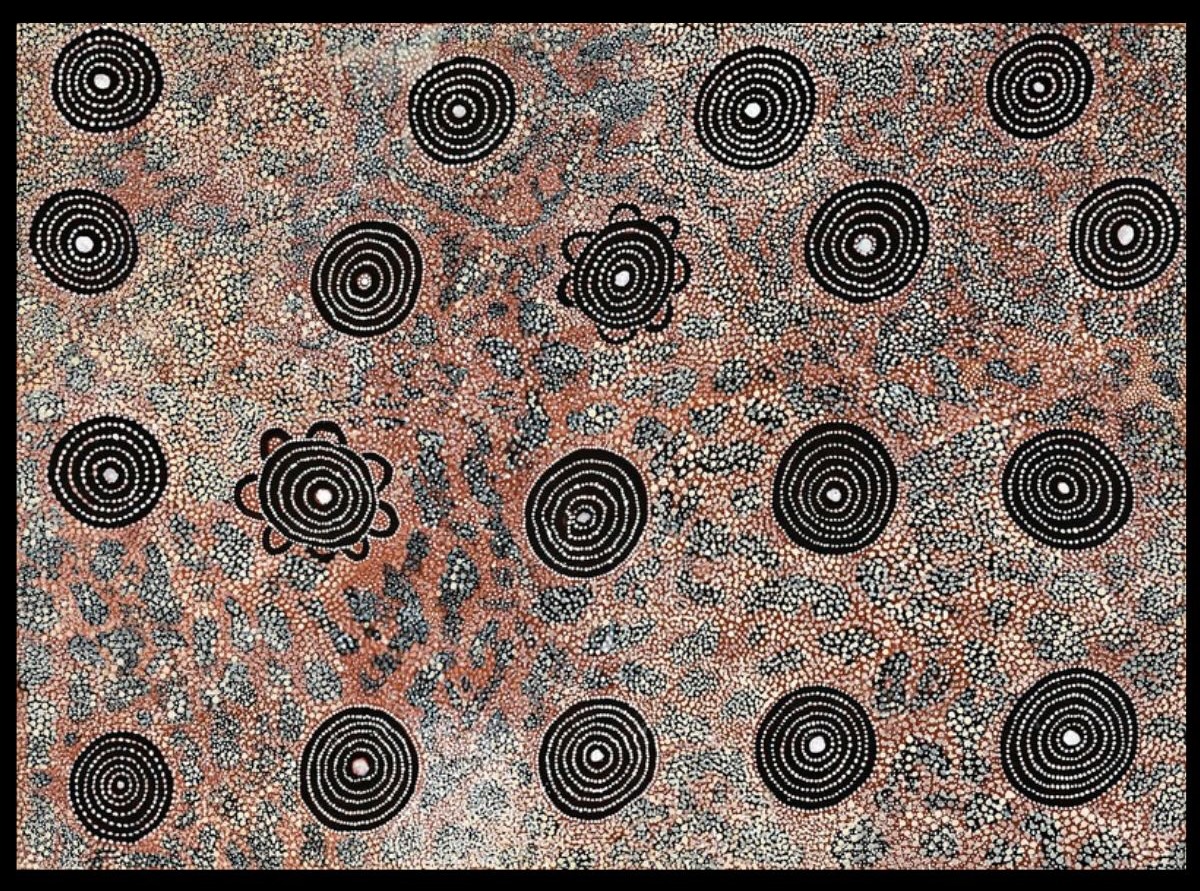
Tjikari, 1980
Synthetic polymer paint on linen, bears inscription verso Papunya Tula Artists cat. JW800318,
168 x 122 cm
Hammerprice: A$11,000
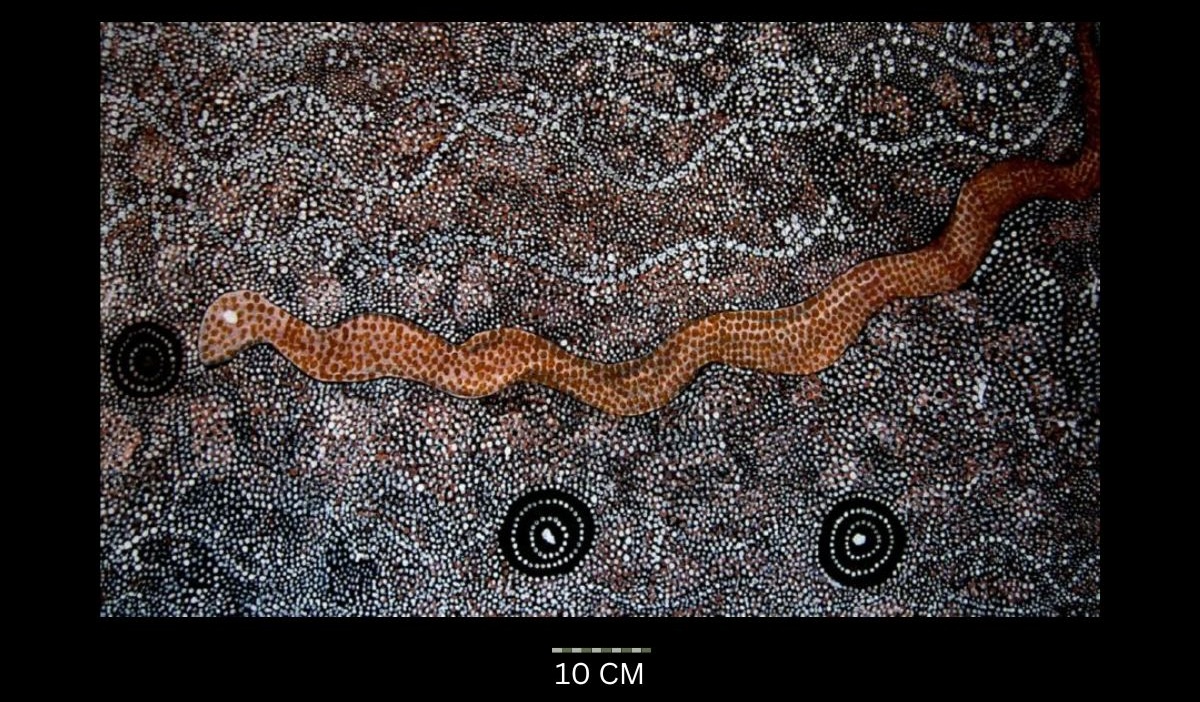
Yipa Story 1981
Synthetic polymer paint on canvas, bears Papunya Tula Artists catalogue number JW810901 on the reverse,
100 x 60 cm
Hammerprice: A$12,500
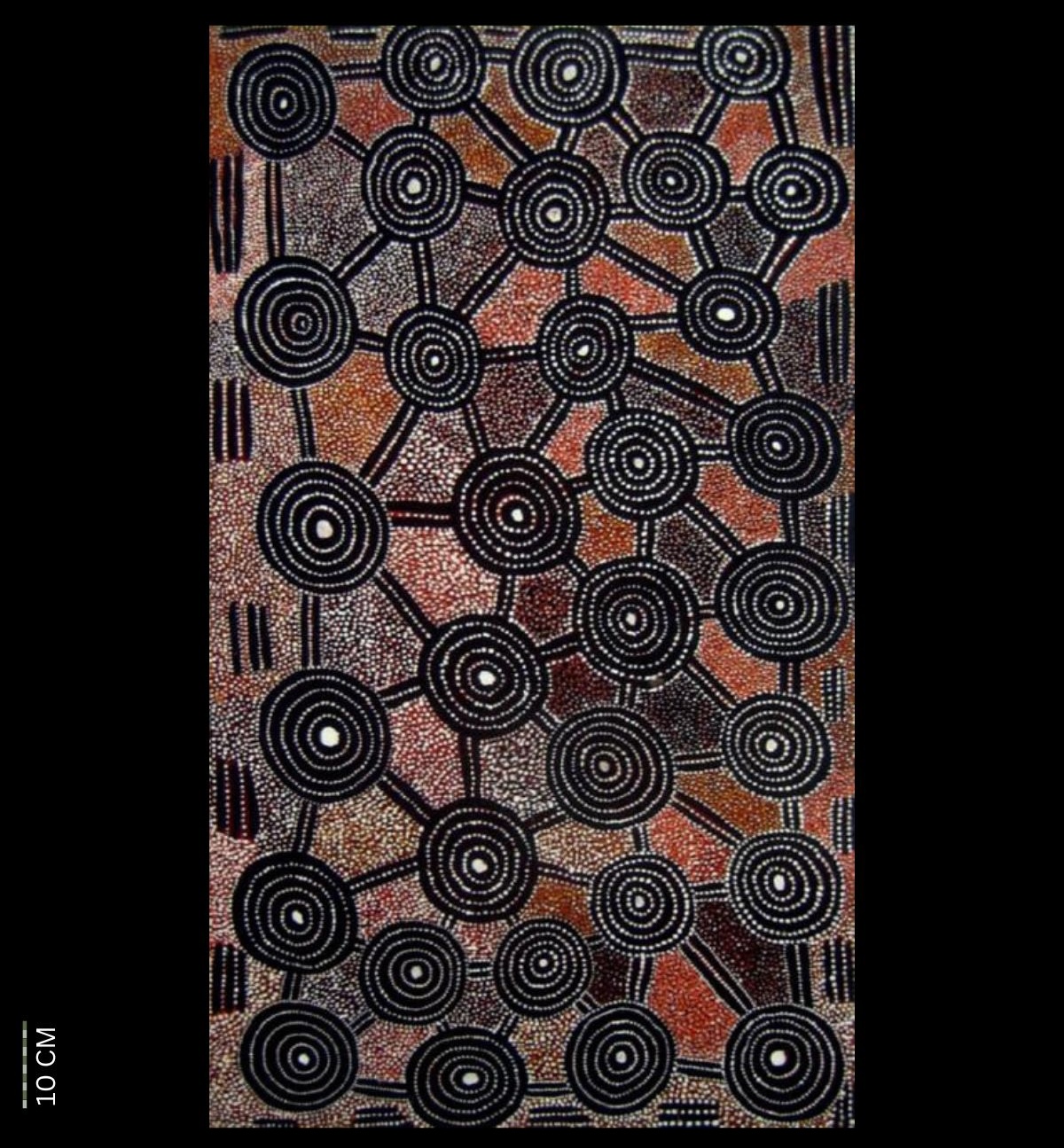
Tingari Cycle 1982
Synthetic polymer paint on linen, bears Papunya Tula Artists catalogue number JW820936 on the reverse, together with the artist’s name and title on reverse of stretcher,
71 x 124 cm
Hammerprice: A$8,000
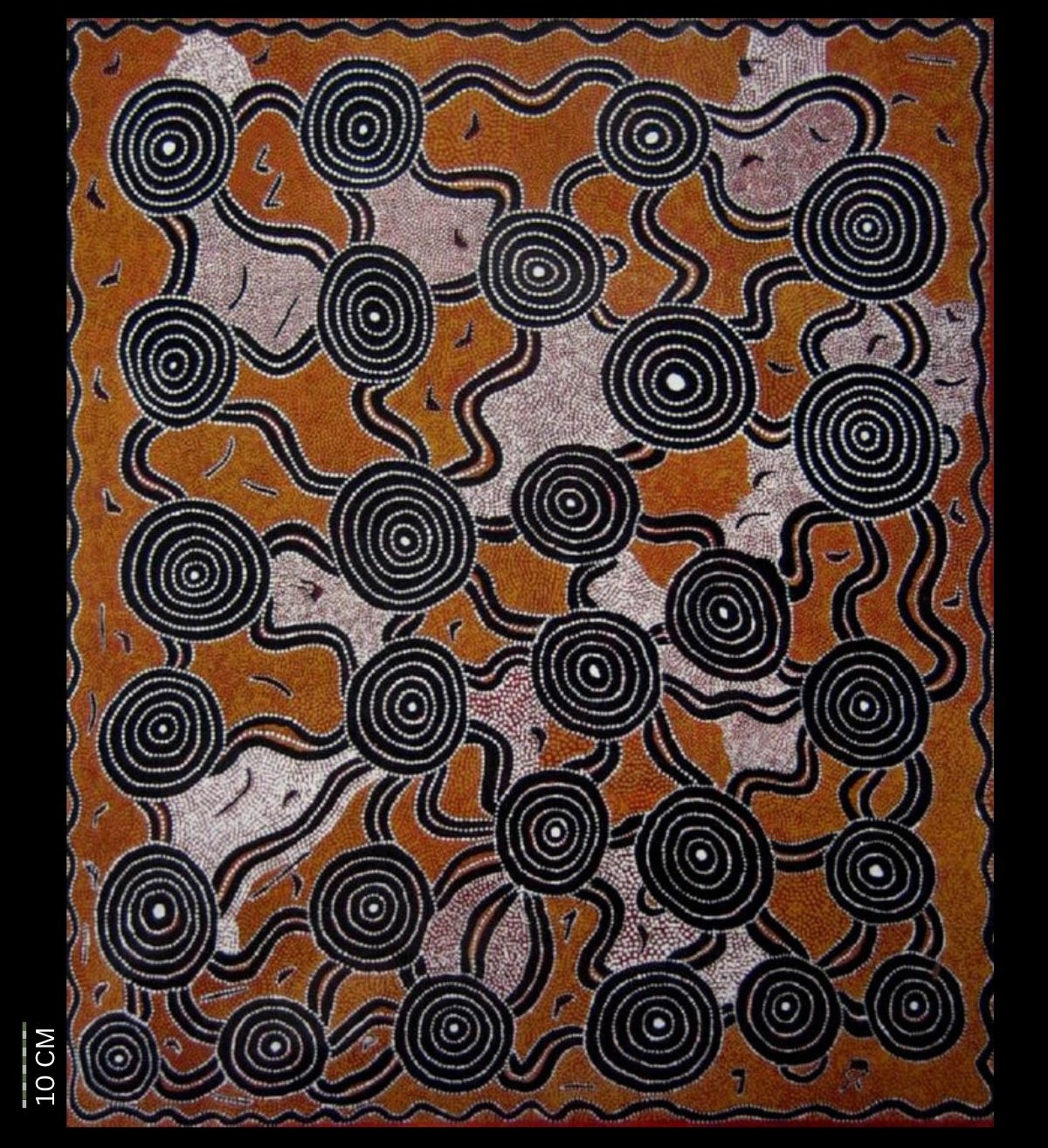
Tingari at Tjikarri, 1983
Synthetic polymer paint on canvas,
127 x 107 cm
Hammerprice: A$17,000
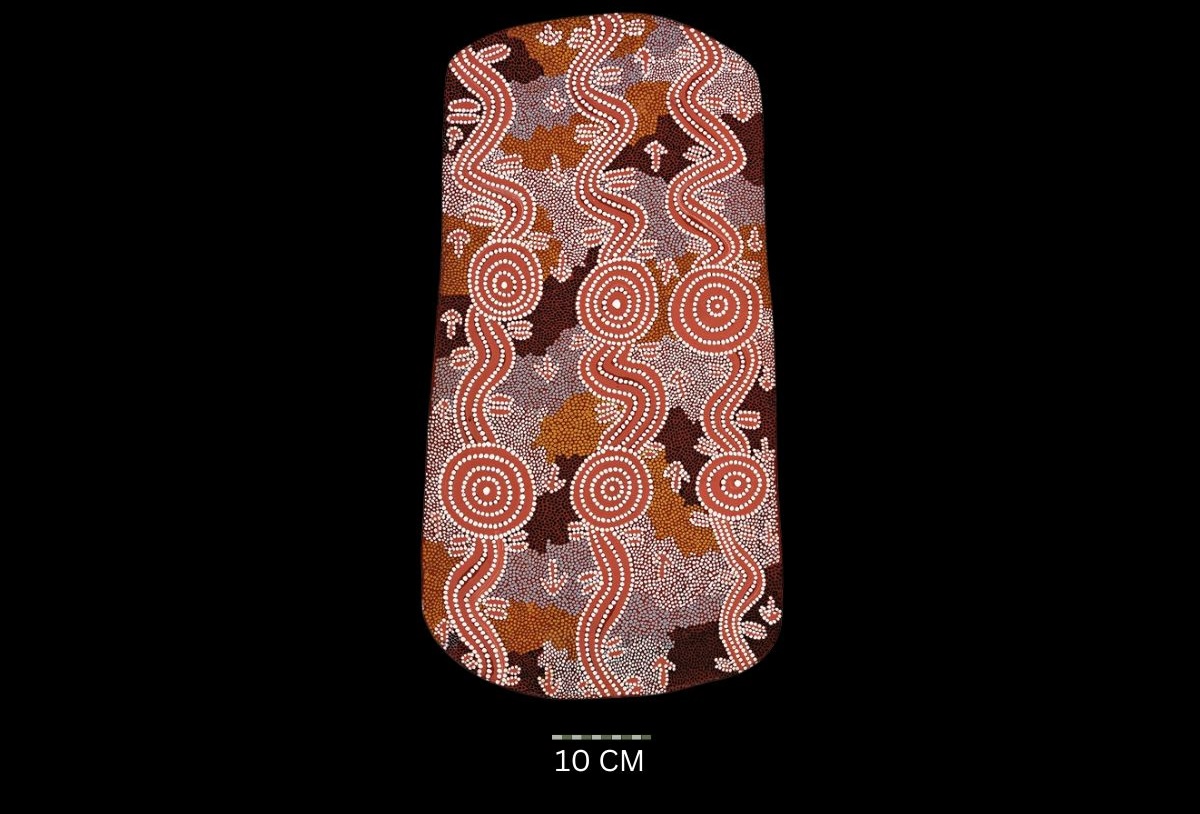
Water Dreaming at Tjikarri and Egret, c.1983
Synthetic polymer powder paint on composition board,
69 x 36.5 cm
Hammerprice: A$7,000
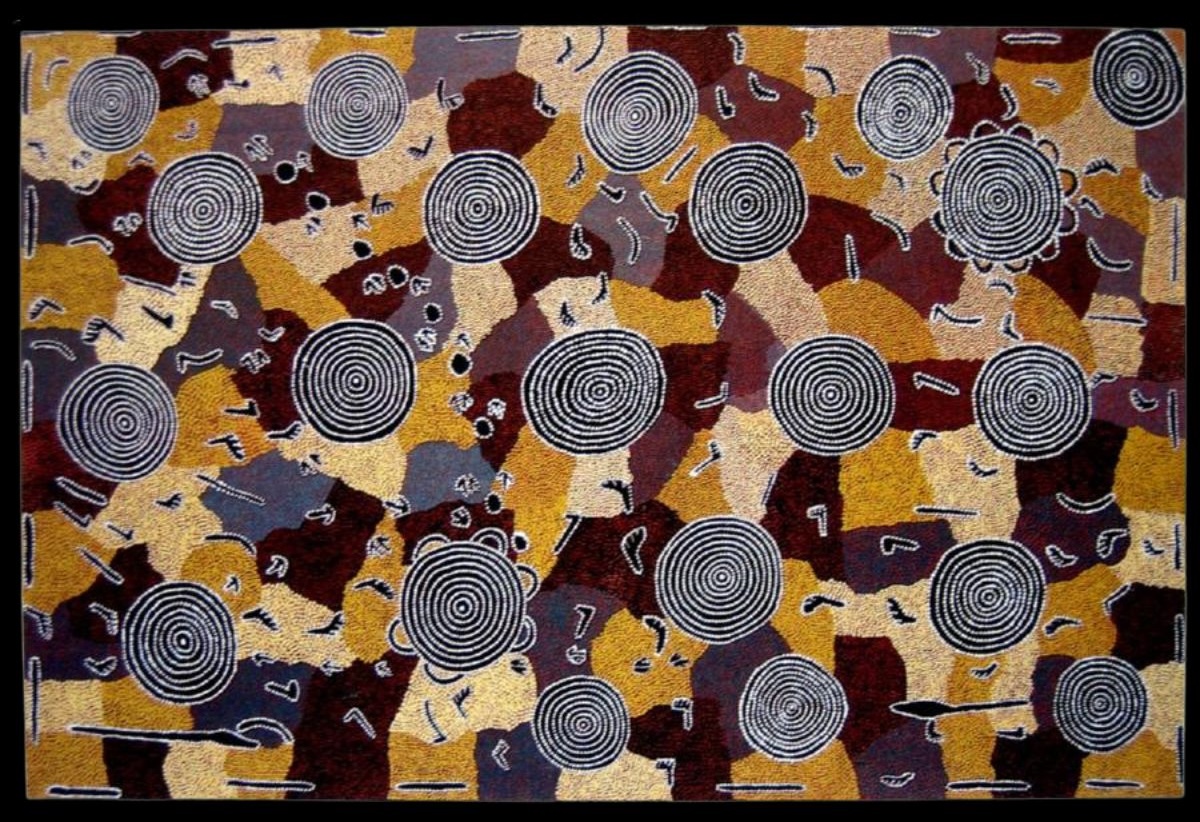
Tjikari 1985
Synthetic polymer paint on linen, bears signed Papunya Tula catalogue number JW850421 on the reverse,
183 x 122 cm
Hammerprice: A$8,000
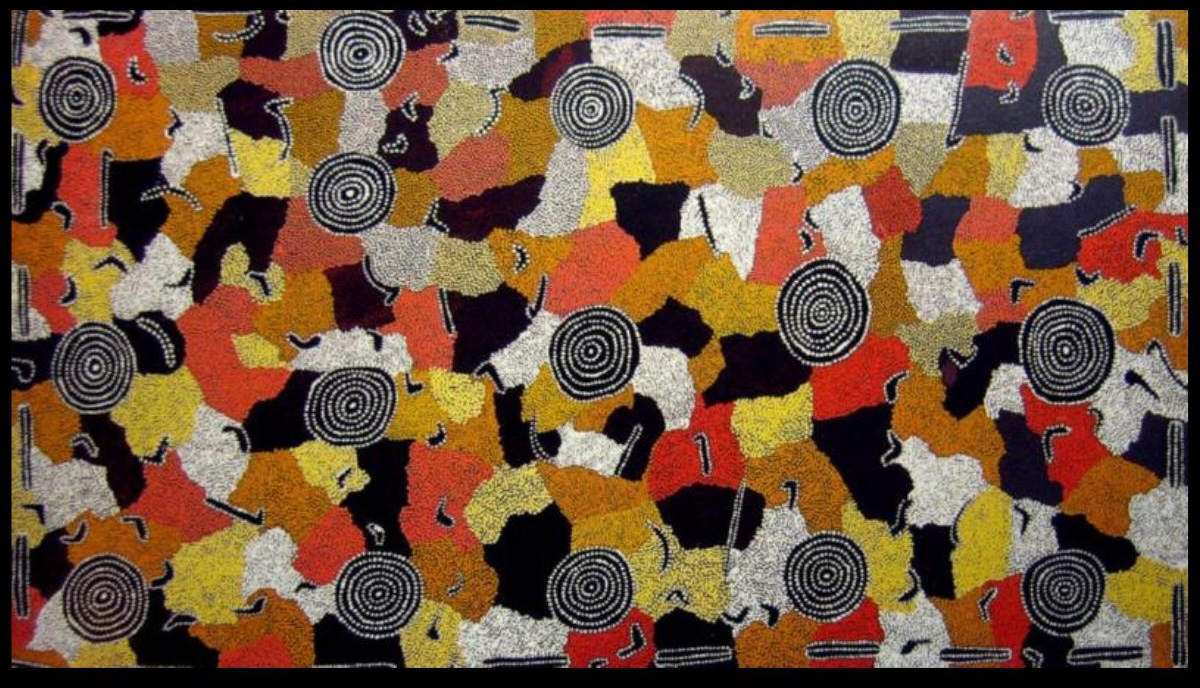
Untitled (Events Associated with the Soakage Site of Tjikari), 1988
Synthetic polymer paint on linen, inscribed verso with artist’s details and Papunya Tula cat. no,
122 x 183 cm
Hammerprice: A$11,000
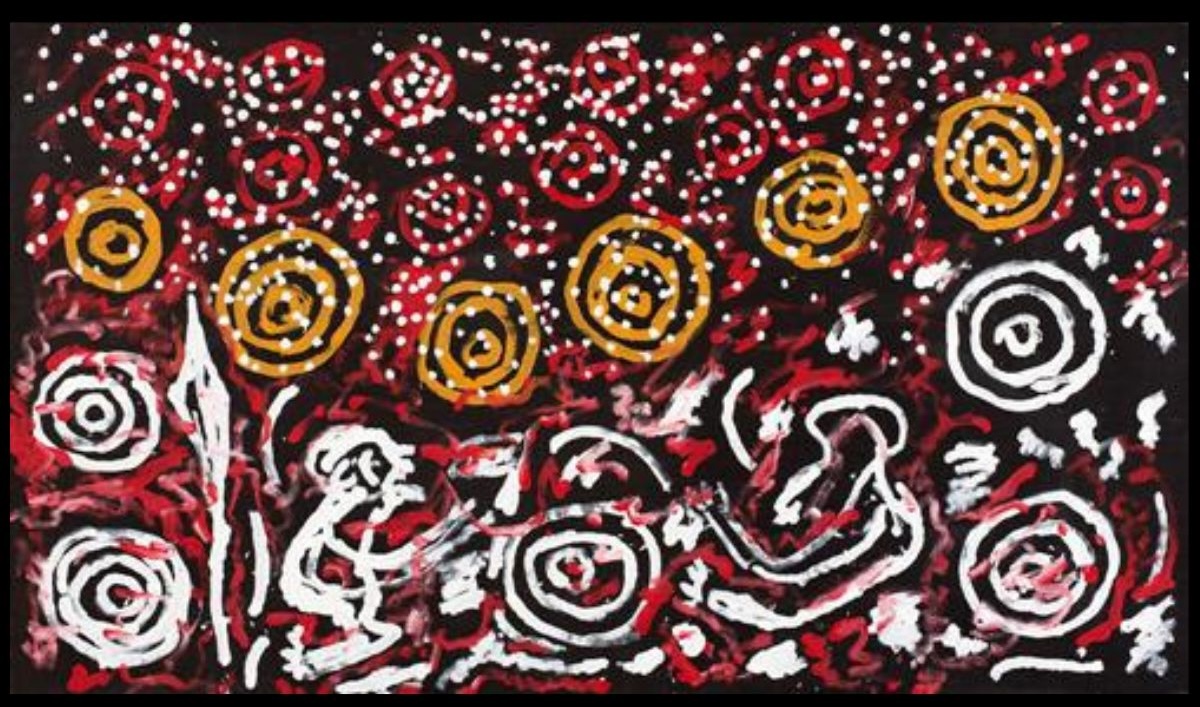
Fire Dreaming at Tjakari 1999
Acrylic on canvas, accompanied by a certificate of authenticity
213 x 122 cm
Hammerprice: A$10,000
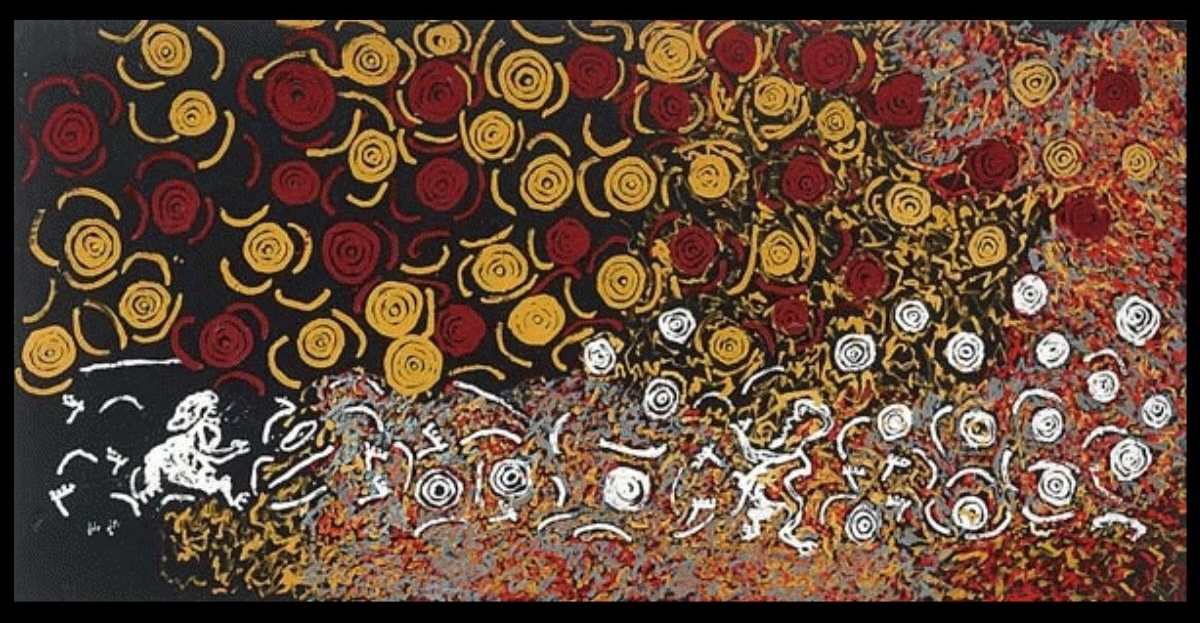
Pangkalangku Men 2001
Synthetic polymer paint on canvas,
246.5 x 500.5 cm
Hammerprice: A$62,500
All images in this article are for educational purposes only.
This site may contain copyrighted material the use of which was not specified by the copyright owner.
All images are the copyright of the Artists estate and the consignee of the artworks sold.
Johnny Warangkula Tjupurrula references
Papunya Tula Art of the Western desert
Other Articles that show values achieved by other Papunya artists
Tim Leura Tjapaltjarri Artworks
Mick Namarari Tjapaltjarri Artworks
Selling at Auction
Selling artwork at auction can sometimes yield favorable results, particularly when multiple interested bidders compete, potentially driving up the final sale price. This environment can occasionally lead to inexperienced buyers bidding more than they originally intended, which can benefit the seller in competitive situations.
In the niche market of Aboriginal art however this is the exception with mosy potential bidders being knowledgable and well researched
Downside to Selling at Auction
Auctions come with inherent limitations. One significant drawback is that they do not achieve the full market potential of an artwork. For instance, if the most motivated buyer values a piece at $10,000 but is aware of a 30% buyer’s premium, they may only be willing to place a maximum bid of $7,000. Meanwhile, the second most motivated buyer who values the work at $6,000 may only bid up to $4,200. As a result, bidding would likely stop at $4,200, and the winning bid might be only one bid higher, say $4,300. After deducting seller’s fees (10%-29%), the final amount received by the seller will be less than $3,900—far below the artwork’s perceived value.
Another risk associated with auctions is limited reach. Potential buyers who may have been willing to pay significantly more might simply not be aware of the auction, not have the money at the time or unable to participate at the scheduled time. This can result in missed opportunities and lower-than-expected sale outcomes.
This dynamic explains why many art dealers are able to purchase artworks at auction and resell them privately at a profit. Their ability to match artworks with motivated collectors, often through targeted private outreach, allows them to capitalize on the limitations of the auction model.
Private Treaty Sales
An alternative to auction is selling through private treaty. This method involves engaging a dealer to offer the artwork directly to known collectors who collect or have a strong interest in a particular artist or genre. The sale is conducted at price agreed buy the dealer and seller, allowing for a more targeted and lucrative transaction.
One key advantage of private treaty sales is flexibility. If the dealer is unable to secure a buyer through private channels, the artwork can still be offered at auction later. This approach often ensures better control over the sales process and often result in a more favorable outcome for the seller, especially when maximizing value is the priority.
I specialise in private treaty sales and if you have a Johnny Warangkula Tjupuurula artwork and you would like to know what I think it could be sold for, please send me an image dimensions and provenance.
